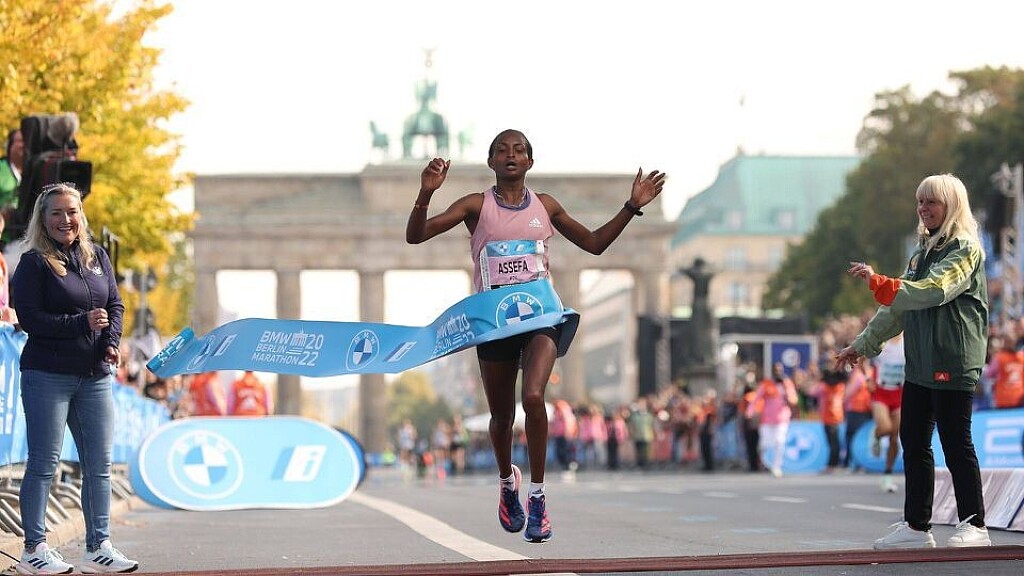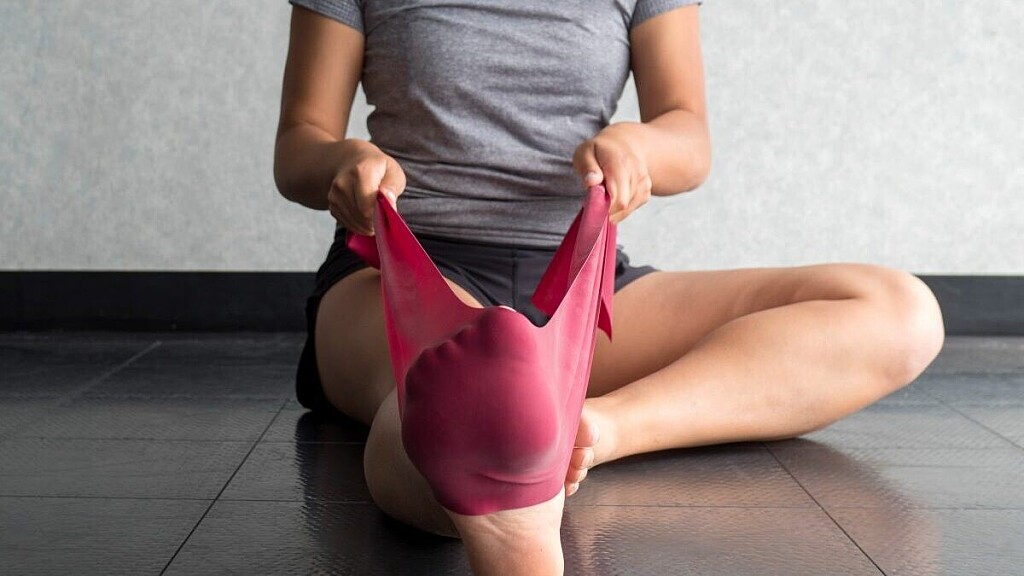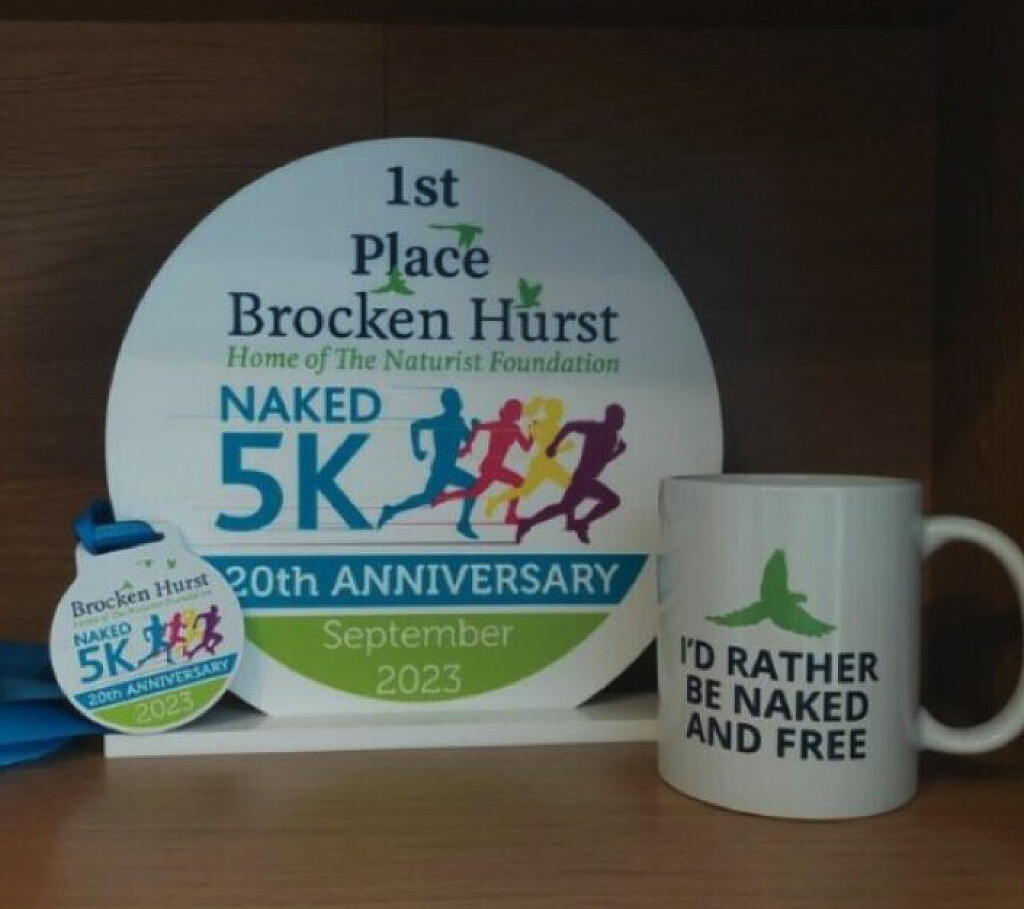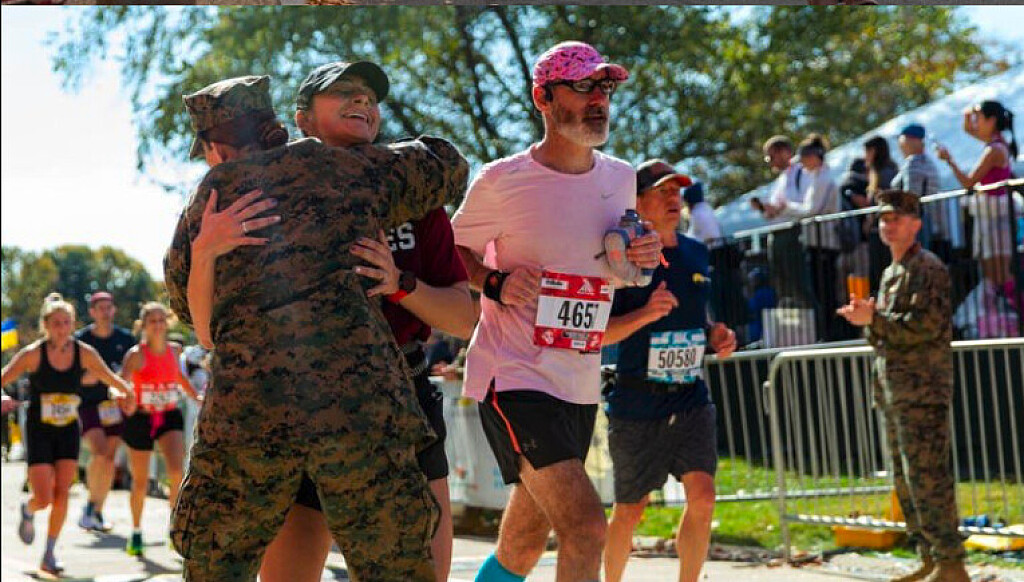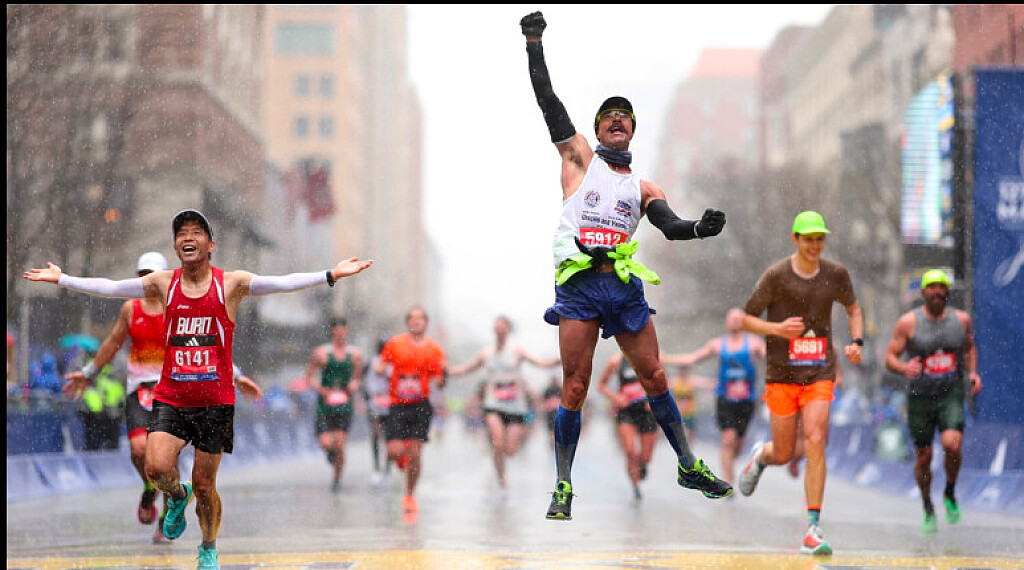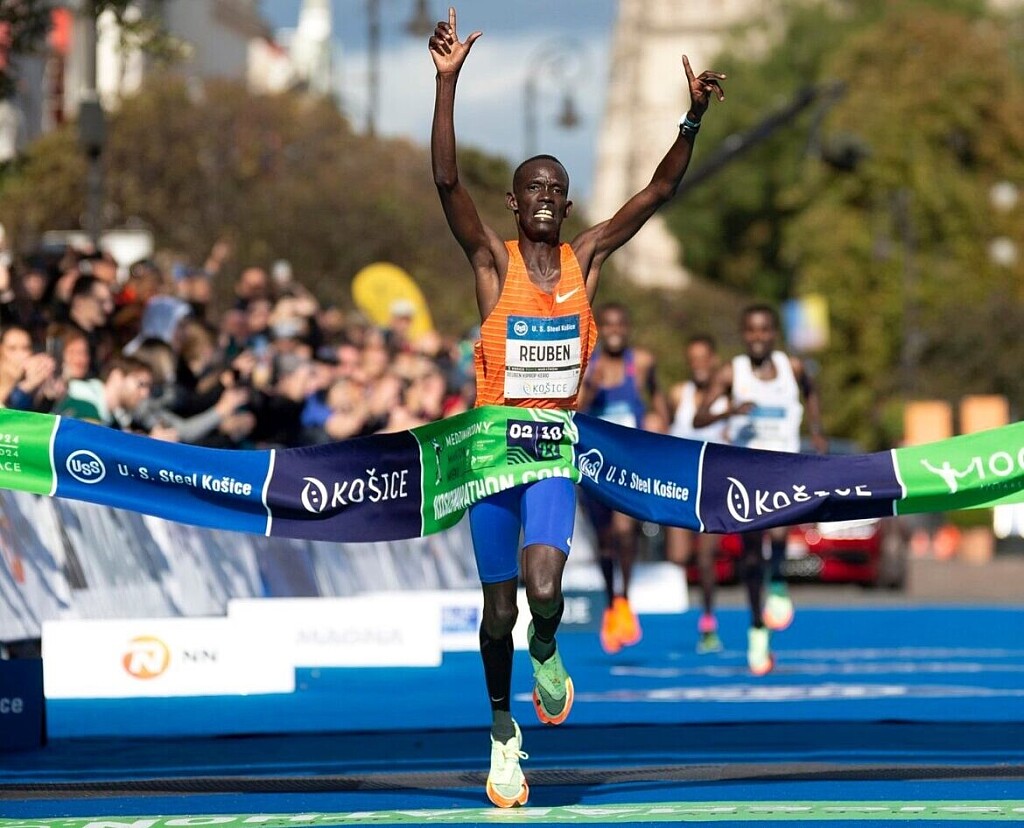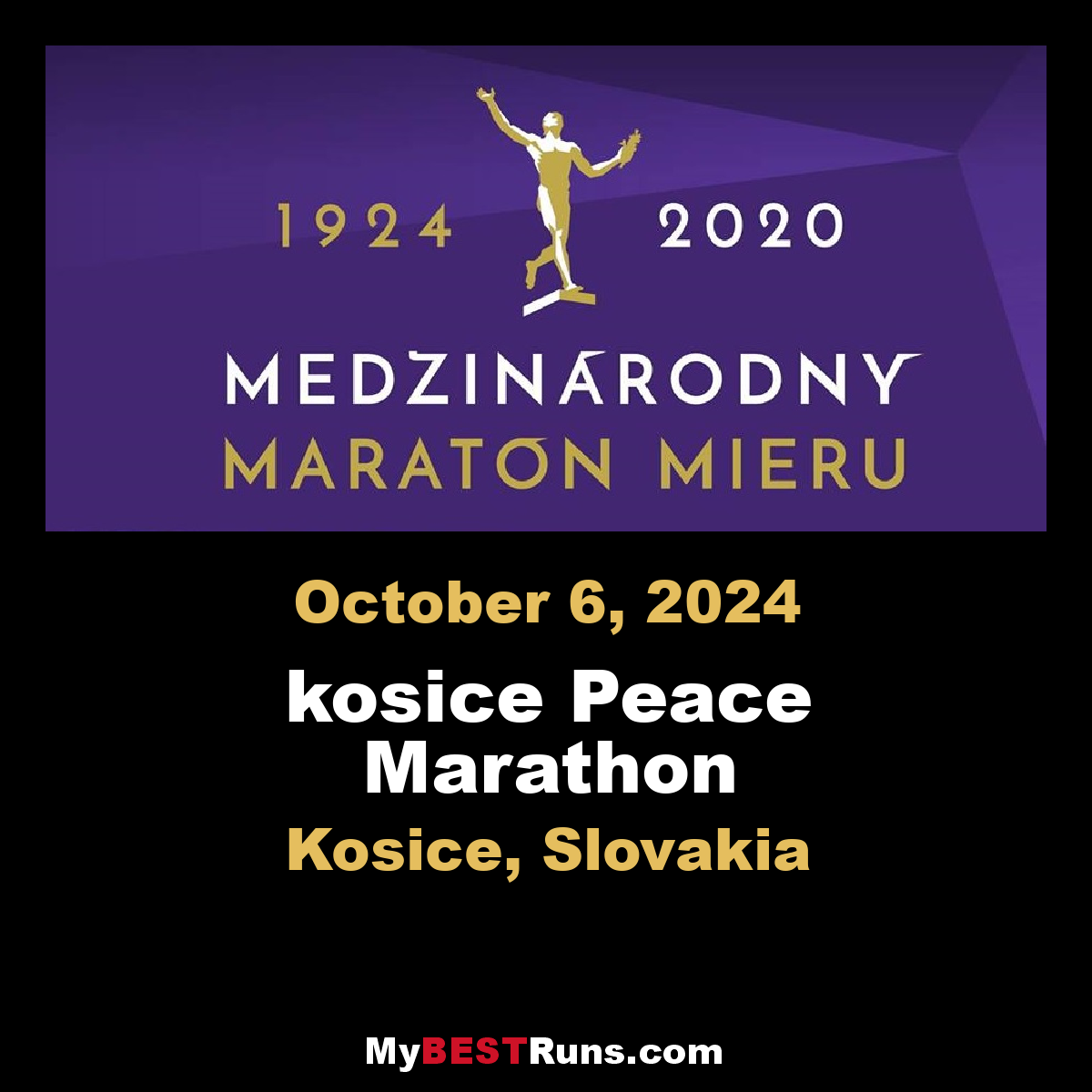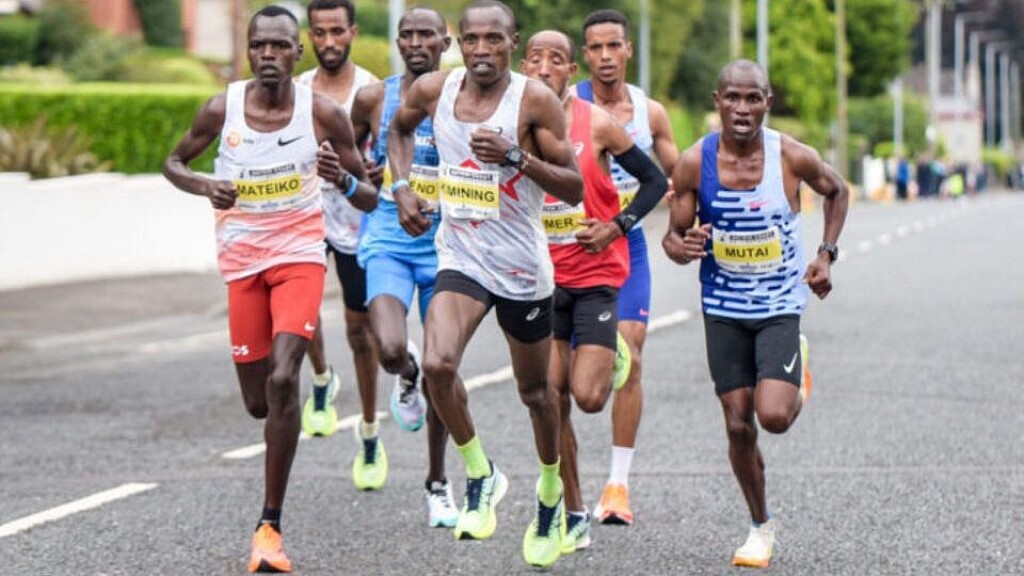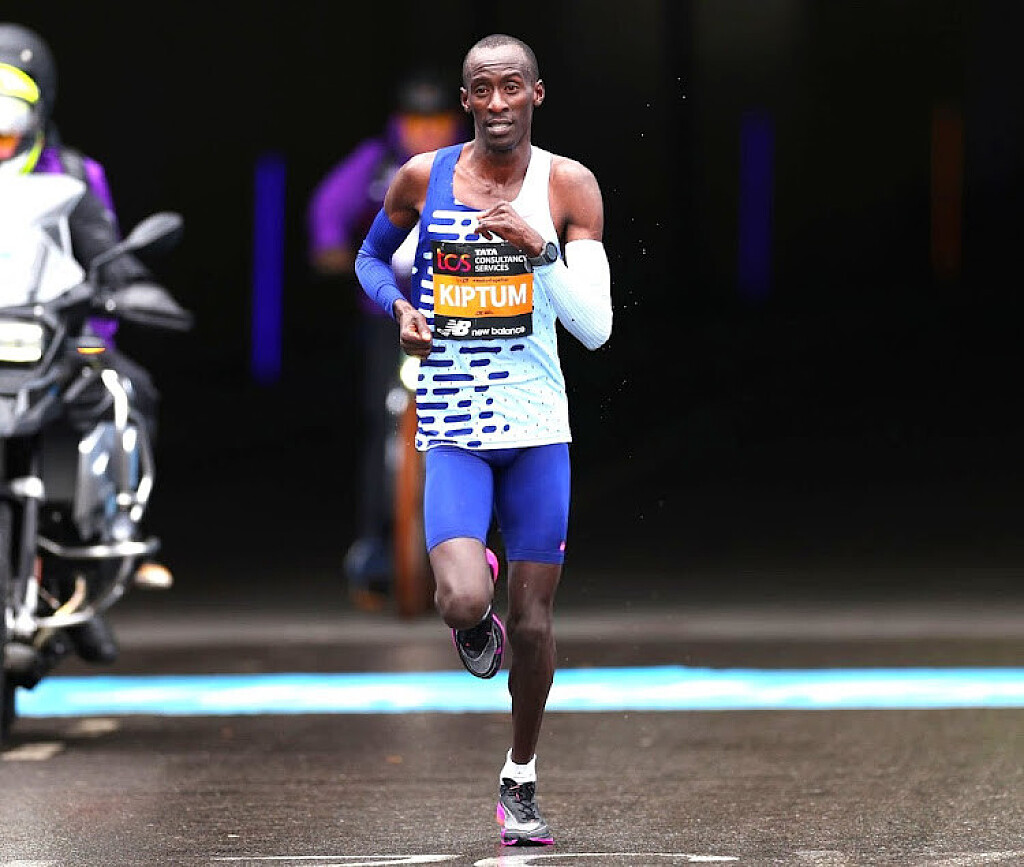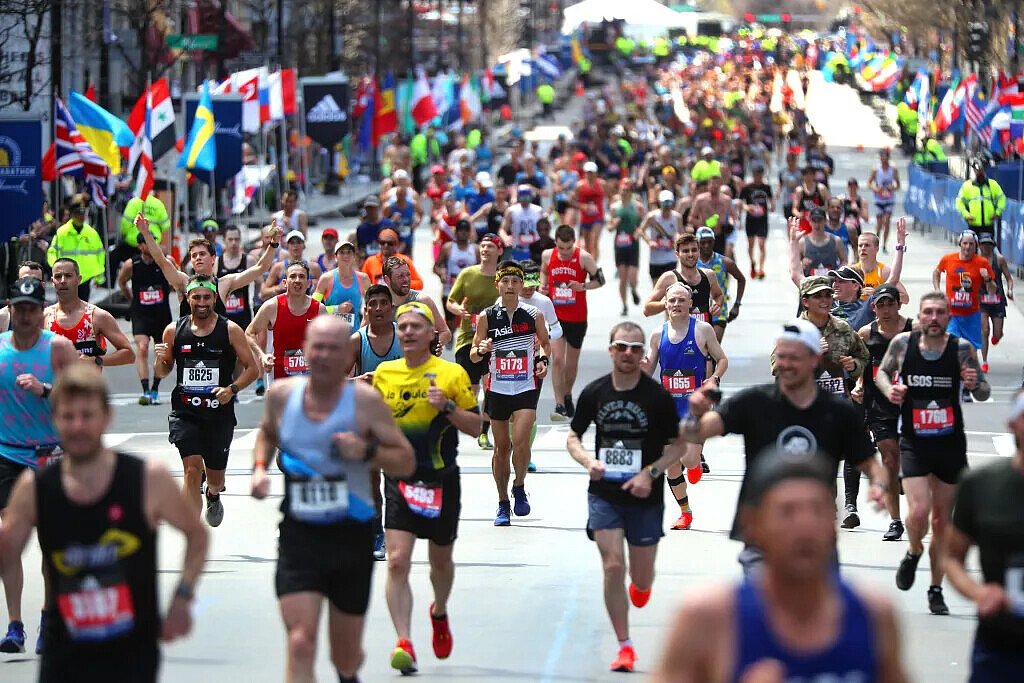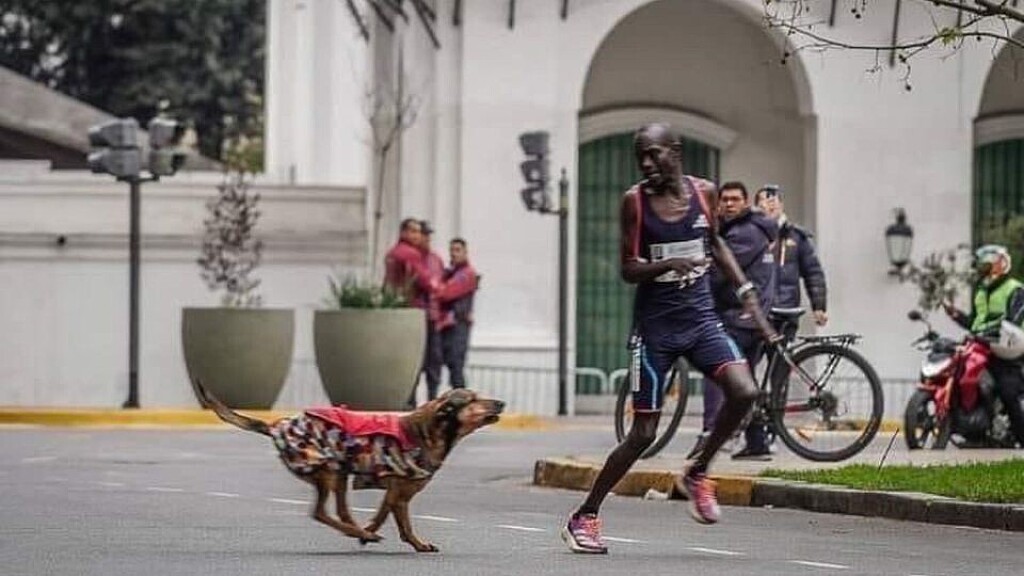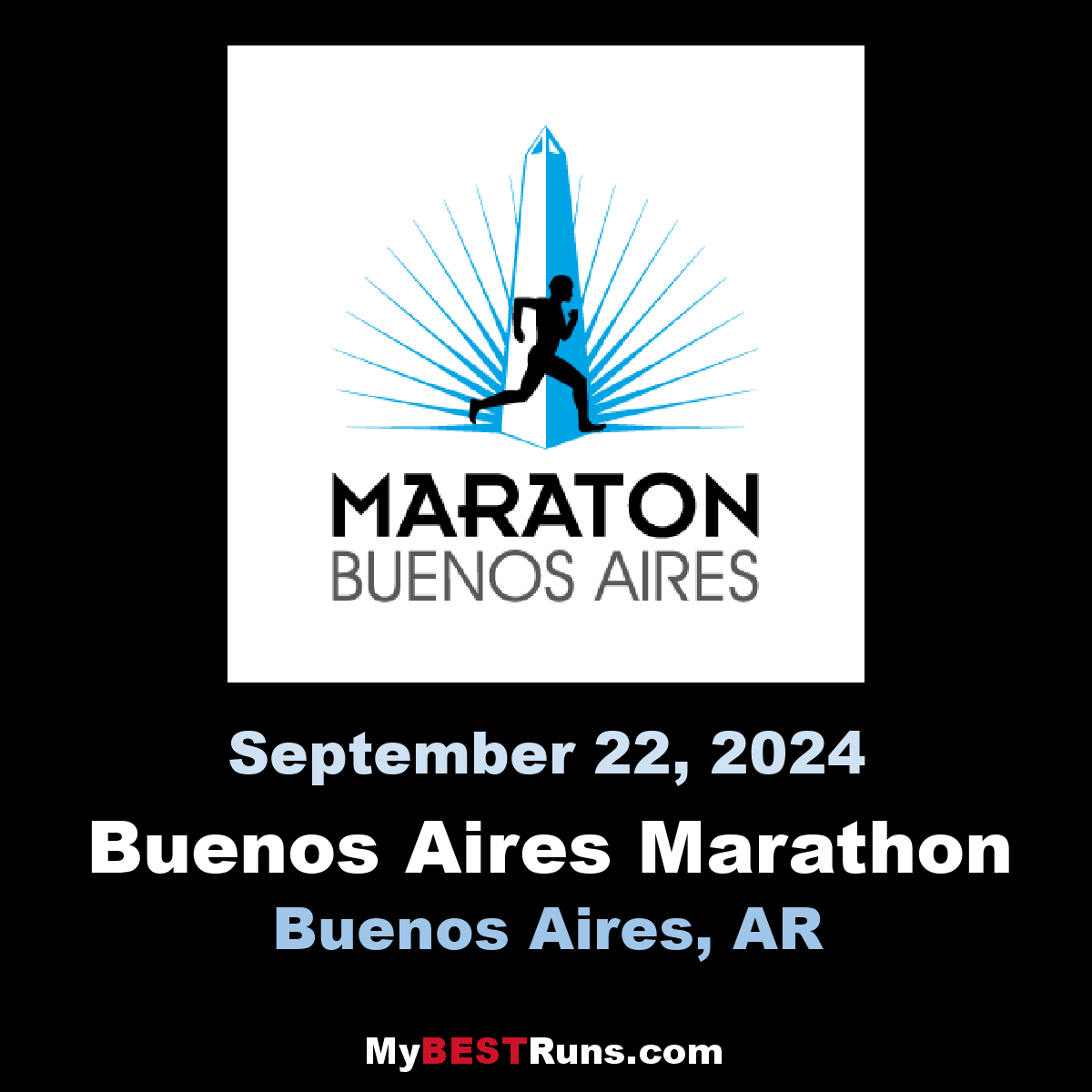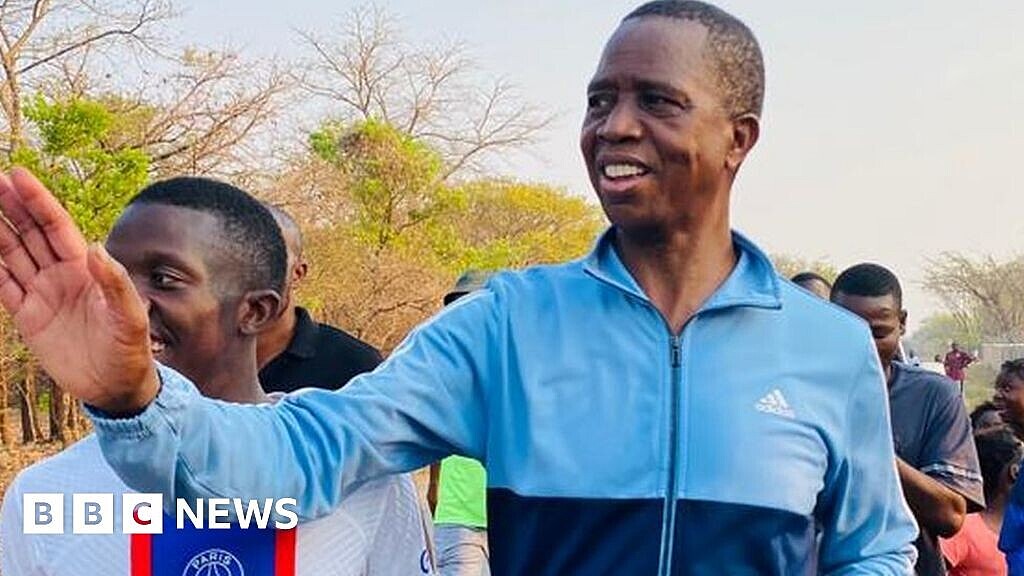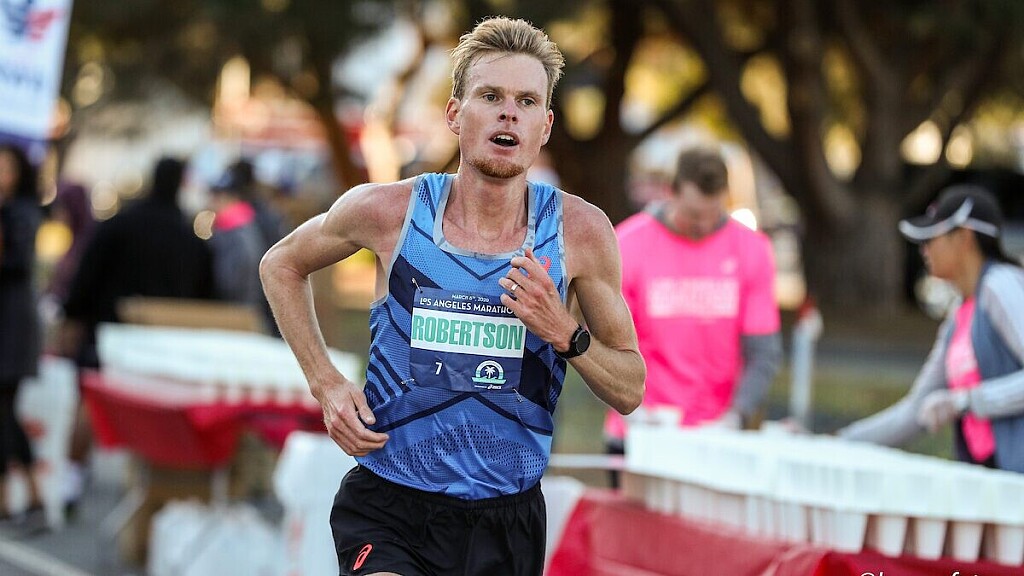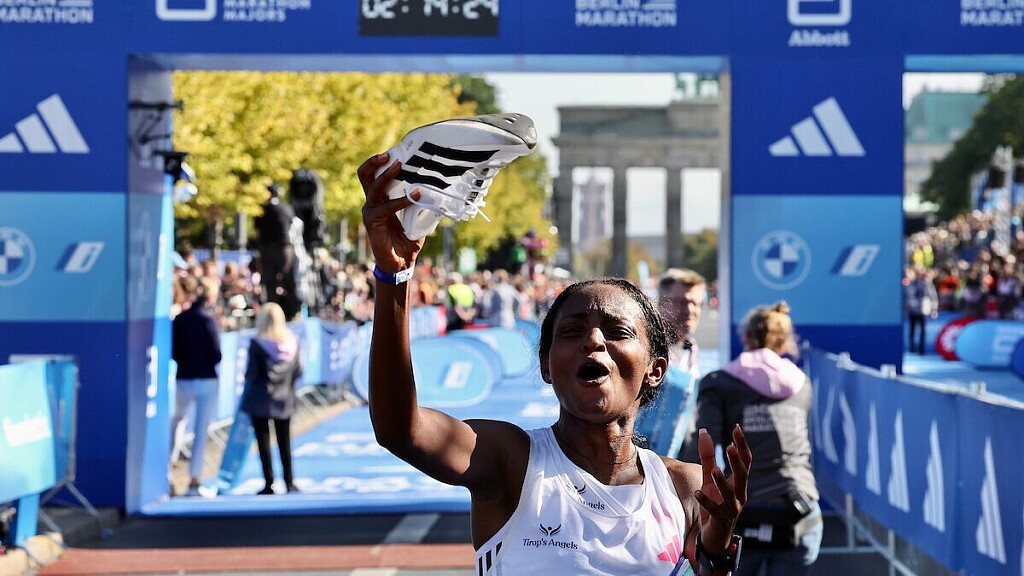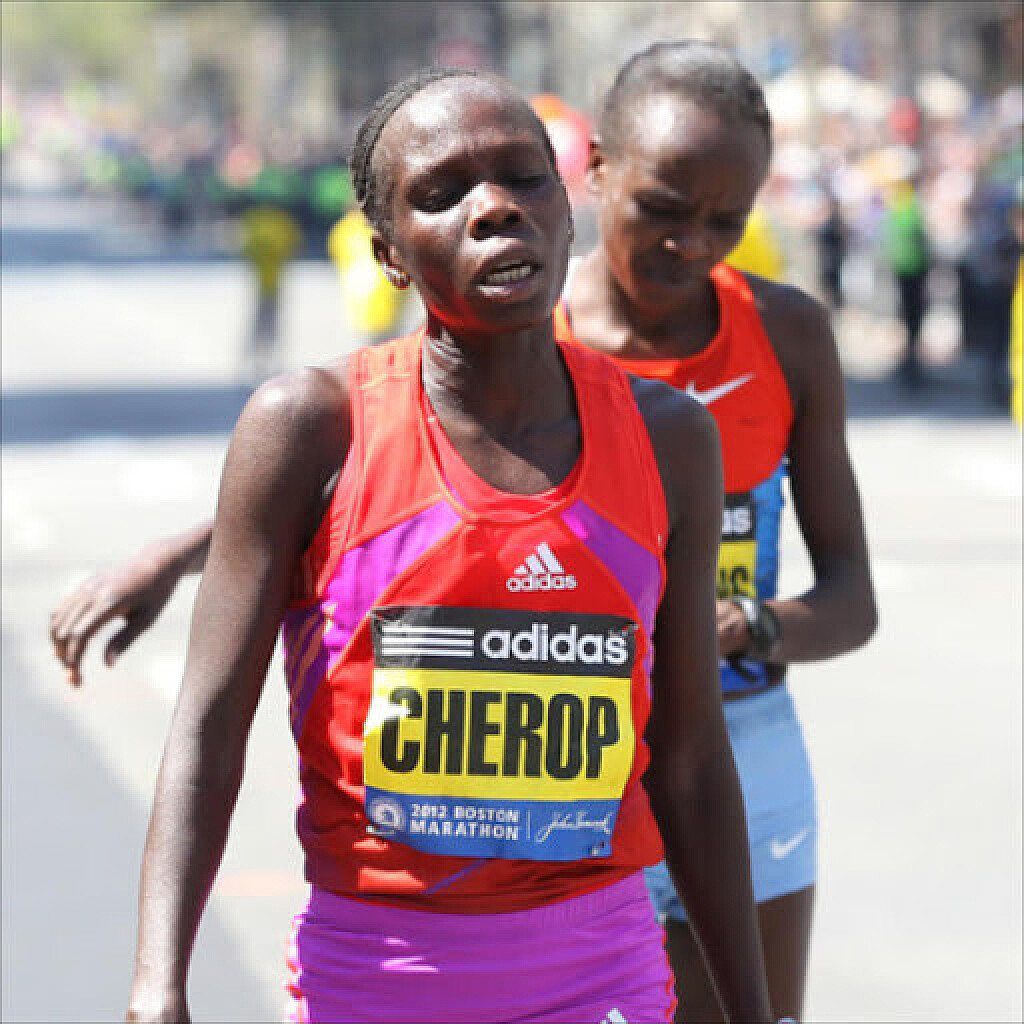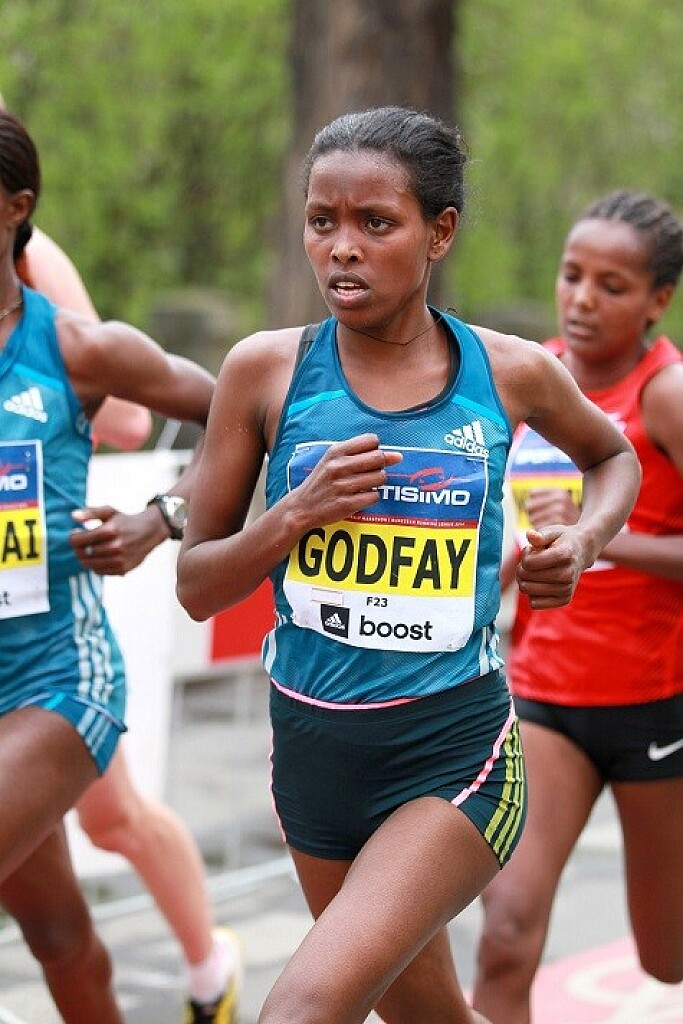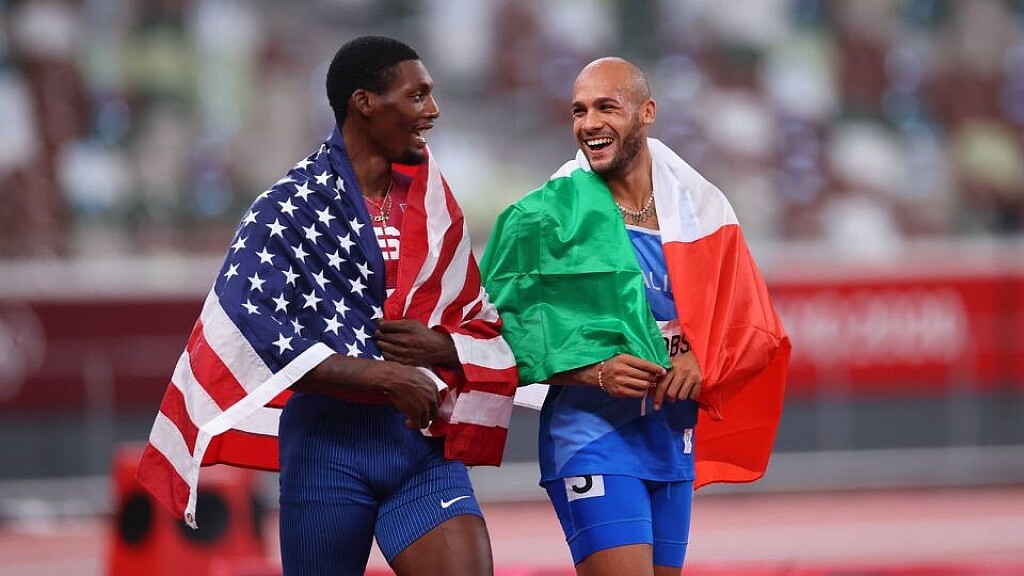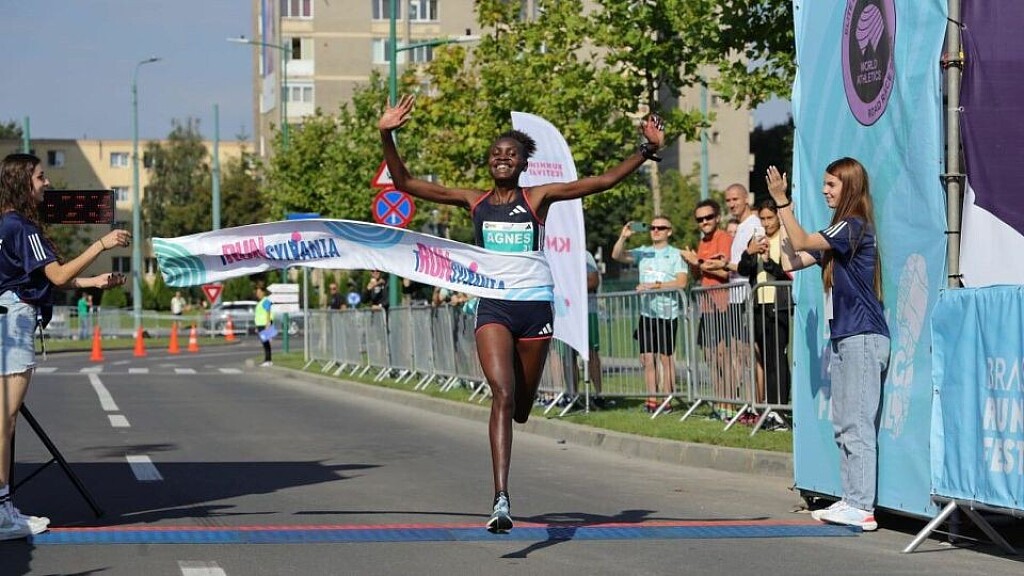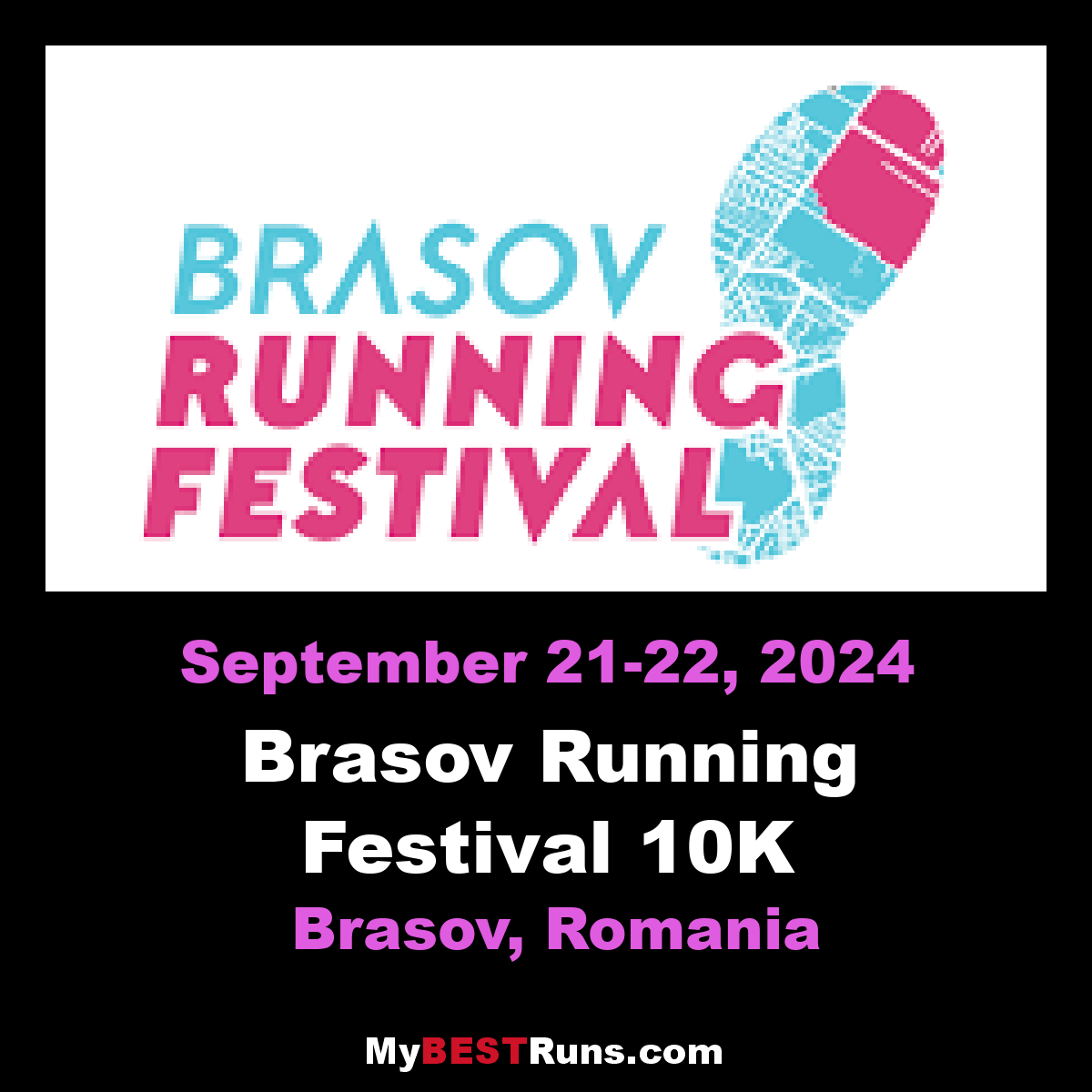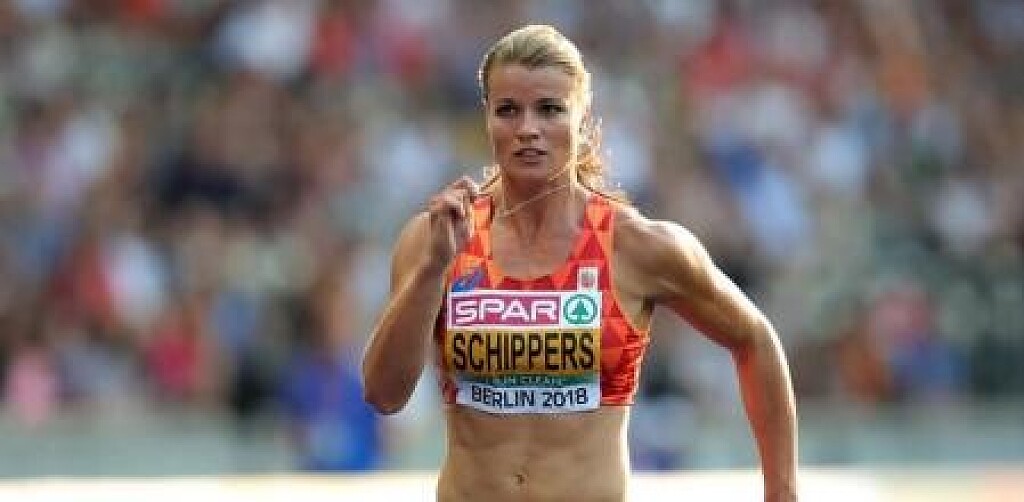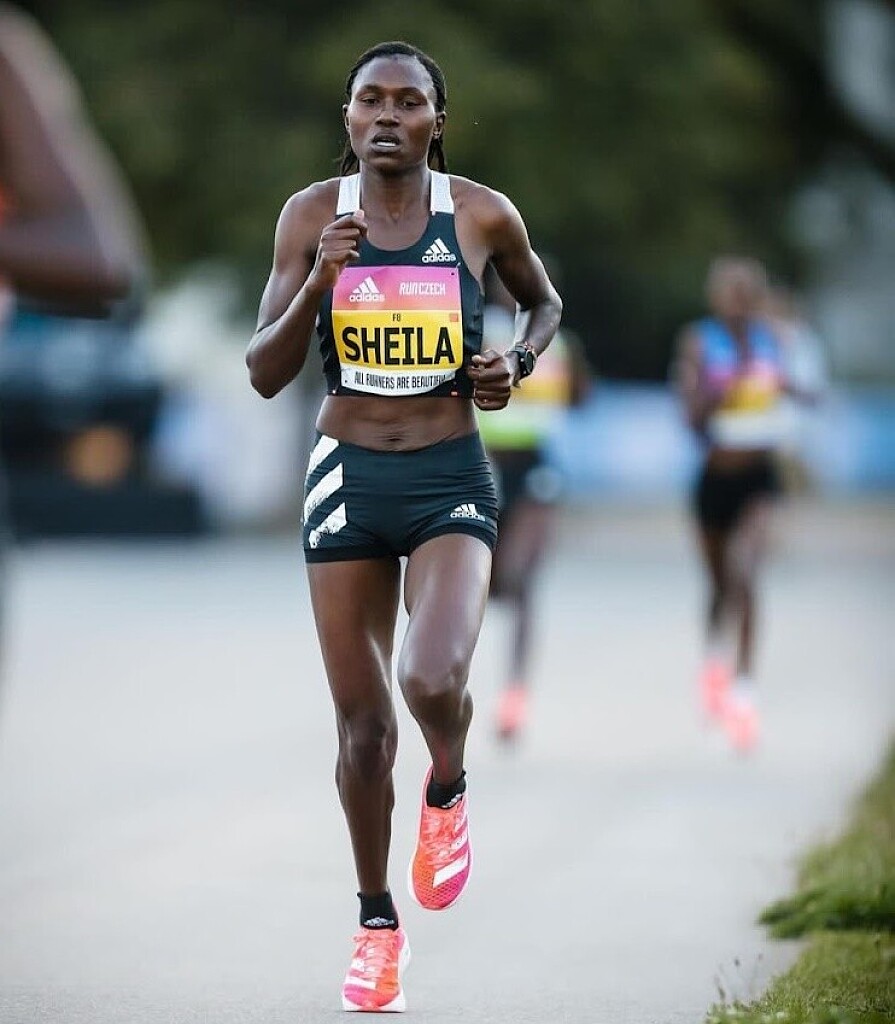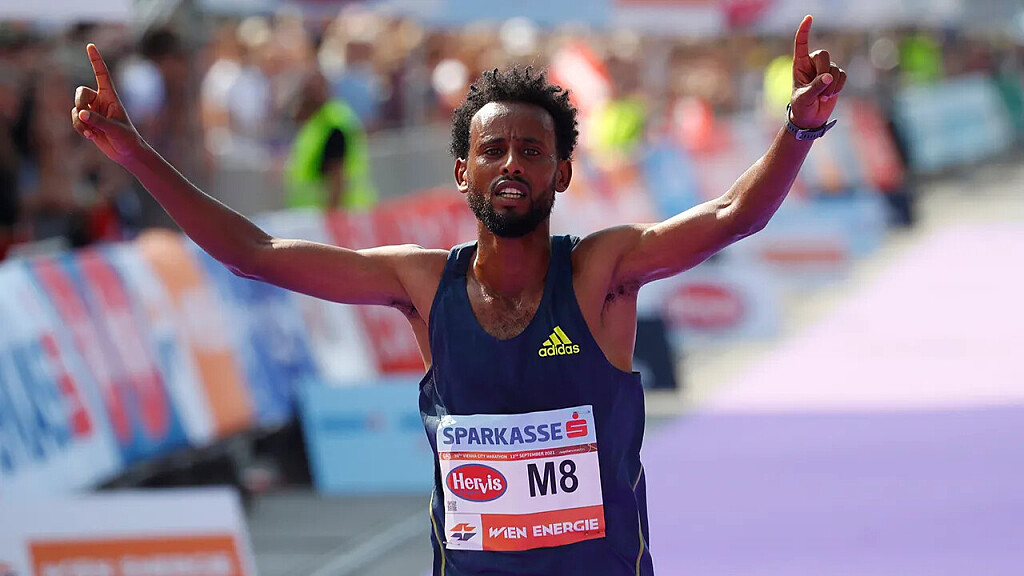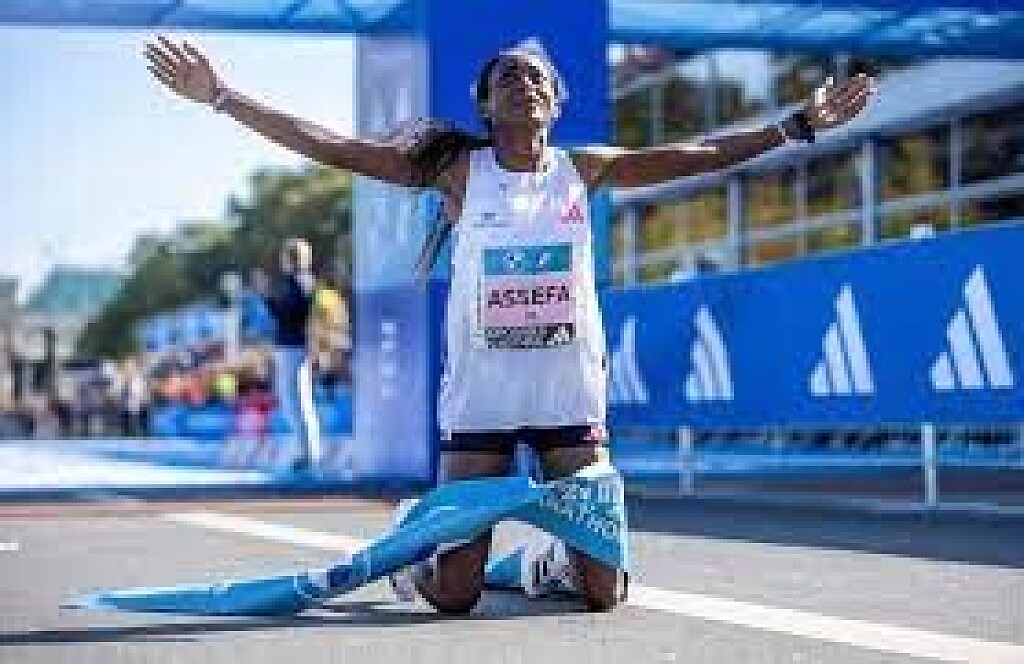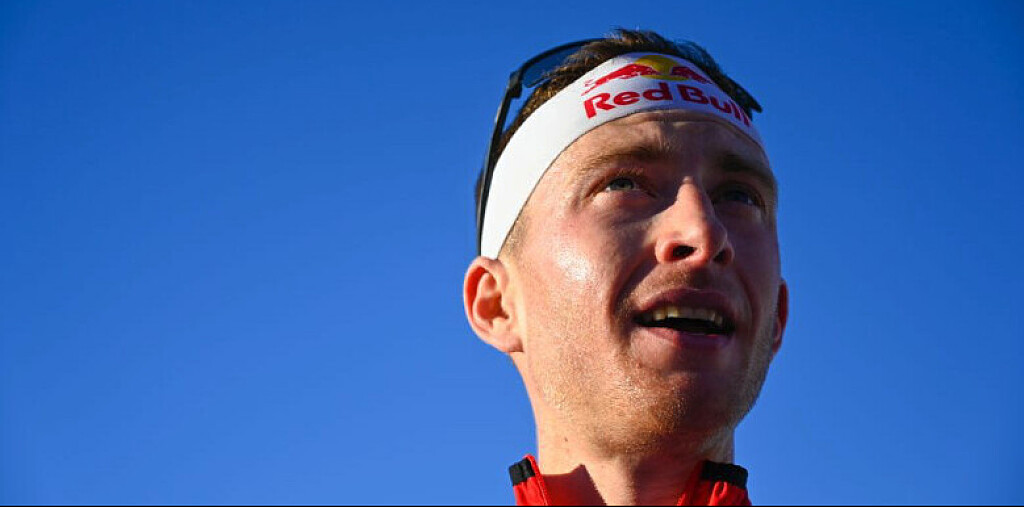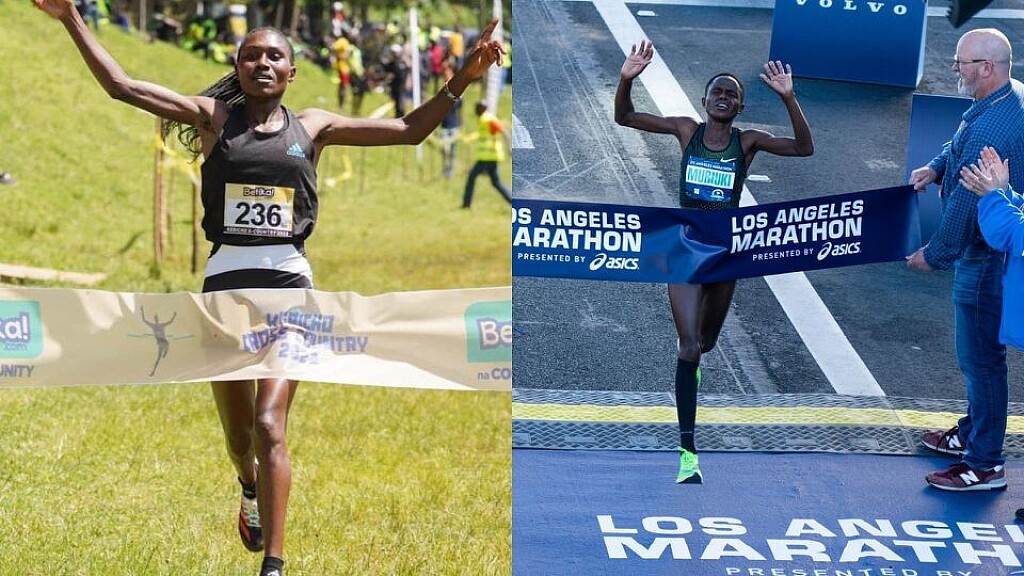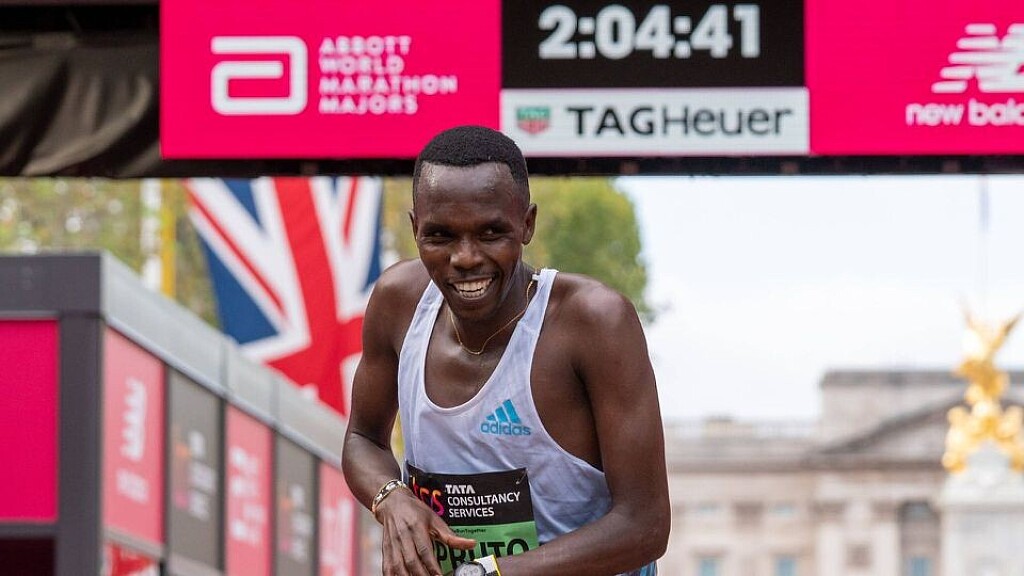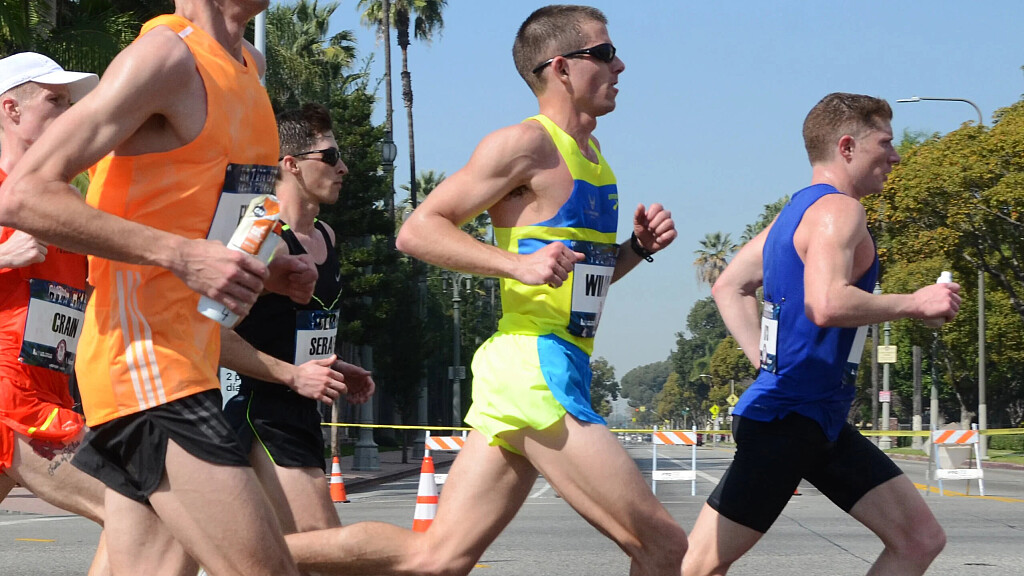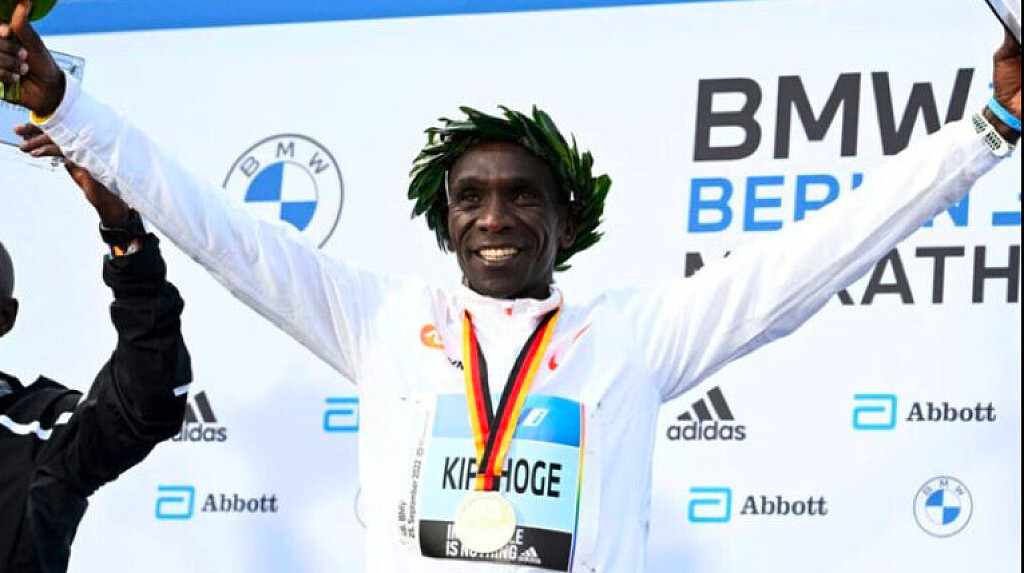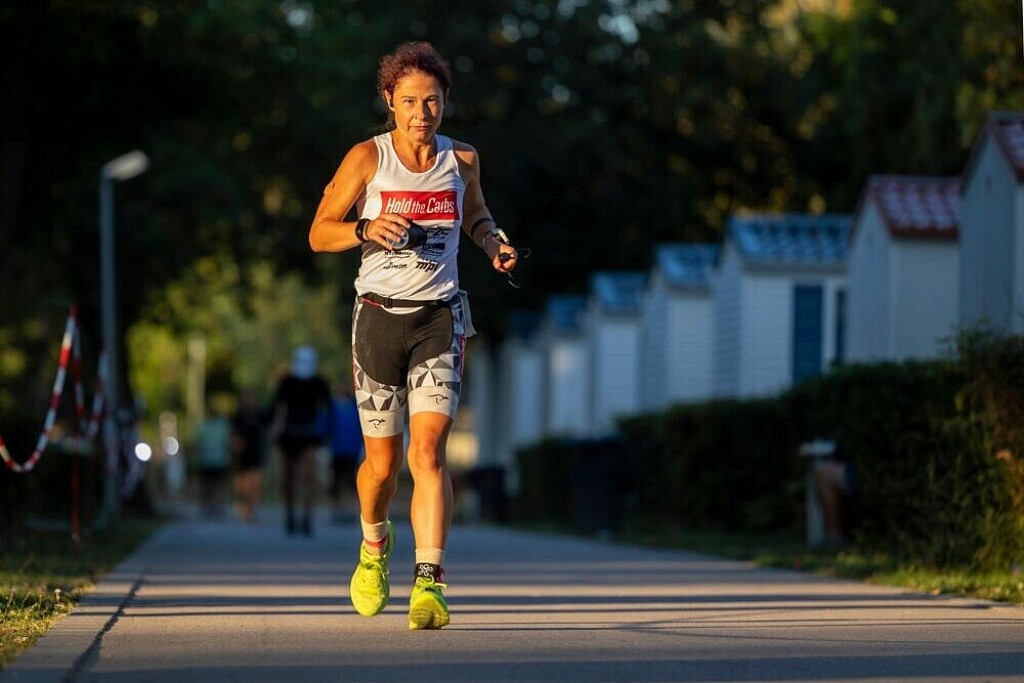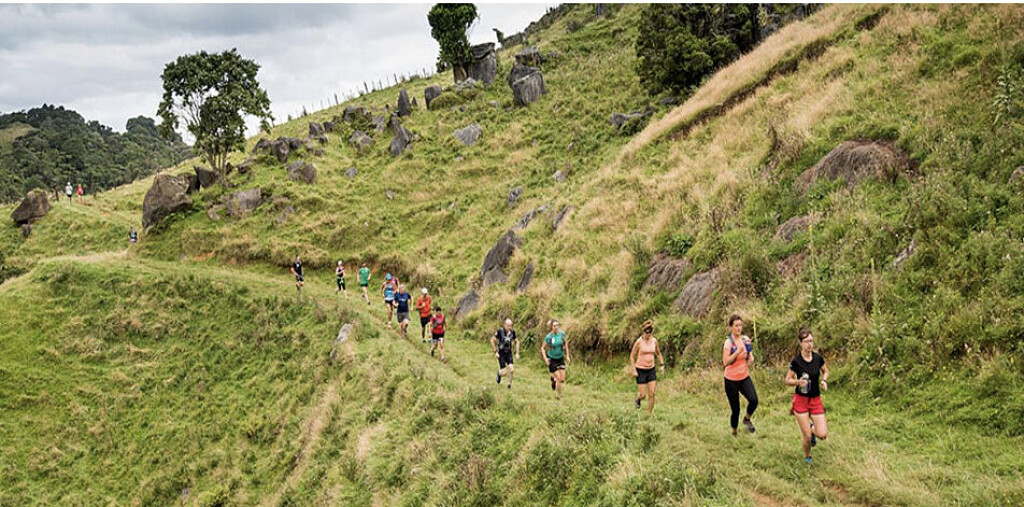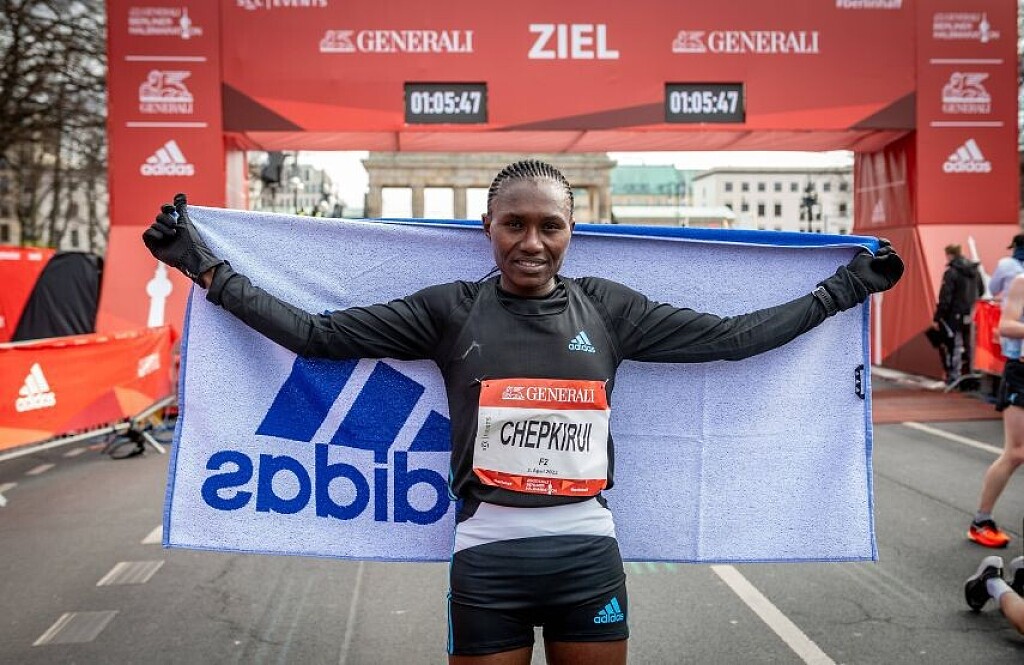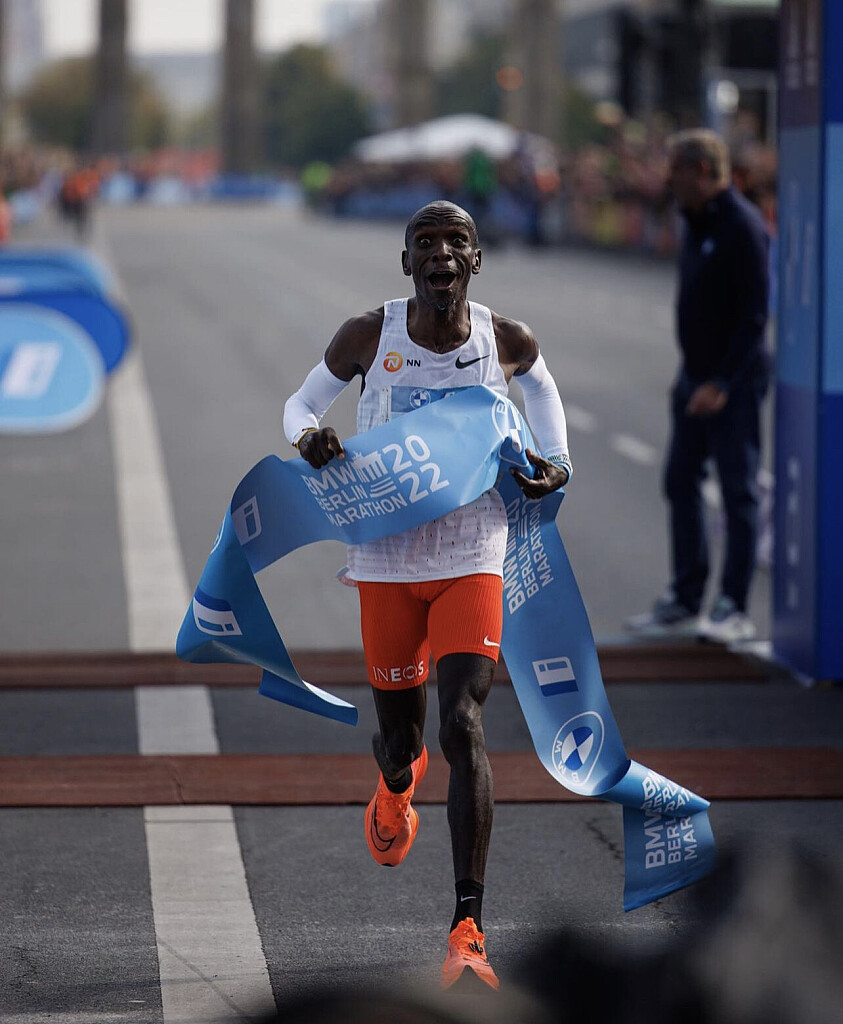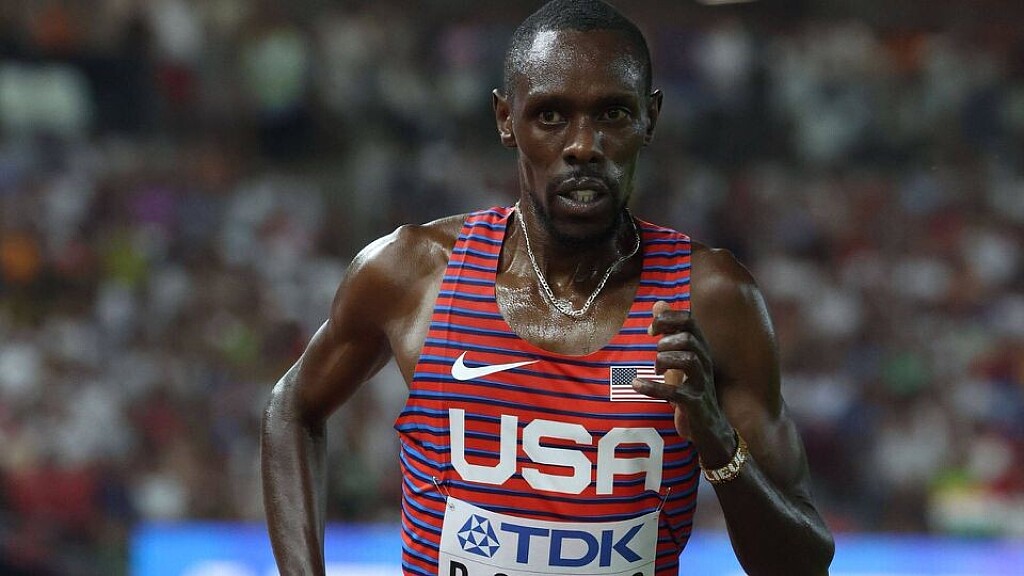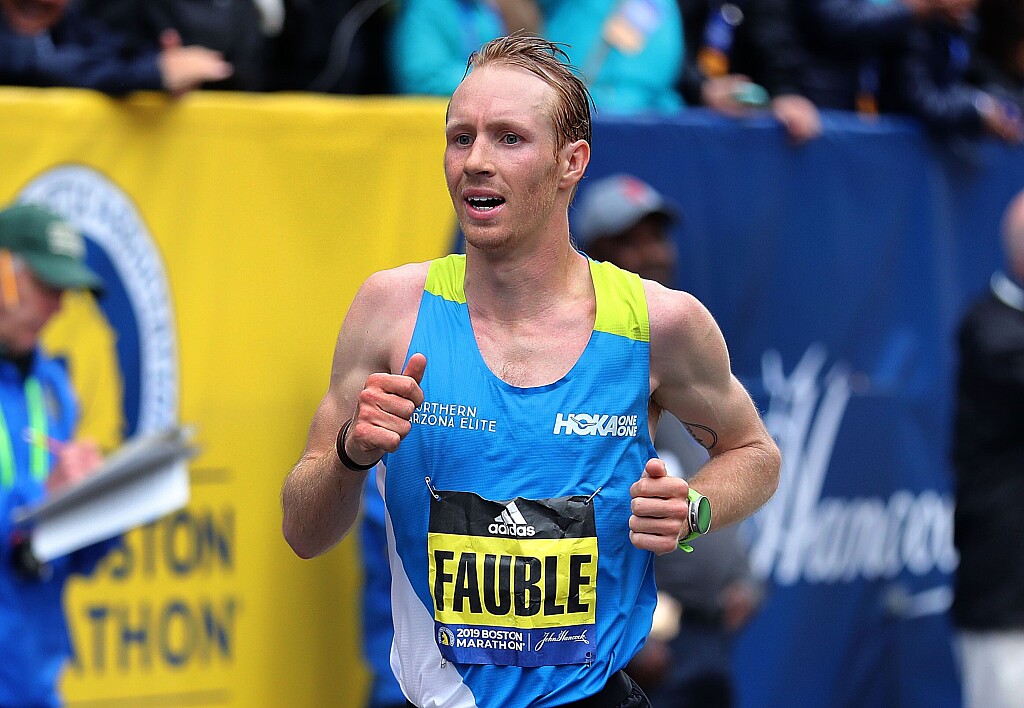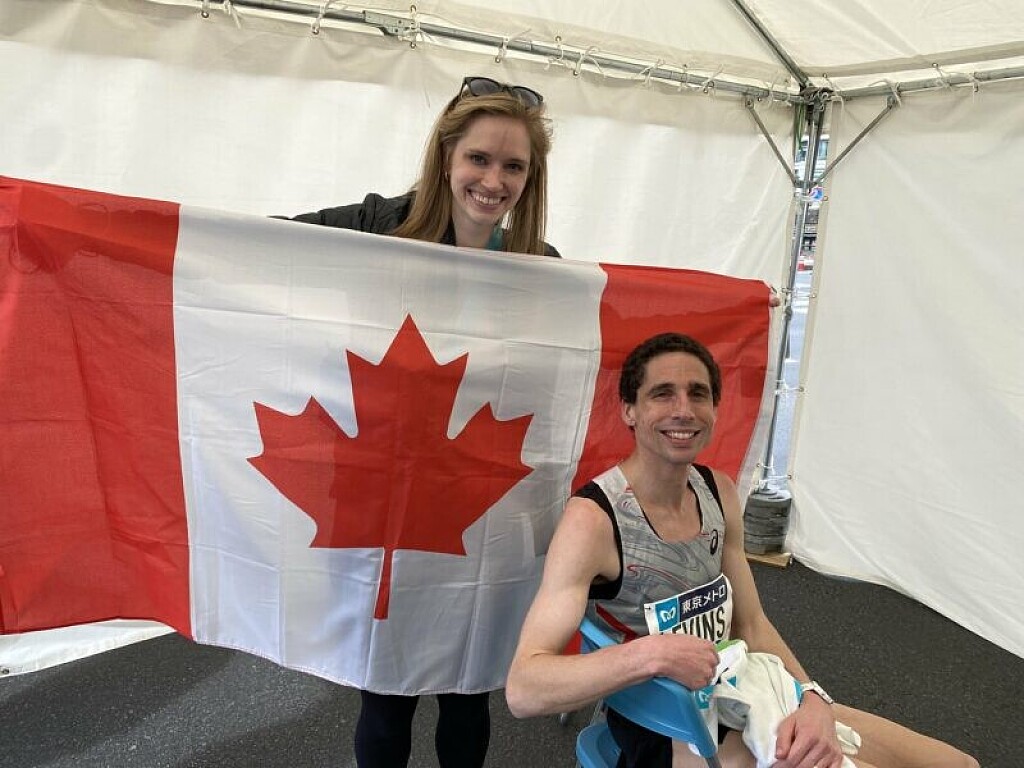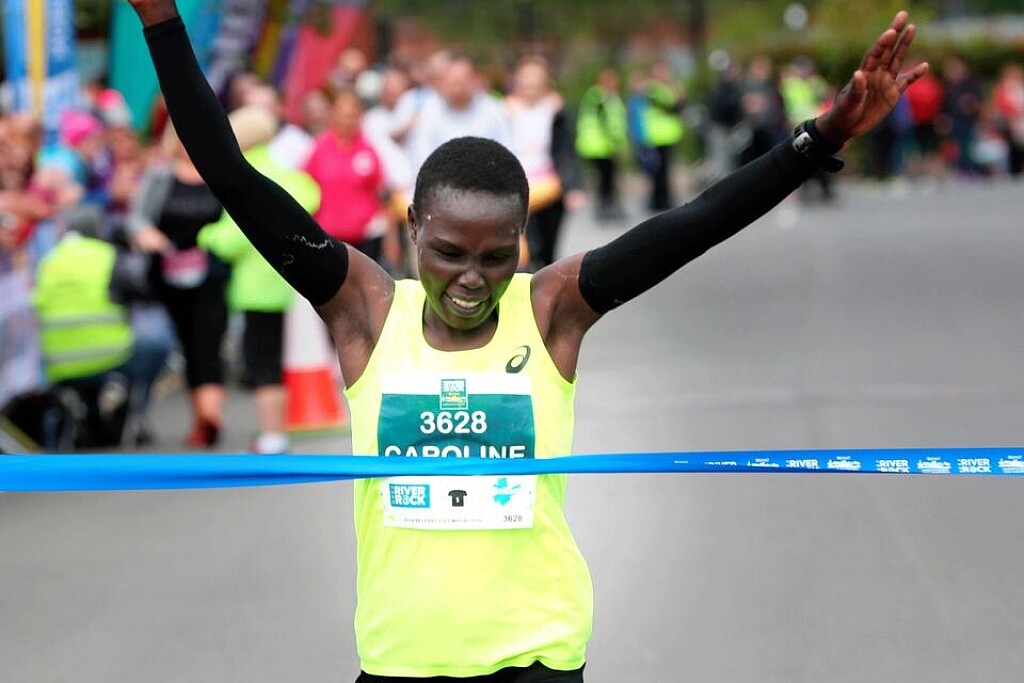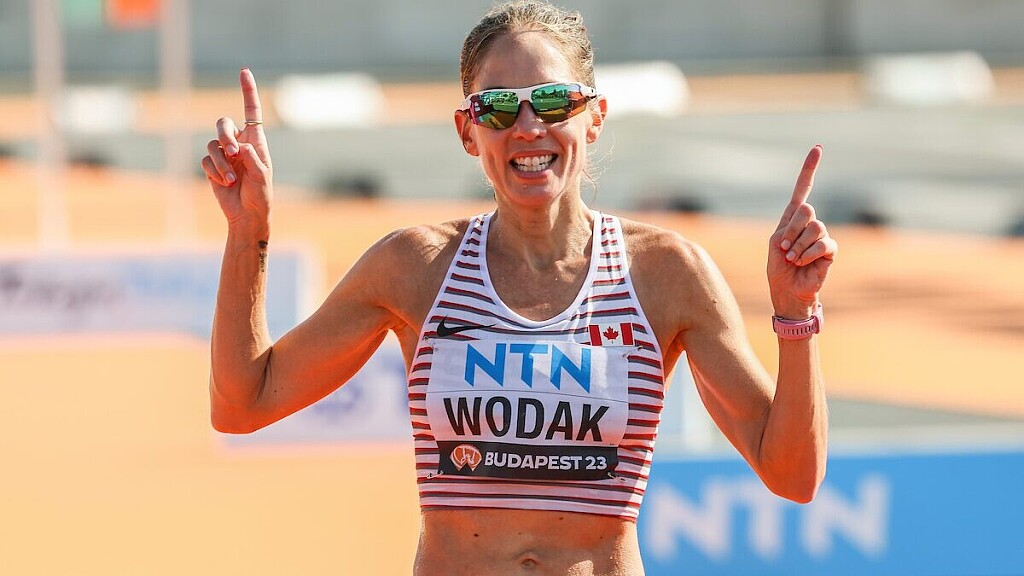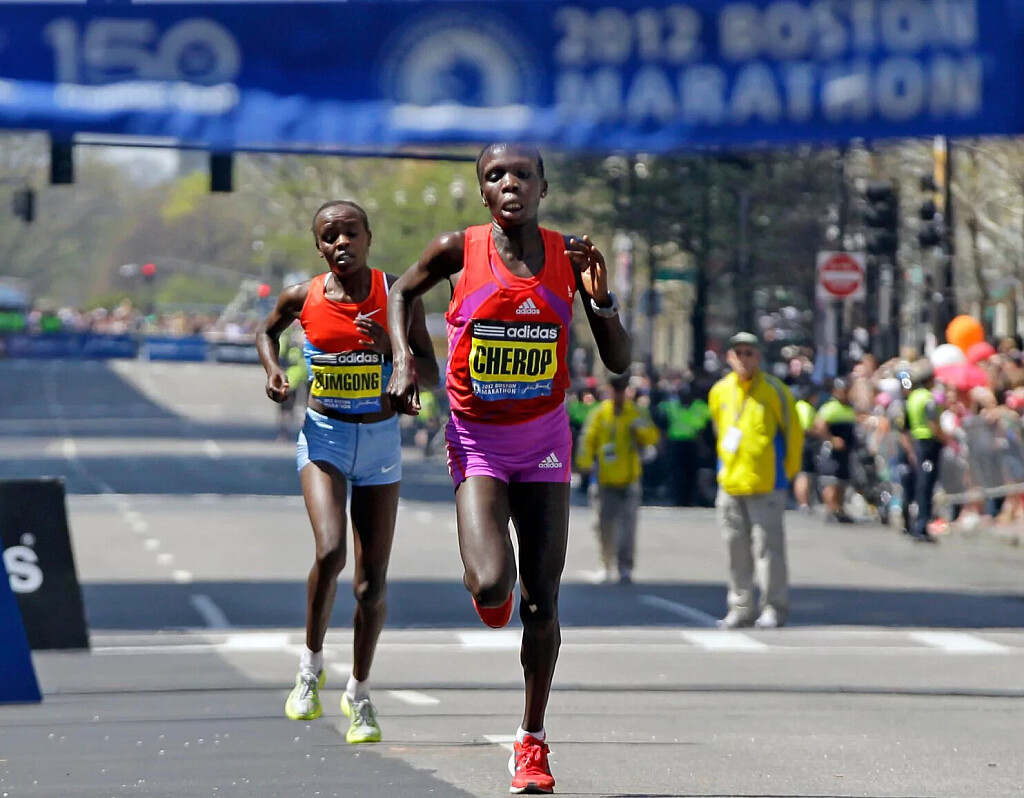Running News Daily
Running News Daily is edited by Bob Anderson in Mountain View, California USA and team in Thika Kenya, La Piedad Mexico, Bend Oregon, Chandler Arizona and Monforte da Beira Portugal. Send your news items to bob@mybestruns.com Advertising opportunities available. Over one million readers and growing. Train the Kenyan Way at KATA Running Retreat Kenya. (Kenyan Athletics Training Academy) in Thika Kenya. Opening in june 2024 KATA Running retreat Portugal. Learn more about Bob Anderson, MBR publisher and KATA director/owner, take a look at A Long Run the movie covering Bob's 50 race challenge.
Index to Daily Posts · Sign Up For Updates · Run The World Feed
Tigst Assefa on how career threatening injury spurred her to breaking world marathon record
Ethiopian marathoner Tigst Assefa defied a career-threatening injury to smash the world record and has revealed the relentless journey from setback to historic triumph.
Ethiopian marathoner Tigst Assefa left the world in awe with her remarkable feat, smashing the women's world record in Berlin last Sunday by clocking an astonishing two hours, 11 minutes, and 53 seconds.
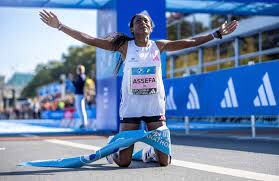
However, her journey to this historic achievement was not without its hurdles. In a shocking revelation, Assefa disclosed that just four years ago, she was told her athletics career was effectively over following a severe Achilles tendon injury during the 2019 Valencia half-marathon.
At the time, medical experts in both Spain and Italy, where she received subsequent treatment, painted a grim picture. They concluded that her chances of returning to the sport were minimal.
Yet, defying the prognosis, Assefa, fueled by determination, familial support, and the unwavering belief of her coach, embarked on a relentless journey to prove the naysayers wrong.

"I did not give up. I told myself I will get back and make history," Assefa declared in an exclusive interview with BBC Afaan Oromoo.
Reflecting on the injury that almost derailed her career, she added, "I will never forget my injury. But at the same time, it helped me to work hard. I could not have seen this day if it were not for the injury."
Assefa's unyielding spirit and competitive drive were pivotal in her triumphant return to the pinnacle of marathon running.
"I am fiercely competitive. I don’t like to lose," she asserted, revealing that her newfound goal is to complete a marathon in under two hours and 10 minutes.
"It could be broken [again] with better training. This is because [in Berlin] I was not tired. I had energy," Assefa stated.
Behind this extraordinary athlete stands the guiding force of coach Gemedu Dedefo, who believes that with the right support, women in athletics can achieve even greater feats.
(09/30/2023) Views: 395 ⚡AMPby Festus Chuma
Three exercises to never sprain your ankle again
For most runners, especially those tackling trails, ankle sprains are a frequent problem that can impact their training and performance. It’s a common temptation to downplay the discomfort of an ankle sprain and underestimate its possible repercussions, but sometimes disregard can only aggravate the issue. Ankle sprains often result from weak muscles and insufficient attention to the foot, which, in turn, can place increased stress on the ankle joints. So, how can you avoid them for good?
David London, a physiotherapist with The Runner’s Academy in Toronto, shares three exercises with a resistance band and a dumbbell for strengthening the muscles and tendons around the ankle, to help make sure you never sprain your ankle again. “Preventing ankle sprains through targeted exercises is paramount for runners,” says London. “Ankle instability issues can lead to a host of injuries, including shin splits, knee pain and hip issues.”
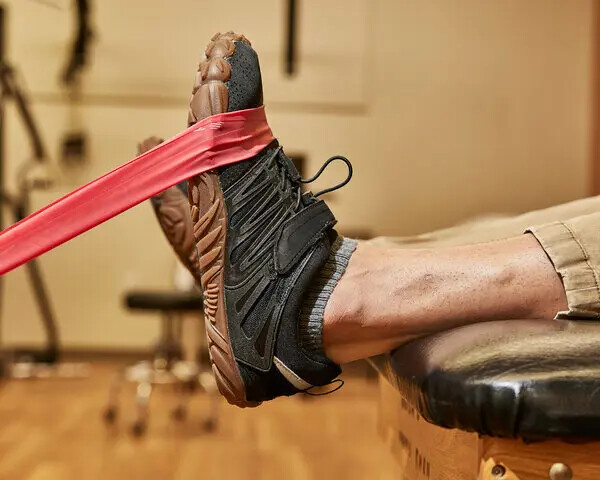
The purpose of these three exercises is to build eccentric strength around your ankles, making them resilient, to prevent further sprains.
Banded ankle extensions: Using dumbbell and band. Make sure you have enough resistance and place the band on either side of your ankle bone, making sure the force is pulling back and downwards. Now lean forward and put your weight through the ankle and the foot. And you should feel a little bit of that resistance creating some space in the joint, and stretching through the back of your ankle.
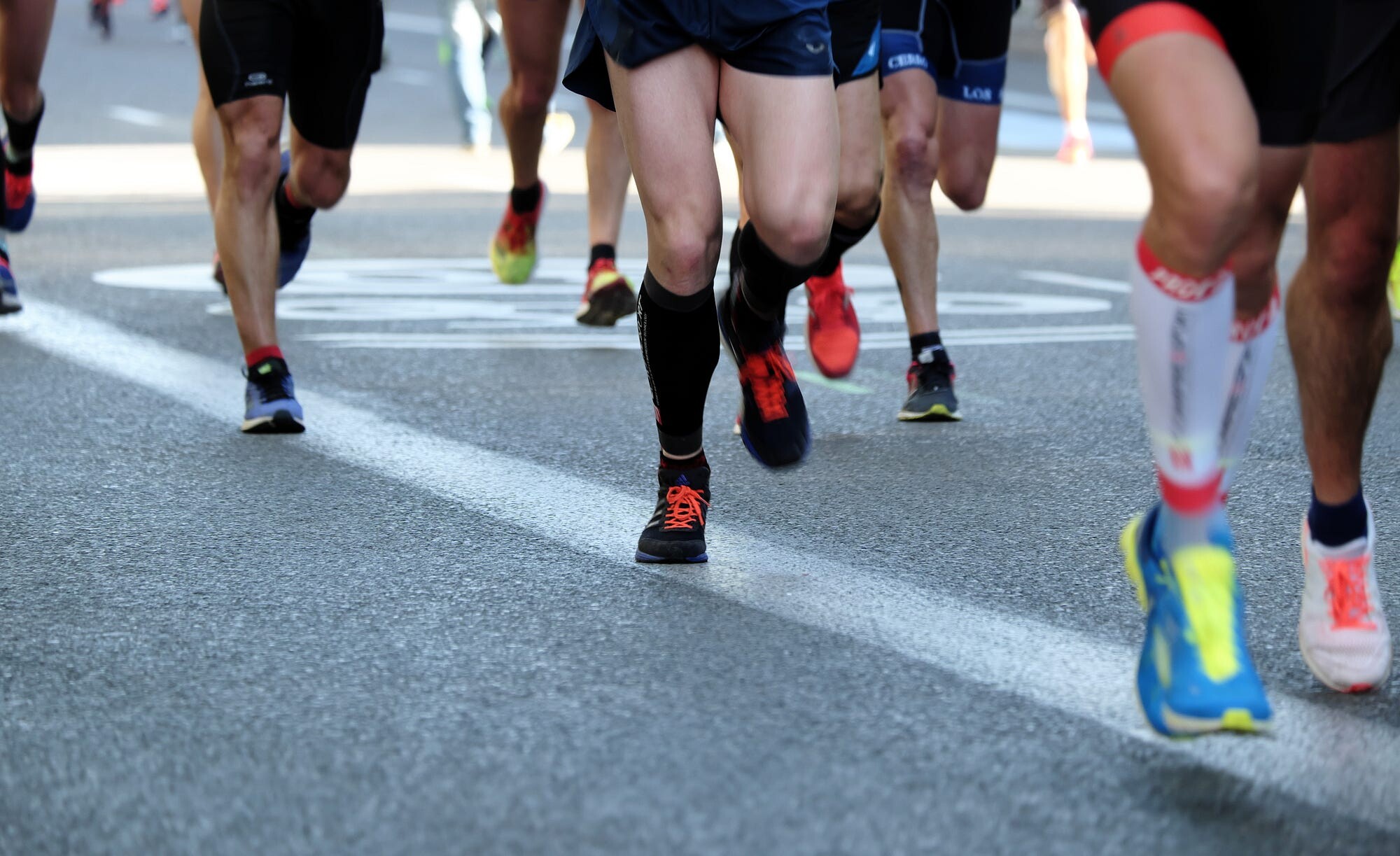
One-legged pendulum balance: Pick up one dumbbell and create a tripod with your foot. Put the balance in your big toe, your pinky toe and your heel, making sure your balance is strong and set before you lift your other foot off the ground. Once you find your balance pass the weight side to side like a pendulum without letting the ankle roll.
Eccentric calf raises: Put your heels over the edge of a step with your toes on the ball of your feet. Elevate your heels as high as you can by standing on the balls of your feet. Come up straight and come down slow without letting that foot wobble to strengthen those muscles around the ankle. Repeat five to ten times.
David London points out that strengthening improves mobility around the joint and also reduces the risk of experiencing this recurring injury during high-impact activities. “Incorporating these exercises into a runner’s training regimen can significantly enhance performance and allow them to continue training without setbacks,” says London.
(09/30/2023) Views: 376 ⚡AMPby Marley Dickinson
Naked trail race in England brings out running buffs
Scores of runners in England joined in a bold display of raw talent this month, baring all for a 5K trail run in which participants stripped down to their socks.
The Naked 5K took place Sept. 10 near Orpington, a community just southeast of London. The town is home to the Naturist Foundation, an organization dedicated to the “pursuit of personal well-being and wellness through naturist recreational activities,” according to its mission statement. The group’s 53-acre Brocken Hurst property is host to a range of Naturist Foundation events, from concerts and holiday celebrations to this month’s 5K trail run, which was the 20th such race the group has organized.
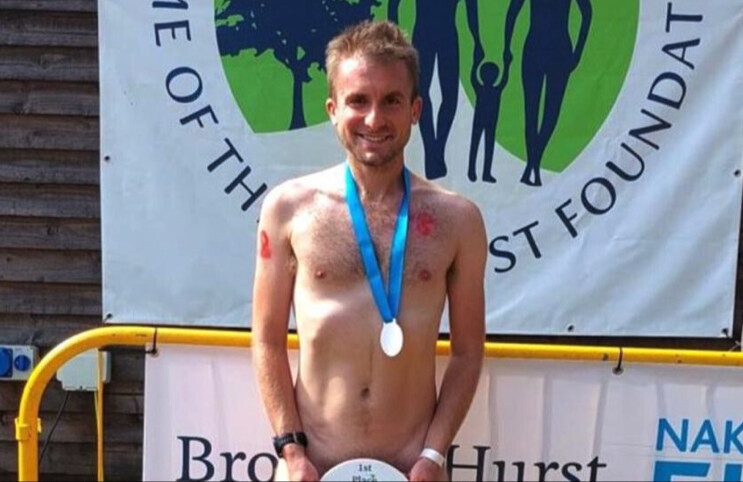

The organization’s milestone event appears to have attracted not just a large crowd, but a fairly speedy one. Leading the pack of 130 runners was Mark Jessett of Llandudno Junction, Wales, who won the race in 18:50. (As the race format would leave runners few options for pinning on a race bib, runners are given lightweight anklets to make chip timing possible.)
In a post on X, formerly known as Twitter, the Nature Foundation featured a shot of Jessett wearing nothing but his winner’s medal. “Congratulations to the winner of yesterday’s #BH5K trail run, with a time of 18m50s,” reads the post. “An impressive feat given the heat, with a high of 30ºC! We had extra water stations and misting sprays, but not surprisingly some DNFs too.”
No matter how liberally Jessett might have applied sunscreen for the race, the blistering rays clearly left an impression on the Welshman. “Scorching conditions!” he wrote in his Strava recap of the Naked 5K, in which he described the race as “basically a trail course through trees with a short section of road.”
In a reply to the Naturist Foundation’s post on X, he wrote: “Thanks everyone and well done to everyone else also! Fantastic day out in lovely (but scorching) conditions surrounded by so many friendly people!”
Others who responded to the post offered Jessett kudos for a strong run given the heat and, at times, challenging terrain, while some were curious about what motivates runners to sign up for the Naked 5K, and what kind of crowds the races attract.
One commenter replied that “some are running club members a bit bored of the regular parkrun and fancy a change. Many are regulars that we only see twice a year. Some are doing it for bucket list or charity reasons. Some do get the naturist bug as a result.”
The Naturist Foundation hosts its next Naked 5K in May.
(09/30/2023) Views: 357 ⚡AMPby Running Magazine
How robotics tech can help elite athletes get faster
Runners wearing an exoskeleton suit were able to sprint nearly one second faster over 200 metres, a recent small study found. Researcher Giuk Lee out of Seoul, South Korea, has been working with a team to create an “exosuit” that helps people sprint faster, the New Scientist reported on its website. The suit may have the potential to help elite athletes significantly improve their running performance.
Lee explains that the exosuit weighs 4.4 kg and has electrical motors on its back that control two steel cables attached to the wearer’s hips and thighs, The length of the cable running between each hip and thigh shortens as the wearer extends their legs backward, assisting them and speeding up the motion.

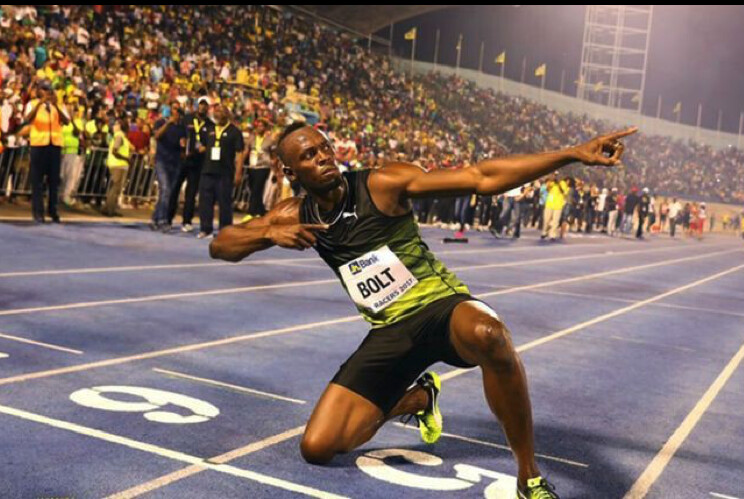
The team asked nine non-elite runners to sprint 200 metres to test the exosuit’s performance, twice while wearing the suit and twice without it. The participants ran 0.97 seconds faster, on average, when wearing the suit. The team has recently developed an exosuit that weighs only 2.5 kilograms and are currently investigating whether this may be a potential tool for elite athletes to use in training.
“One of the elite runners has been training with the lighter exosuit and it has helped them run faster even without wearing it,” Lee said to New Science. “This may be because it helps them to feel and remember how to engage the right muscles to run faster.”
The team is working on a customized exosuit for Kyung-soo Oh, a former national elite runner in South Korea. They’re hoping Oh will be able to beat the world record for running 100 metres while wearing the suit. Jamaican sprinter Usain Bolt holds the men’s record is 9.58 seconds, set in 2009.
This is certainly not the first time robotic science and running have crossed paths. In 2022, a U.S. start-up called Shift Robotics launched a Kickstarter campaign for what they claim is the world’s fastest shoe. The “Moonwalker” apparently lets you walk at the speed of a run while maneuvering stairs, through crowds, hills and even getting on public transit. The Moonwalker is available for the public to order now for USD $999.
(09/30/2023) Views: 368 ⚡AMPby Running Magazine
3 Athletes on Why They’re Running the Marine Corps Marathon
One of the largest marathons in the world to draw in 30,000 runners from all 50 states
The 48th Marine Corps Marathon (MCM)—“The People’s Marathon”—is the fourth-largest marathon in the U.S. and largest urban ultramarathon (they offer a 50K and 10K, too).
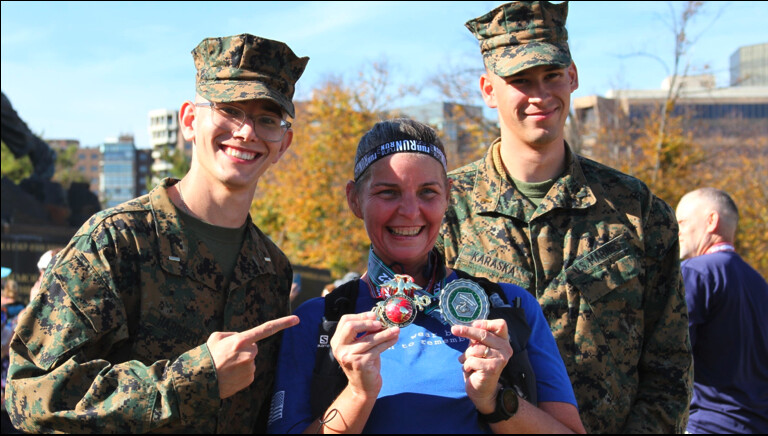

Each year, the U.S. Marine Corps holds the MCM a few weeks before the anniversary of its establishment. On October 29, 30,000 runners will toe the line in Arlington, Virginia, to follow the course as it winds through the nation’s capital. We caught up with three runners aiming for the finish line this year.
Rosie Gagnon, who lives in Berryville, Virginia, will be running the 50K MCM race in honor of her son, Marine Corps veteran, James Morris, who passed away by suicide in Ferurary 2018.
Even struggling through his mental health battles, Morris had endless confidence in his mother. Though Gagnon had been a runner for over two decades, Morris had encouraged her to run her first marathon. And when she completed that, he challenged her to dream even bigger–a 100 miler.
Morris passed away while Gagnon was training for this ultra, but she was determined to keep running in his memory.
“I actually bonked really hard,” Gagnon says, laughing. “I quit 60 miles in. I reached a point where I hit a wall–throwing up and crawling on the ground–and felt it was symbolic of what my son had gone through, because he got to the point where he couldn’t see how he could go on.”
The pain of this first race was disappointing but also a blessing. Morris says the experience taught her that, no matter how dark life gets, you keep putting one foot in front of the other.
Shortly after, Gagnon joined Wear Blue: Run to Remember, a group that honors the service of American military members through running. You may have seen one of them at races across the country wearing their bright blue shirts and the name of a fallen veteran. Gagnon challenged herself to run 100 ultramarathons in memory of Morris, and to raise awareness about military and veteran suicide. This will be her first time running the Marine Corps Marathon, and it will be her 60th ultra.
Running has become not only an outlet for spreading awareness about the importance of military mental health awareness and resources, but it’s been an outlet for grief.
“I used to wake up everyday wondering, ‘How can I live with this pain for another 40 years?’ and the one outlet where I found comfort was through running,” Gagnon says. “I focused on one race at a time, trying to get to that 100. I thought it would take longer, but it’s been moving pretty fast. I’m more than halfway through now!”
“If all I can do is put on shoes and run for somebody,” she says. “I’m going to do that.”
Between working a full-time job, managing clients in her running coach business, and raising three kids under the age of six, Kelly Vigil squeezes in training for the MCM when she can. Originally from northern Virginia, Vigil now lives in Charleston, South Carolina, and has run the MCM four times. This year, she’s running the 50K option.
“It’s my all-time favorite race,” she says. “When you get there, everything is taken care of,and everyone is super excited to be there. The spectators are amazing, which is hard to get in a marathon unless you’re running one of the major ones. At mile 21, you still have people cheering you on.”
Her husband was in the Marine Corps for six years, which makes her particularly connected to the race. Another reason is because Vigil used to work full-time in the charity running field, working with organizations to create their race programs.
“Athletes who are running for a cause aren’t necessarily going to feel more pressure, but there’s more meaning as to why they’re doing it,” Vigil says. “It helps them push forward when their body or mind isn’t in it anymore.”
As a mom of young kids, training isn’t always easy, but Vigil gets it done. Her long runs are timed so that she has an allotted amount of time to be away training on Saturday. Whatever mileage she gets done is what it is, and Vigil is happy with that.
“I’m not very strict with my training plan,” she says. “A lot of my running includes a stroller (with my two-year-old) or I might split up my runs in the morning and evening. I’m just doing what I can.”
Also a certified running coach, Vigil is currently working with other athletes who are running the MCM.
“Coaching keeps me in the community even when I’m not training for something,,” she says. “We’re all going after these different goals and doing what we can to stay consistent and do the work.”
For some, a commute to work includes traffic, to-go coffee, and a few swear words as someone cuts you off on the highway. But Jessica Hood’s commute to the office involves lots of marathon training.
Hood is extremely busy, so she puts in her miles by running to work. The total distance from her house to her office is about 14 miles, but depending on her training schedule, she’ll run seven or so and then hop on the metro bus for the rest of the way. Her office has a gym and showers, so she’s not taking a seat at her desk in sweaty running clothes.
“I do what I have to do and it probably takes a shorter amount of time,” Hood laughs. “You know, because you’d be sitting in DC traffic.”
Hood moved to the DC area about two years ago and works in finance, but her main passion is running. She began posting running content on social media in 2022 and developed a hearty following of 37k on Instagram and 81.5k on TikTok.
“It’s super cool how runners can get connected through social media,” she says. “I have a lot of running friends who don’t live in DC, but we all meet up at certain events and races across the country.”
Because of her influencer status, Hood is part of the MCM Social Media Influencer program, where she’s an advocate for the race. Though it’s sold out now, she spent months encouraging people to sign up through her posts online. This year will be her first time running the MCM marathon, though she’s spectated before and the energy was like nothing else.
“I thrive off of race day energy,” she says. “I love running and take it seriously, but it’s also about the fun of it and doing it with other people. So having a lot of people in my DC community running with me makes me so happy.”
Due to the race’s overwhelming popularity, early bird registrations for next year’s event opens January 1, 2024, with military members being able to register December 31. The Marine Corps Historic Half takes place May 19, 2024, and is part of the MCM series.
(09/30/2023) Views: 289 ⚡AMPby Outside Online
The 2024 Boston Marathon Acceptance Letters have Arrived. Here’s What the Data Tells Us.
A record-breaking number of qualified applicants registered for 128th running of the world’s oldest annual marathon
The 128th Boston Marathon presented by Bank of America just began informing qualified applicants of their status this morning, and the numbers are as fascinating as they are fast.
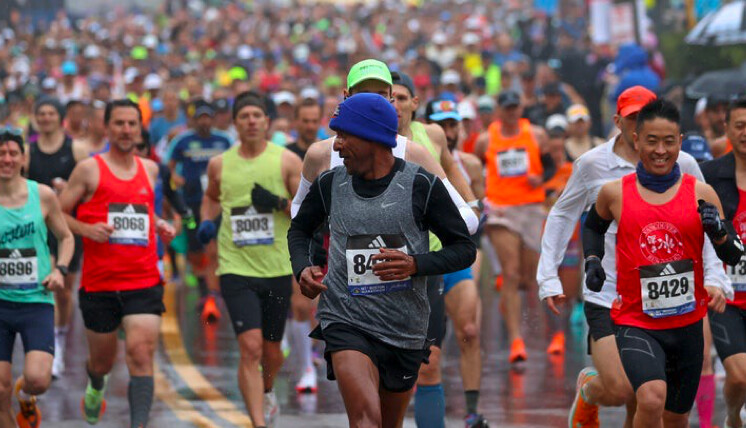
After 33,058 qualifier applications came flooding in during registration week earlier this month to run next year’s race—taking place on April 15, 2024—22,019 applicants were accepted (pending final verification).
“This year’s registration week resulted in the highest number of qualified applicants in race history, a testament to the strength of the marathon community,” said David Tyrie, Chief Digital Officer and Chief Marketing Officer for Bank of America.
To gain entry into the Boston Marathon requires each runner to have an official qualifying race prior to applying, with finishing times established by both gender and age. However, with such high demand for the race by qualified runners, the unofficial “cut-off” times for being accepted into the race are often minutes faster than the official qualifying standards.
For the 2024 Boston Marathon race, this year’s “cut-off” time needed to gain acceptance was 5 minutes, 29 seconds or faster than the official qualifying time. For example, say you are a 40-year-old male applicant. The official B.A.A. qualifying standard for this age/gender is 3 hours, 10 minutes. But in order to be accepted into next year’s race, any qualifying times slower than 3 hours, 4 minutes, 31 seconds would not be accepted.
This stout benchmark translated this year to more than 11,000 applicants not being accepted into next year’s Boston Marathon.
Looking into the 22,000-plus runners who were just notified of their acceptance—with ages ranging from 18 to 82—here’s how the numbers break down: 12,535 men, 9,440 women, and 44 non-binary athletes from all 50 states. In addition, automatic entry is offered to those who’ve finished 10 or more previous Boston Marathons, and 660 of these applicants were granted entry.
What’s also interesting is that over one-third of the entire field at next year’s Boston Marathon will be newbies—11,391 of the accepted applicants will be running Boston for the first time.
The Boston Athletic Association (B.A.A.) was established 1887, and has become a non-profit organization that manages the Boston Marathon and supports comprehensive charity, youth, and year-round programming. The Boston Marathon is part of the Abbott World Marathon Majors, along with international marathons in Tokyo, London, Berlin, Chicago, and New York City.
Athletes interested in running next year’s race as part of a fundraising effort, affiliated with select charity programs, are invited to contact the nonprofit or organization to see what opportunities there are. Read more about the race’s charity program.
The 2025 qualifying window has already begun on September 1, 2023, and further registration information will be announced following the conclusion of the 128th race. Stay tuned—and keep training.
(09/30/2023) Views: 469 ⚡AMPby Outside Online
Agai, Kerio seek to defend Kosice Marathon titles on Sunday
Margaret Agai and Reuben Kiprop Kerio will be seeking to defend their titles at the Kosice Peace Marathon on Sunday in Slovakia.
Agai won the title in a new course record of 2:24.04, smashing the previous mark of f 2:24:35 held by Ethiopian Ayuntu Tadesse.
Agai, who has a personal best time of 2:23:28 set while winning the 2013 Daegu Marathon, starts as favourite in the race.
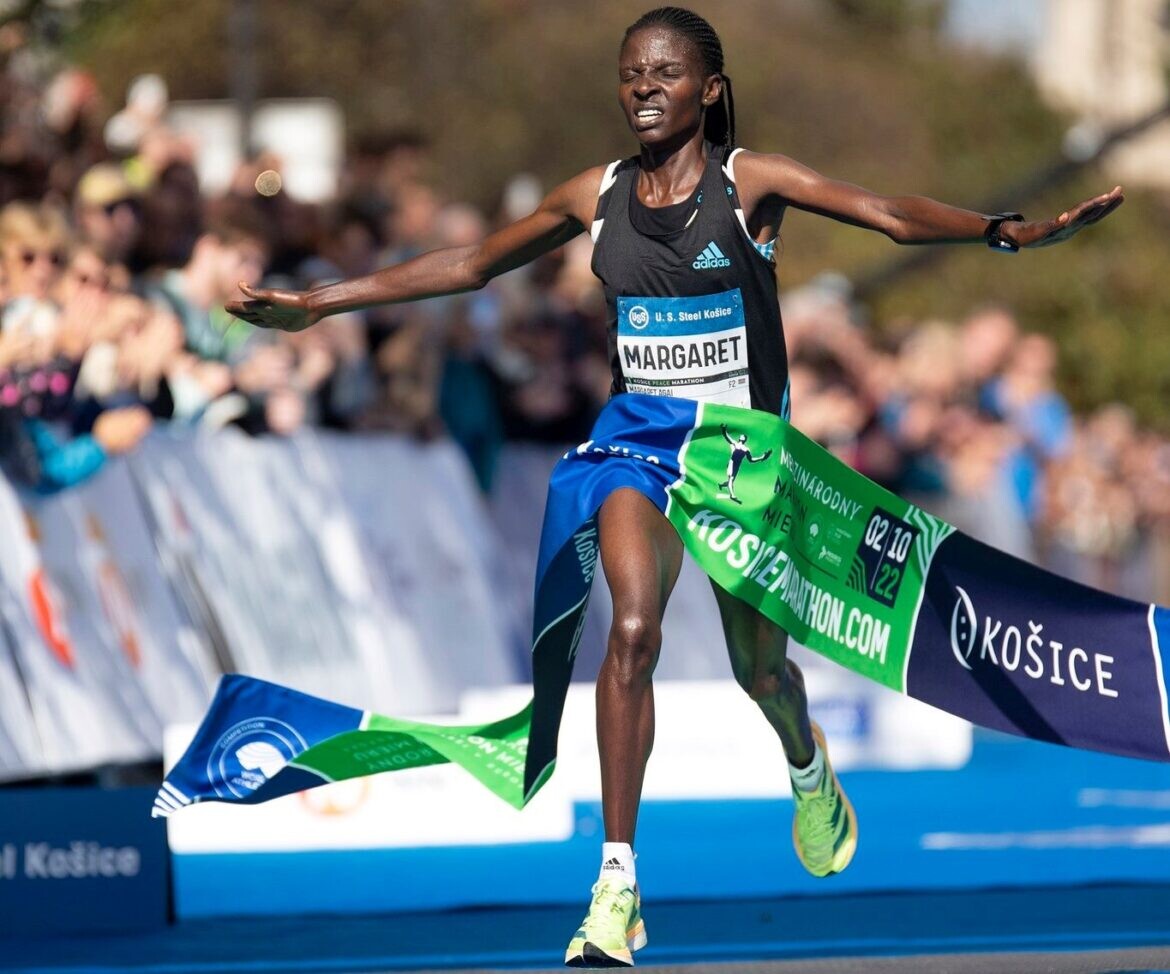
The 2022 Kigali Peace Marathon champion is familiar with the course and will be up against the Ethiopian trio of Adawork Aberta (2:23:39), Ayantu Kumela (2:24:29) and Maeregu Hayelon(2:24:42)among others.
In the men's race, Kerio who will be chasing his fourth title, will be up against three-time Toronto Marathon champion Philemon Rono (2:05:00), Kebede Tulu (2:05:19), and Aychew Bantie (2:06:23).
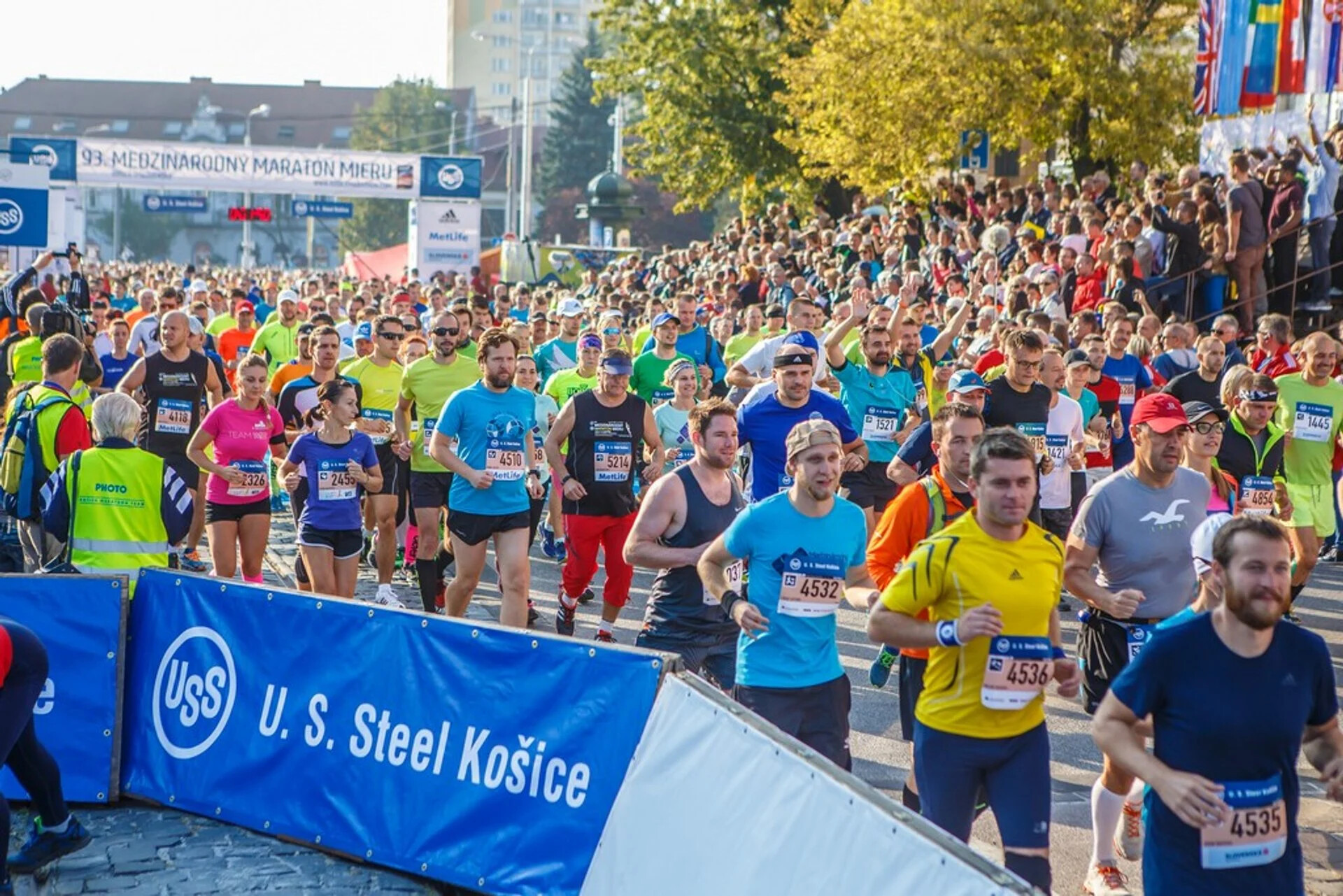
Kerio, who won the title in 2:07:16 ahead of Ethiopians Bantie Dessie Aychew (2:07:19) and Mehasha Tadesse Yohans (2:07:19), will have a big task shaking off experienced Rono who has dominated many marathons across the world.
Coming into the race with a personal best of 2:07:00 set at the 2019 Eindhoven Marathon when he finished second, Kerio has won the race three times thus 2017, 2021, and 2022.
Kerio has also won in other marathons including victories at Rock and Roll in 2019 and Brescia in 2016. He finished second at the Eindhoven and 2020 Xiamen Marathon. He was fourth and fifth at the 2018 Kosice and Izmir marathons respectively.
Rono, popularly called the Baby Police due to his height and body size, will be the man to watch after winning the Toronto Marathon titles in 2016, 2017, and 2019.
Elsewhere, Kenyans will be chasing the Trento Half Marathon titles in Italy. Alex Korio with a personal best of 58:51 will be the best Kenyan on the course behind Ethiopian Muktar Idris with a PB of 58:40.
The duo will be up against the Kenyan pair of Dickson Nyakundi (60:39) and Bernard Wambua who has 60:51.
In the women's race, Ethiopian Worknesh Degefa Debele with 66:14 leads Kenyans Joyciline Cherotich, and Christine Mutua with Ethiopian Etenesh Diro making his debut in the race.
(09/29/2023) Views: 374 ⚡AMPby Emmanuel Sabuni
kosice Peace Marathon
The Kosice Peace Marathon is the oldest European marathon.This year for the organizers of Kosice Peace Marathon is also about memories and flashbacks. One of the fastest marathon courses has been created in Košice 20 years ago on that occasion it was the 1997 IAAF World Half Marathon Champioships. Tegla Loroupe and Shem Kororia were awarded from the hands of...
more...A battle of former winners expected at Sunday's Cardiff Half Marathon
The 20th edition Cardiff Half Marathon takes place on Sunday with strong fields assembled for the men's and women's races.
A battle of titans is expected at the 20th edition of the Cardiff Half Marathon scheduled for Sunday, October 1.
Shadrack Kimining leads the men’s field with a Personal Best time of 59:27 and will be returning to Cardiff looking to chase the course record. He has sweet memories of the event since it’s where he made his international debut with victory back in 2016.
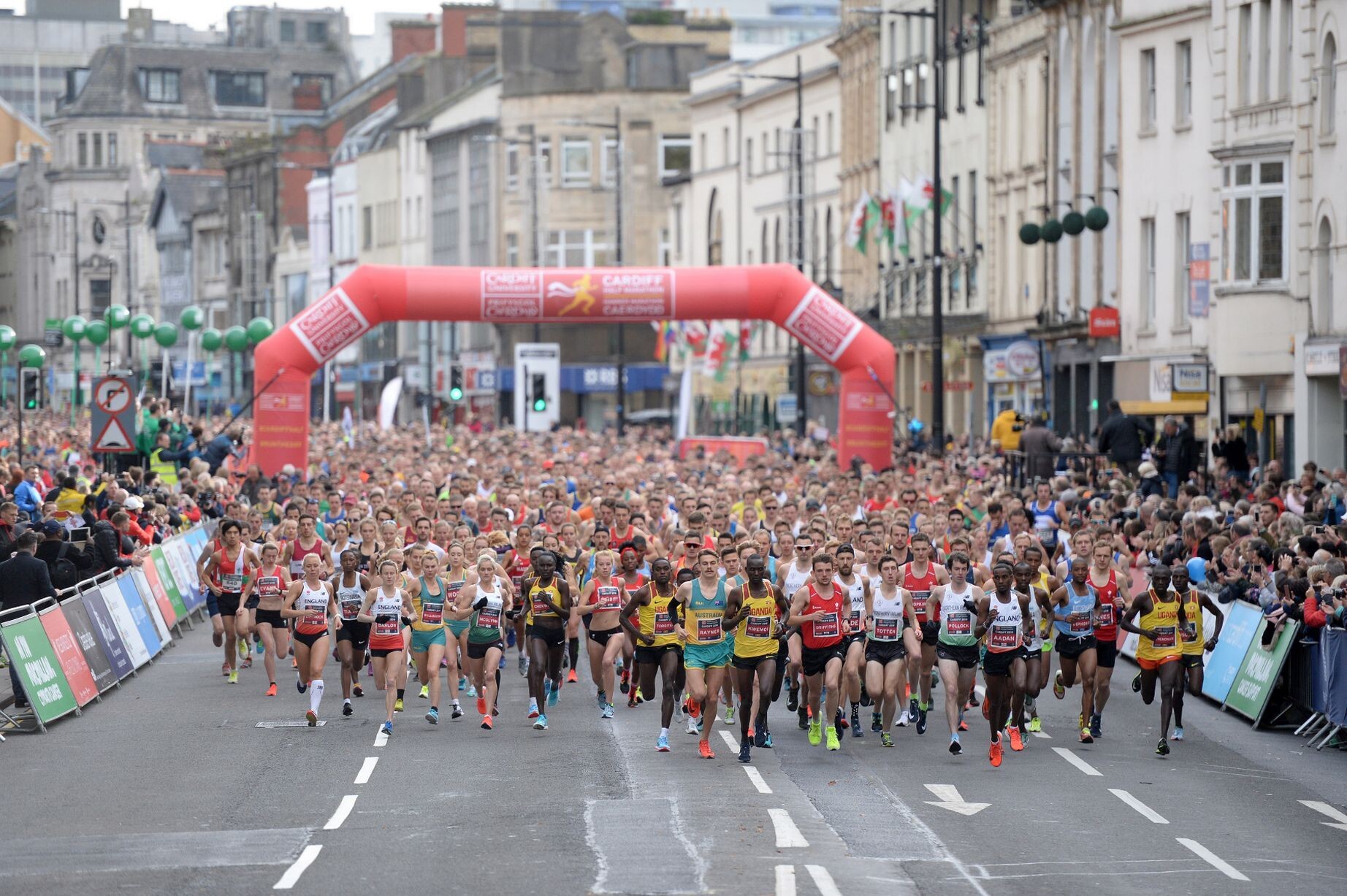
His last trip to Cardiff came in 2019 where he lost out to Leonard Langat in the closing metres to finish second in 59:32.
Last year’s winner Geoffrey Koech (59:32) will also be returning, looking to better his winning time of 60:01. Koech has since won the prestigious Boston Half Marathon and more recently finished third at the Prague Half Marathon in April.
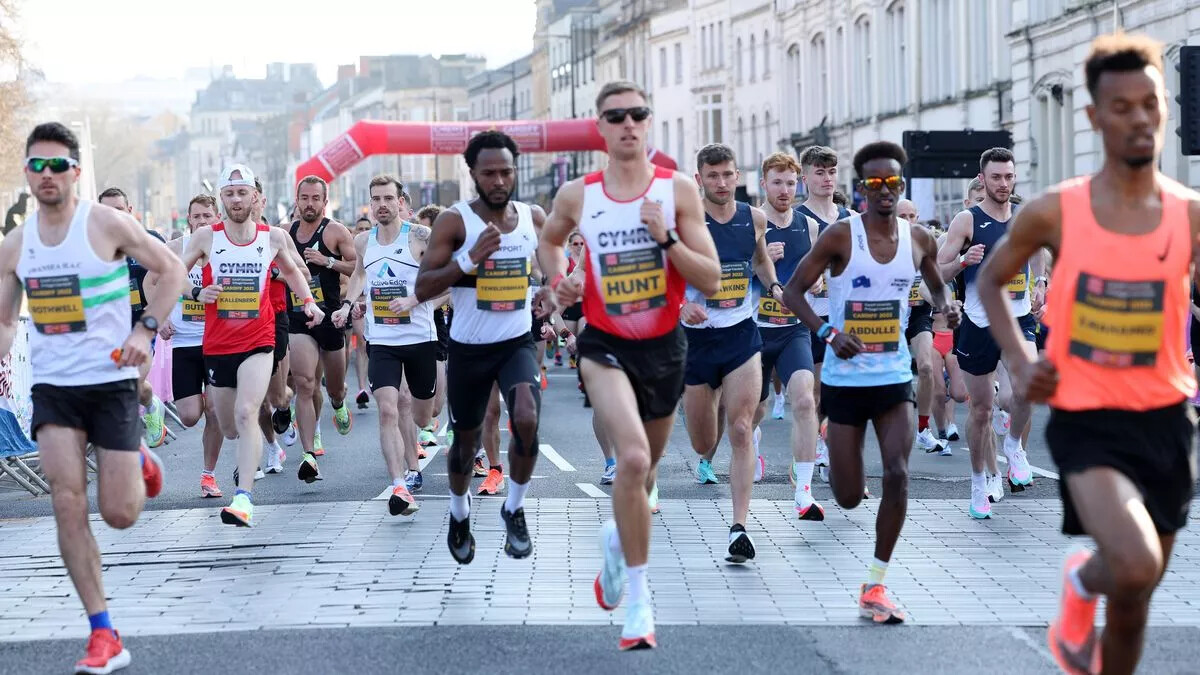
Benard Biwott (59:44) who won the Santa Pola Half Marathon and Wesley Kimutai (59:47) who finished second at the prestigious Rome Ostia Half Marathon in March will also be competing.
Challenging the Kenyan charge will be Hicham Amghar (59:53) of Morocco who will be looking to dip under the magical 60-minute barrier for a third time this year having finished fifth at Ras Al Khaimah in February with 59:53 and again in Istanbul finishing second in 59:58.
David Kimaiyo is an exciting debutant owing to his 10km best of 27:26 set at Castellon in February.
Bereket Zeleke (62:27) was fifth at the World U20 Cross Country Championships running for his native Ethiopia and made his debut for the distance in Antrim finishing 10th.
Further International interest sits with Morocco’s Omar El Harrass (61:55), Japan’s Takuya Kitasaki 61:51), and debutant Ben Eidenschink from the USA who was sixth at the US Cross Country Championships in 2022 and has a 10,000m best of 27:51.
Mestawut Fikir (66:44) of Ethiopia heads the start lists for the women’s race following her runaway victory at the Antrim Coast Half Marathon last month.
Her compatriot, Betelihem Afenigus (66:44) sits just two seconds slower on paper and won the popular Venlo Half Marathon earlier this year.
Challenging the Ethiopians will be defending champion Beatrice Cheserek (66:48) who will be familiar with the course and as a fierce competitor will be looking to retain her title on Sunday. So far this year Cheserek has won three half marathons, in Santa Pola, Riyadh and Tallinn.
Viola Chepngeno (66:48) was the runner-up last time and is another athlete who has been extremely busy over the last 12 months, along with Koech, also winning in Boston and lowering her P.B. for 10km to 31:05 in France this April.
Dorcas Kimeli (67:10) became the third fastest in history over 10km with 29:57 at the Birrell Grand Prix in Prague in 2019 and has previously raced in Cardiff back in 2017.
Costa Rican Record Holder for the Half Marathon and for the Marathon, Diana Bogantes-Gonzalez (73:08) will be in action in Cardiff, along with Marcela Joglova (73:46) of the Czech Republic.
Jenny Nesbitt (72:54) will head the Welsh contingent joined by Caryl Edwards (71:18), Anna Bracegirdle (73:21), Olivia Tsim (73:38), and Beth Kidger (76:27).
Further British Athletes of note include Olympian Sonia Samuels (72:19), Cambridge Half Marathon Champion Verity Hopkins (73:35), and Kirsteen Welch (74:42) of Exeter Harriers.
Josh Hartley (49:06) is the outstanding entry in the Men’s Wheelchair race, joined by 2018 Champion Tiaan Bosch (51:14) and multiple Cardiff winner Richie Powell. Martyna Snopek (63:02) is a previous winner of the Great North Run and will be racing in Cardiff on Sunday.
(09/29/2023) Views: 321 ⚡AMPby Abigael Wuafula
Wizz Cardiff Half Marathon
The Cardiff University/Cardiff Half Marathon has grown into one of the largest road races in the United Kingdom. The first event took place back in 2003. The event is not only the UK’s second largest half marathon, it is Wales’ largest road race and Wales’ largest multi-charity fund raising event. The race is sponsored by Cardiff University and supported by...
more...Kiptum eyes world record at next week's Chicago Marathon
London Marathon champion Kelvin Kiptum has his eyes set on breaking Eliud Kipchoge’s world marathon record when he steps up to compete at the 2023 Chicago Marathon on October 8.
Kiptum won the London Marathon on April 23 in a time of 2:01:25, in what was his second-ever marathon race—nearly obliterating the world record of 2:01:09 set by Kipchoge at the Berlin marathon in 2022.
He ran the fastest-ever marathon debut at the 2022 Valencia Marathon, becoming the third man in history to break two hours and two minutes after he wrapped up the race in 2:01:53.
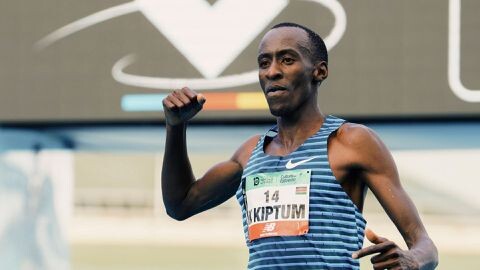
Only three men in history have run under 2:02, and Kiptum is the only marathoner to do it under the age of 35.
The 23-year-old announced his attendance in the Chicago Marathon on his Facebook page with an exciting message informing his fans to prepare for an incredible showdown.
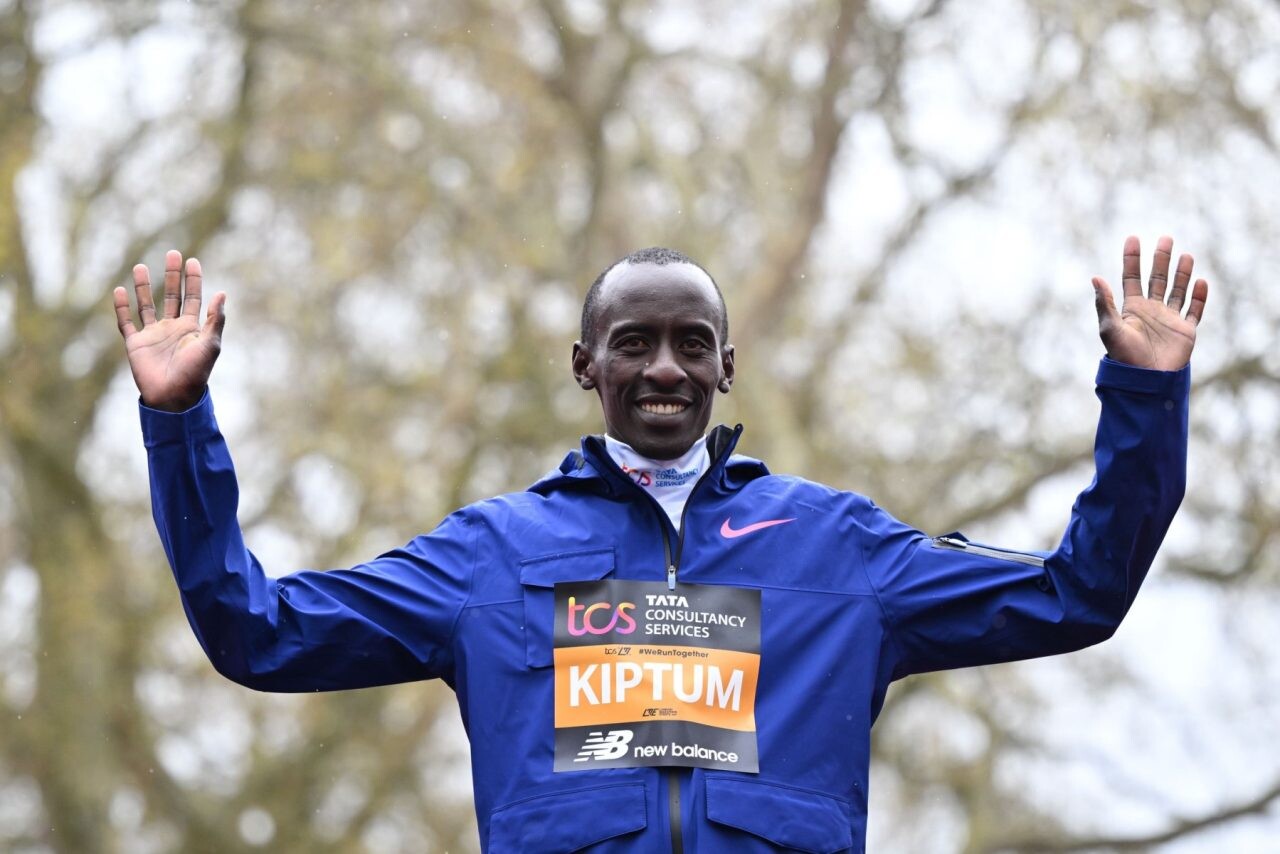
“I’m heading for the 2023 Bank of America Chicago Marathon. Get ready for the show,” the post from Kiptum read.
The elite athlete reportedly opted out of the Budapest 2023 World Athletics Championships and the Berlin Marathon to focus on Chicago.
A lot of fans had expected to witness the duel between Kiptum and Kipchoge at the Berlin Marathon track to gauge his speed against the two-time Olympic champion.
He will be joined by 2022 Chicago Marathon winner Benson Kipruto who set a personal best time of 2:04:24 when he won the race.
Kipruto also finished third in the 2022 and 2023 Boston Marathon with times of 2:07:27 and 2:06:06. He will be eying to defend his title against a youthful and promising Kiptum.
The two will be joined by fellow Kenyans John Korir who has a marathon best of 2:05:01 and debutants Daniel Mateiko and Wesley Kiptoo.
The Kenyan contingent will face a hard time from Somali-based Belgian Bashir Abdi who won gold in the 2020 Tokyo Olympics.
USA’s Galen Rupp, silver medalist in the men’s 10,000m at the London Olympics and bronze medalist in the men’s marathon in the 2016 Rio Olympics, will represent the hosts in the race.
They will also face stiff competition from Seifu Tura who won the 2021 Chicago Marathon and placed second at the 2022 edition.
Defending champion Ruth Chepngetich will lead the women’s pack seeking to break Ethiopia’s Tigst Assefa’s record of 2:11:53 set just recently at the Berlin marathon.
Chepng’etich, who won the Chicago Marathon in October last year, was only 14 seconds away from breaking the previous world record by Brigid Kosgei of 2:14:04.
She will be joined by Joyciline Jepkosgei, who finished second in the 2022 edition of the London Marathon, and Stacy Ndiwa who has a PB of 2:31:53.
Ethiopia’s Genzebe Dibaba will be a tough opponent for the Kenyan ladies. Dibaba is the current world record holder in indoor mile, 3,000m and 5,000m. She is also a gold medalist in the 1,500m at the 2015 World Championships.
USA’s Emily Sisson, who currently holds the American record in the marathon, will be seeking to upset the African girls. Sisson set the record on October 9 during the Chicago Marathon when she finished second in a time of 2:18:29.
The event has attracted 47,000 participants, the biggest field ever with the 2019 edition having featured 45,932 participants.
(09/29/2023) Views: 353 ⚡AMPby Teddy Mulei
Bank of America Chicago
Running the Bank of America Chicago Marathon is the pinnacle of achievement for elite athletes and everyday runners alike. On race day, runners from all 50 states and more than 100 countries will set out to accomplish a personal dream by reaching the finish line in Grant Park. The Bank of America Chicago Marathon is known for its flat and...
more...Add plyometrics to your warmup for increased power and strength
Plyometrics, a.k.a jump training, involves quick, explosive jumping movements that help build muscle strength. With the aim of having minimal contact time with the ground, plyometrics help runners train their fast-twitch muscles to respond more quickly.
Adding plyometric movements to the end of your warmup (after you have run easy for 10 minutes) is a great way to prepare your body for the most efficient and effective training session possible.
A-skips and B-skips
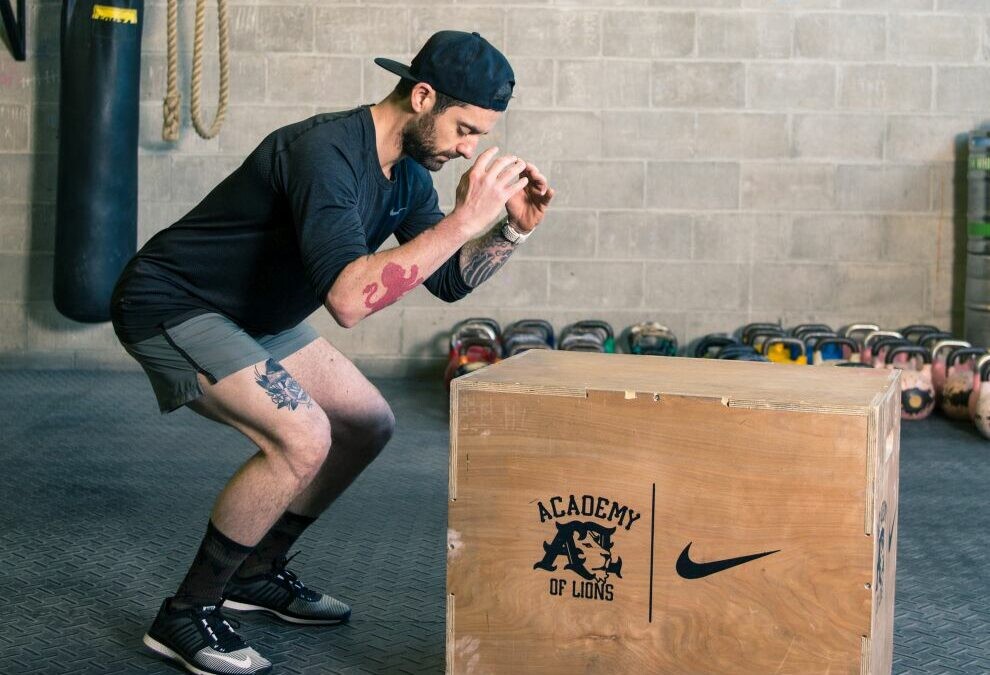
Skipping drills activate the calf muscles, quads and core, improving co-ordination and balance while warming up the muscles.
A-skips:
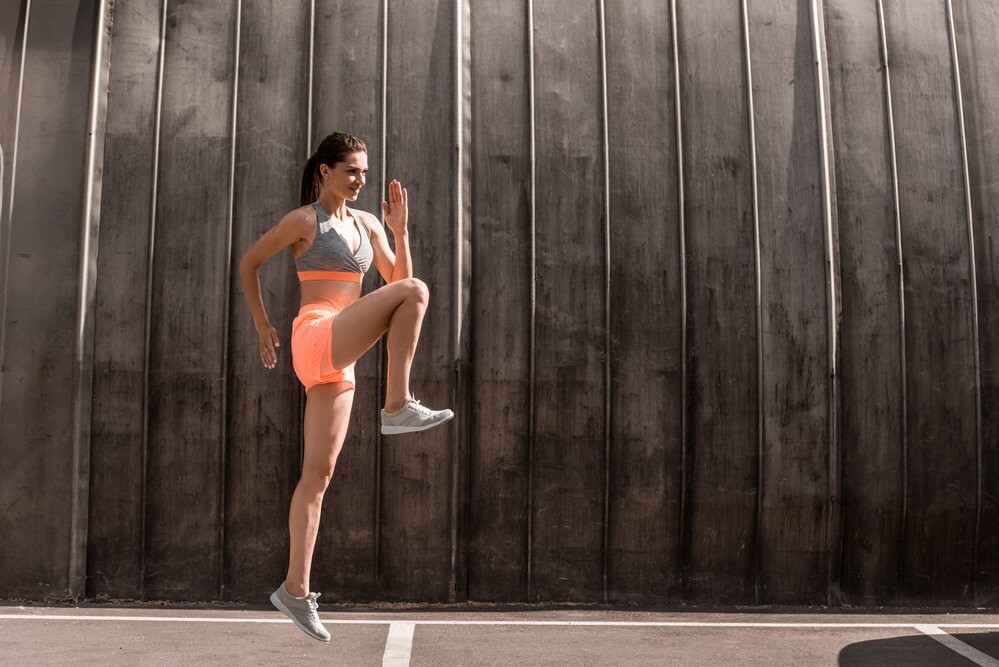
Begin standing tall with your arms at your side.
Skip forward while focusing on driving one knee upward as high as possible while keeping the opposite leg extended. When one knee is at its highest point, push off the toes of the other foot.
Swing your opposite arm forward to chest height as the knee rises, and alternate arms legs and arms.
B-skips:
As you lift one knee, flex the hip and knee to a 90-degree angle. When your knee reaches its highest point, extend your leg in front of you, then pull it back down quickly before the next step.
Co-ordinate this motion with the opposite arm, swinging it to your chest as your knee comes up. The entire process should look like skipping with added leg extension and flexion.
Box jumps or vertical jumps
These exercises can improve running speed and efficiency by enhancing lower body strength and power. You will need a sturdy box or platform.
Stand facing the box, with your feet shoulder-width apart, and keep a slight bend in your knees.
Bend your knees and hips, exploding upward with maximum effort, and swinging your arms forward for momentum. Land on the box with both feet, keeping your knees slightly bent to absorb the impact.
Carefully step or jump back down to the starting position.
Bounding
Bounding involves exaggerated running strides with an explosive push-off. It activates the hip flexors, glutes, and hamstrings, improving your running stride and power.
Stand upright with good posture, and keep your feet hip-width apart.
Take a large, exaggerated stride forward with one leg, and as you push off with your back leg, engage your core and swing your arms for momentum.
After landing on the front foot, immediately transition into another bound with the opposite leg.
If you’re new to plyometrics, it’s important to start with low-intensity exercises and gradually increase intensity and volume. Because of the potential risk for injury, consider consulting a trainer or coach to make sure you are using proper form and technique.
(09/29/2023) Views: 362 ⚡AMPby Keeley Milne
Boston Marathon has a cutoff once again, runners had to run 5:29 faster than the qualifying time for their age and gender to gain entry into the 2024 race
The Boston Athletic Association (B.A.A.) announced on September 28 that the cutoff for the 2024 Boston Marathon is 5:29.
In other words, it wasn’t enough for applicants to run a qualifying time for their age group and gender. They had to be significantly faster than their time standard.

According to race officials, 11,039 runners who qualified were unable to be let into the race.
This reverses the trend from the past two years, coming out of the pandemic, when there was no cutoff time. Everyone with a valid qualifying time who applied for the 2022 and 2023 races got in.
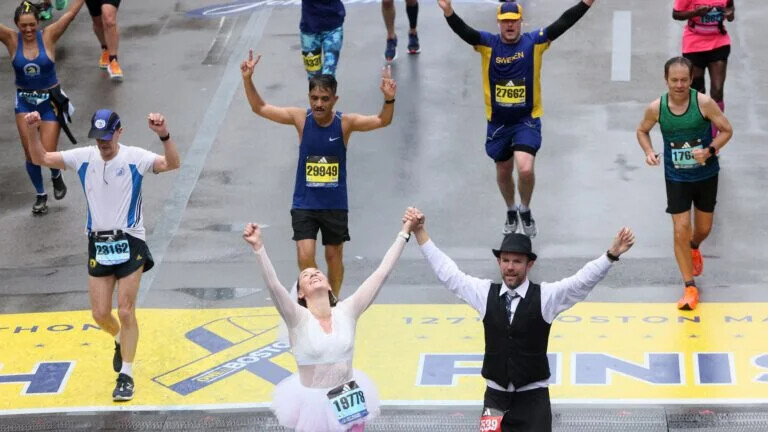
The 2021 race, which was held in October that year, had a cutoff of 7:47, because the field size was much smaller—only 20,000 runners—coming out of COVID. The 2020 edition of the Boston Marathon was canceled.
The B.A.A. announced on September 15 that for the 2024 race, there had been 33,000 applicants during the one-week registration period, a record. The field size is set at 30,000 and about 73 percent of those—this year, 22,019 runners—are time qualifiers. The other 8,000 entrants run for charities or receive invitational entries.
The previous record for applications was 30,458 in 2018 for the 2019 race. That number of applicants resulted in a cutoff of 4:52. Also in 2018, the race tightened the qualifying times by five minutes across every age group.
“Just four years after we adjusted the race’s qualifying standards by 5 minutes for all ages and divisions, more than 33,000 athletes earned Boston Marathon qualifying times,” said Jack Fleming, the B.A.A.’s president and CEO, in a written statement. “While we’re unable to accept all into the field, we applaud and recognize the many athletes who circled the 128th Boston Marathon on their calendar as a goal race to strive towards.”
The B.A.A.’s early announcement of the record number of applicants helped some Boston hopefuls brace for the news they wouldn’t gain entry into the race. Across social media, runners prepped for disappointment.
Robert Wang, founder of the World Marathon Majors Challenge Facebook group, which closely tracks the ins and outs of getting into various races, said he was hoping to establish a streak of 10 consecutive years of running Boston, after which he would no longer have to worry about the cutoff time; qualifying would give him automatic entry. (He was up to four.) He had already booked refundable hotel rooms in Boston for April 2024.
He was shocked to see the B.A.A.’s announcement of the number of applicants on the evening after registration closed. “It was the first time in recent memory the B.AA has released an estimate of the number of applicants with the close of registration,” said Wang, 50, of Canton, Ohio. “I knew immediately that I was not getting in with my 2:54 with 33,000 applicants.”
Road racing appears to be emerging from a slump that began during the pandemic, when most events were canceled, and extended through 2021, even as races returned to the calendar. Now many races are seeing registration numbers that match or exceed their pre-pandemic totals.
The qualifying period for the 2024 marathon ran from September 1, 2022, through the last day of registration, September 15, 2023.
(09/28/2023) Views: 340 ⚡AMPby Sarah Lorge
Boston Marathon
Among the nation’s oldest athletic clubs, the B.A.A. was established in 1887, and, in 1896, more than half of the U.S. Olympic Team at the first modern games was composed of B.A.A. club members. The Olympic Games provided the inspiration for the first Boston Marathon, which culminated the B.A.A. Games on April 19, 1897. John J. McDermott emerged from a...
more...Three ways runners get better with age
Recent performances in distance running have demonstrated the ability of athletes to break records well into their late 30s and 40s, particularly in longer distances. Sports scientist Sian Allen, a research manager for the Lululemon innovation team, recently shared three ways athletes are able to improve their performances as they age, and her observations hold true for both professionals and regular runners hoping to continue to smash PBs.
1.- Years of training wisdom

A recent study published in the Annual Review of Psychology points out that our crystallized intelligence–the stored knowledge that we accumulate over the years–doesn’t peak until we are in our 60s. Years of learning carry over to improved running performance.
In a recent article in The Irish Times, Swiss researcher and ultrarunner Dr. Beat Knechtle explains that the boost in older endurance athletes’ performances has a lot to do with experience and mindset. “Experience, starting slow, going slow, focusing on the aim … younger athletes always tend to want to achieve a place, a podium, a time,” he said. “The older ones like me say the first aim is to finish, and finishing means preparing.”

2.- Improved physical awareness
As we age, we become more familiar with our bodies and are capable of understanding the feedback signals our brain is receiving, a process referred to as interoception. Anyone who has competed over years or decades can probably attest that they have become far better at “reading their body” over time.
A recent study also pointed out that athletes, from sprinters to endurance athletes, are better at this skill than non-athletes. The wide range of runners were more confident in their interoceptive abilities and could hone these over time.
3.- Better pacing skills
Just as years of experience can help runners learn to troubleshoot and adjust on race day, they also learn how to pace themselves effectively. Research has shown that older marathon runners are more likely to use steady-state or negative pacing strategies, rather than trying to put “time in the bank” in the first half of a marathon.
With more learned control and a greater willingness to be conservative in the early stages of a race, older runners are better able to plan and execute speedier race performances.
(09/28/2023) Views: 365 ⚡AMPby Keeley Milne
How unleashed dog robbed Kenyan marathoner Ksh 1 million in Argentina
Robert Kimutai Ngeno went into the race with ambitious goals which were halted by a dog.
Robert Kimutai Ngeno headed to the Buenos Aires Marathon in Argentina on Sunday with one goal in mind, to win the race and walk away with more than Ksh 1.1 million ($7900US).

However, things did not turn out as expected for the 29-year-old who was looking very comfortable leading the pack at the 21km mark.
An unleashed dog emerged and suddenly began pursuing him and he was unable to keep the focus. As reported by Sports and Lifestyle Africa, a small crowd of spectators came to Ngeno’s aid, chasing away the dog that had interrupted his race.
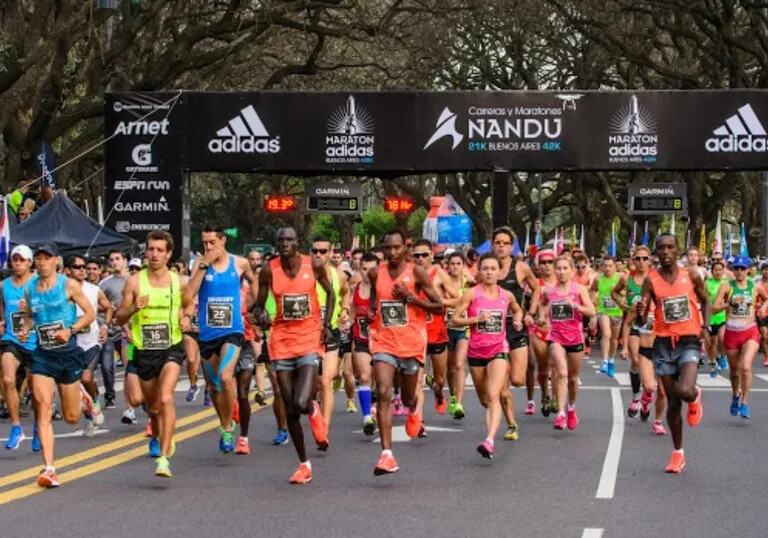
The Kenyan was primed to win but the disruption from the dog forced him to settle for third place.
His compatriots, Cornelius Kibet Kiplagat and Paul Kipngetich Tanui finished first and second in respective times of 2:08.29 and 2:09.57.
He had opened his season with the 42km debut at the Stockholm Marathon earlier this year with an impressive fourth-place finish and was hoping for a good outing in Argentina but he leaves the country in heartbreak.
(09/28/2023) Views: 375 ⚡AMPby Abigael Wuafula
Buenos Aires Marathon
The Maratón of Buenos Aires is an annual marathon foot-race which takes place in Buenos Aires, Argentina, during the Southern Hemisphere's Spring, usually in October. The 21st edition of the Buenos Aires Marathon started on October 9, 2005 at 7:30 at the 9 de Julio Avenue and Córdoba Avenue in the Recoleta neighborhood, being the start also the end point. ...
more...Police in Zambia ban former president from running in public
Police in Zambia have warned ex-president Edgar Lungu against going for runs in public, telling the former leader of the south-central African country that his workouts constitute “political activism” and are breaking the law.
Lungu, 66, who served as the country’s president from 2015 to 2021, has been told by police that the regular Saturday runs he has been holding with members of the public and supporters of his Patriotic Front party should be considered political events, and that he will need to obtain law enforcement’s permission before setting out on any similar group runs in the future.
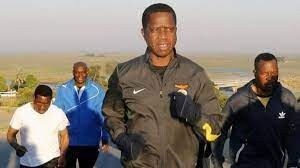
According to the BBC, police in the capital of Lusaka—where Lungu has been venturing out on his runs—said the Patriot Front’s failure to notify them of “public gatherings or demonstrations … amounts to a breach of the law. This is to ensure public safety.” The statement added a “procession of a former head of state should be done with his security detail and devoid of political activism.”
However, Lungu’s lawyer, Makebi Zulu, told the BBC that police were overstepping their bounds by demanding he ask their permission to go running in public, and that any further action taken by police would be met with a legal response.
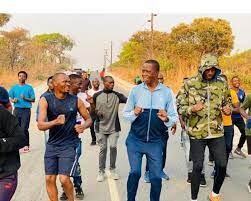
“Mr. Lungu has been jogging since time immemorial and his motivation has never been to contravene the law,” said Zulu.
The lawyer further told AFP that “it’s the police who are violating the law. No law states that you require a police permit for such events.” He also seemed to hint that political rivals are involved in the police crackdown on Lungu’s runs, saying “this is a recipe for anarchy and the police should stop listening to politicians.”
Lungu announced his retirement from political life after losing the 2021 presidential election to Hakainde Hichilema of the United Party for National Development. The group runs and other recent public appearances by the former leader has fuelled speculation that Lungu may be making a play for the presidency in the country’s general election in 2026.
(09/28/2023) Views: 372 ⚡AMPby Paul Baswick
Banned Kiwi Olympian Zane Robertson arrested in sexual assault probe
Two-time New Zealand Olympian Zane Robertson, who is serving an eight-year suspension for anti-doping rule violations, was arrested last week in a sexual assault probe at his home in Kenya, where police say they found an unlicensed AK-47 assault rifle and 23 rounds of ammunition.
Robertson—who holds New Zealand’s records in the marathon (2:08:19), half-marathon (59:47) and 10K (27:28), was visited by police at his home in the town of Iten on Sept. 20 to question him about a sexual assault complaint made against the 33-year-old, according to Kenya’s Standard newspaper.

Tom Makori, sub-county police commander, told the Standard authorities arrived at the house to arrest the runner for questioning in a sexual assault investigation, after a woman claimed she was victimized by Robertson at a house party the previous day. “The suspect has been living in Kenya for several years. He has bought land and built his residence. Our preliminary investigations indicate that the AK-47 in his possession was unlicensed,” Makori said.
“Police had gone to arrest him for questioning in relation to a sexual assault complaint, but he declined to open the door. Later, after the police gained entry, they discovered that he was in possession of a gun,” he added.
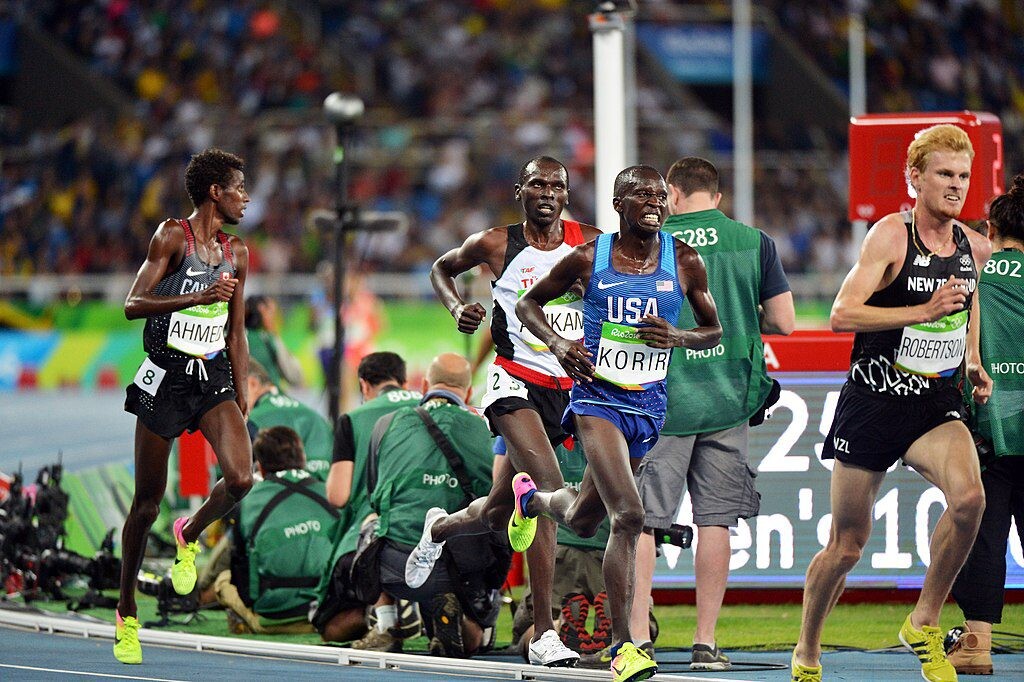
Police had not released an update on when, or if, Robertson will be officially charged in connection with either the sexual assault probe or the weapons arrest. “We may seek more time to conclude investigations,” said Makori.
The arrest comes exactly one year to the day that the Sports Tribunal of New Zealand provisionally suspended Robertson for anti-doping rule violations.
In May 2022, Robertson tested positive for erythropoietin (EPO) during the Greater Manchester Run—a finding later confirmed by B-sample testing. He breached the rules for the presence and use or attempted use of the prohibited substance and for tampering, or attempted tampering, with any part of the doping control process. His attempt to submit fraudulent documents to defend himself led to another charge.
In March, the Sports Tribunal of New Zealand handed Robertson an eight-year suspension for the violations, making him ineligible to compete until September 2030. However, Robertson announced his retirement from professional running a month before receiving the suspension.
In addition to breaking national records, the now-disgraced runner had distinguished himself by winning bronze in the men’s 5,000m at the 2014 Commonwealth Games in Glasgow. He finished 12th in the 10,000m at the 2016 Summer Olympic Games in Rio and 36th in the 2020 Tokyo Olympic marathon, in 2:17:04.
(09/27/2023) Views: 388 ⚡AMPby Paul Baswick
Zane Robertson
Adidas new single-use racing shoe releases to the public–for CAD $650
Last weekend’s Berlin Marathon saw the impossible become nothing when Ethiopia’s Tigist Assefa shattered the women’s marathon record by two minutes and 11 seconds, winning the race in 2:11:53. Assefa not only garnered attention for her outstanding performance and record-breaking time, but also for the cutting-edge carbon-plated racing shoes she was wearing: Adidas Adizero Adios Pro Evo 1, which made their debut appearance in the race.
These record-breaking carbon-plated racing shoes from Adidas were released to the U.S. market on Sept. 26, and have already sold out, priced at USD $500 (CAD $650). What sets these shoes apart, besides their hefty price tag (approximately $450 more than the average running shoe), is their unique one-race design. Despite their high cost, these shoes are designed to last through a single marathon.

The shoe’s appeal to a wider audience raises concerns about its environmental impact. Adidas has openly acknowledged that these shoes are indeed intended for a single race, which has prompted criticism regarding environmental waste, and flying in the face of some brands’ efforts to create more sustainable running footwear.
On its website, Adidas describes the Adizero Adios Pro Evo 1 as “a running shoe like no other,” boasting “unique technology that challenges the boundaries of racing.” Weighing in at a mere 138 grams, the shoe features an innovative Lightstrike Pro foam design with a full-length carbon plate that is reportedly bouncier and lighter than the Lightstrike Pro foam in the shoe’s predecessor, Adios Pro 3. The shoe also incorporates a liquid rubber outsole, a substantial 39-mm heel stack and a front rocker. This rocker propels the runner forward at even greater speeds while requiring less energy expenditure.
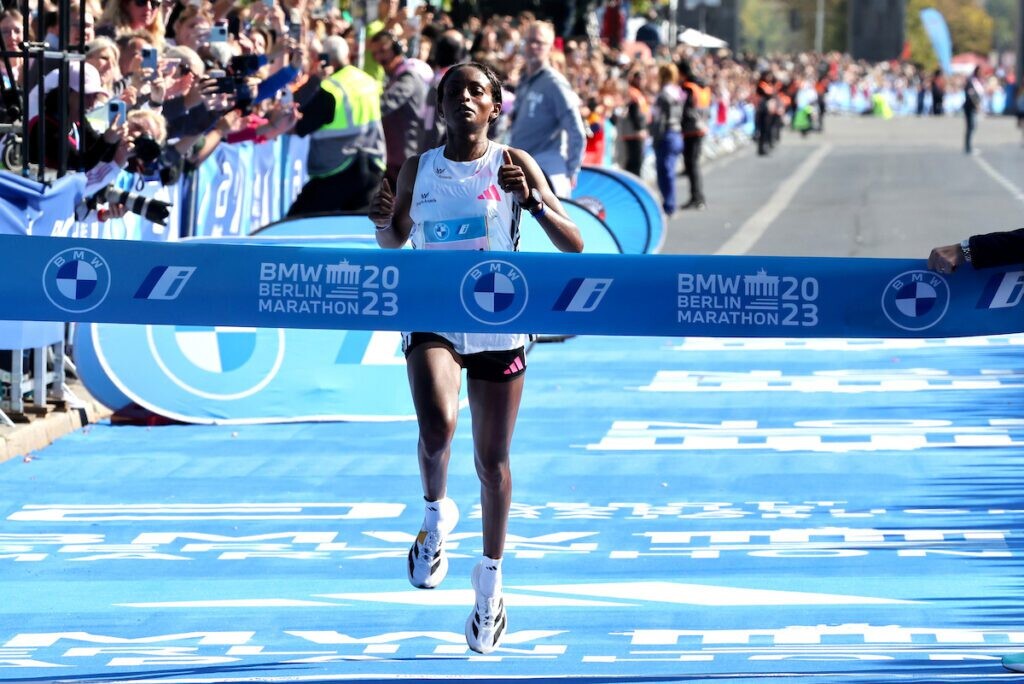
In recent years, marathon running has witnessed the rise of “super shoes” as all the major brands compete to develop the fastest carbon-plated racing shoe on the market for their athletes. The Adidas Adizero Adios Pro Evo 1 represents the latest innovation in marathon technology, helping runners shave precious seconds, if not minutes, off their race times.
(09/27/2023) Views: 407 ⚡AMPby Marley Dickinson
Cherop wants a chance to compete in marathon in Paris Olympics
Fresh from finishing second at the Buenos Aires Marathon on Sunday in Argentina, former world marathon bronze medalist Sharon Chemutai Cherop wants Athletics Kenya to give her a chance to represent the country at the 2024 Paris Olympic Games.
The former Boston Marathon champion said she has had a good season and the Buenos Aires race was her last assignment this year.
Cherop finished second in 2:24.56 behind compatriot Rhoda Jepkorir Tanui, who won the race in a course record of (2:24.52). Pamela Rotich came third in an all-Kenyan podium sweep.
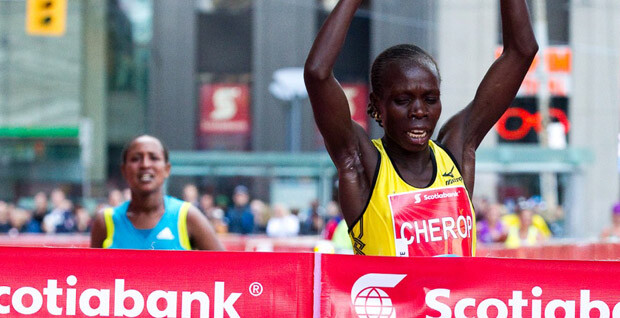
Cherop said she hopes to fly the country's flag high if offered the Paris 2024 slot.
“I am proud of my country. I have always wanted to represent my country since I was a junior athlete and if offered the opportunity to run at the Olympic Games, I will do my level best to make the country proud,” said Cherop.
Cherop said she had a good outing in Argentina and was happy to have redeemed her image following her performance in the half marathon last month in the South American nation.
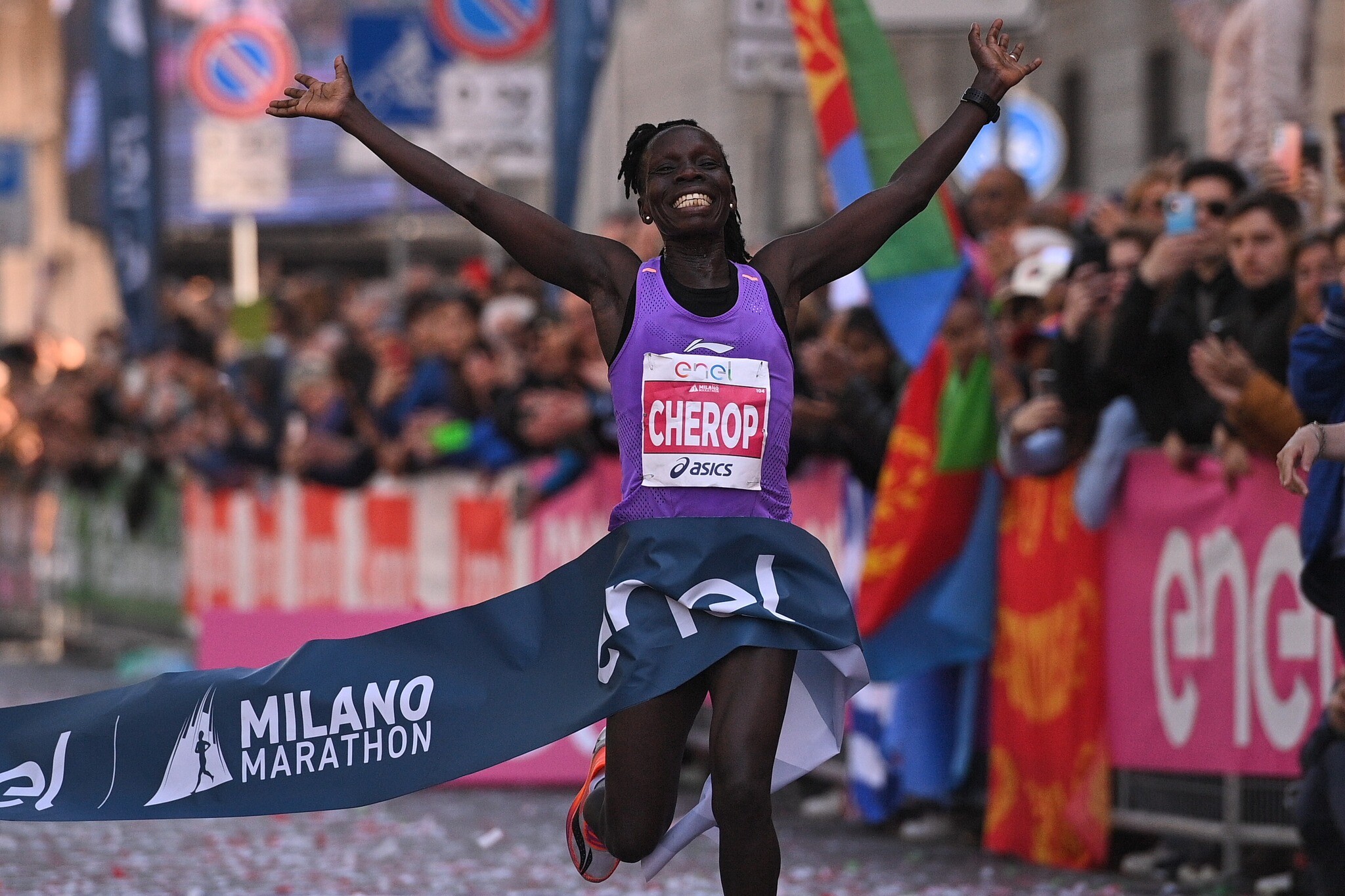
“I have closed a season on a good note after running many races this year. I really need to rest until next year and set up good plans for the year. But the best of all would be to represent my country at the Olympics,” she added.
She said she has been in the game for more than 20 years and first represented Kenyan at the 1999 All Africa Games, finishing 4th in the 10,000m.
“I have been running since 1999 and I won my first medal at the 2000 World Youth Championships in 5,000m. That is how long I have been in this game,” she said.
She said she had wanted to run her best race in a bid to improve on her time in Bueno Aires but as much as that was not achieved, the second position was good enough.
The 2012 Boston Marathon champion said she prepared well for the race.
“I started preparing for this race after winning the Milan marathon. This year alone, I have run two marathons and a number of half marathons,” she added.
Cherop won the Milan Marathon after timing 2:26.13 back in April after recovering from an injury.
In Milan, she edged out Ethiopian Ethlemahu Sintayehu (2:26.30) and compatriot Emily Kipchumba Chebet for third position after timing 2:28.08.
She is also remembered for winning a bronze at the 2011 World Athletics Championships behind the champion Edna Kiplagat and Priscah Jeptoo in an all-Kenya podium sweep.
She went ahead to win the Toronto Waterfront Marathon and finished third at the 2011 Boston Marathon before winning the race the following year.
In men, Cornelius Kibet Kiplagat (2:08.29) led his compatriot Paul Tanui (2:09.57) and Robert Kimutai Ng’eno (2:10.16) in a 1-2-3 podium sweep for team Kenya.
In other races over the weekend, Charles Mbatha Matata won the Leo Lion Half Marathon in France. The Kenyan won the men’s title in 1:01.34 followed by countrymate Vincent Kipkorir Kigen (1:02.21) and Ethiopian Getachew Masresha Kidie (1:02.23).
(09/27/2023) Views: 360 ⚡AMPby Emmanuel Sabuni
Paris 2024 Olympic Games
For this historic event, the City of Light is thinking big! Visitors will be able to watch events at top sporting venues in Paris and the Paris region, as well as at emblematic monuments in the capital visited by several millions of tourists each year. The promise of exceptional moments to experience in an exceptional setting! A great way to...
more...Jakob Ingebrigtsen marries his longtime partner
Between setting world records, winning Diamond League titles and even taking on beer miles, Jakob Ingebrigtsen of Norway has had a September to remember. On Sept. 23, he added another milestone to his life by marrying his partner of seven years, Elisabeth Asserson, in their native Norway.
Asserson and Ingebrigtsen’s love story began when they were just 16, and Ingebrigtsen popped the question in 2021. Their wedding had an American-style flair, featuring 10 attendants, with Ingebrigtsen’s brothers Henrik, Filip and Kristoffer proudly serving as groomsmen.
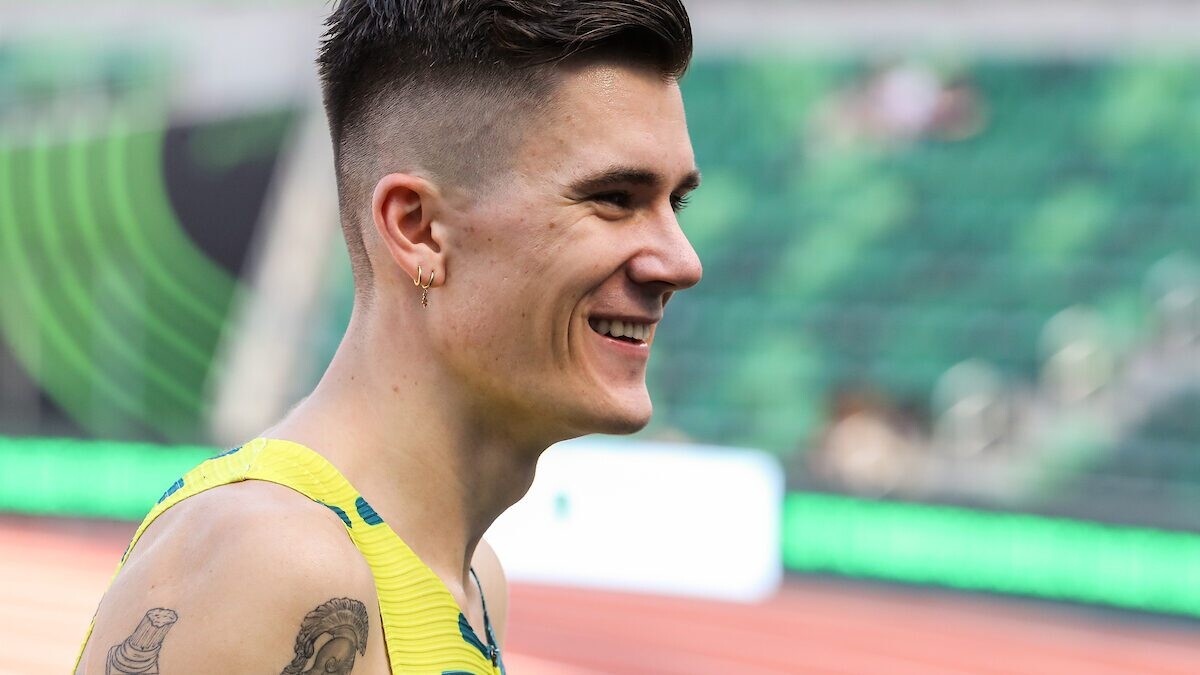
The wedding took place at the Bragernes Church in Drammen, Norway, which is quite a distance from Ingebrigtsen’s hometown of Sandnes, which is approximately 400 km away. Asserson had a connection to the church, as one of her grandmothers hailed from Drammen, which is a short distance from Oslo.
The guest list was extensive and reportedly included several of Ingebrigten’s competitors and friends. However, one notable absence was his former coach and father, Gjert Ingebrigtsen.

According to the Norwegian magazine Se og Hør, Gjert was not in attendance and posted a cryptic photo on his Instagram on the wedding day, bearing the message: “You must not endure so much the injustice that does not befall yourself.”
As Ingebrigtsen takes a break from training, the newly married couple plans to celebrate with a honeymoon in the Maldives. Whether Ingebrigtsen will incorporate sand sprints and swim training into his honeymoon activities remains to be seen.
(09/27/2023) Views: 486 ⚡AMPby Marley Dickinson
Ethiopian Afera Godfay Confident of Success At TCS Toronto Waterfront Marathon
Afera Godfay won the 2019 Dongying Marathon in China with a superb personal best 2:22:41 then almost completely vanished from the world scene for a few years.
There was a third-place finish in the Xiamen Marathon, also in China, a year later but that performance largely went under the radar.
On October 15th the 31-year-old Ethiopian will target the TCS Toronto Waterfront Marathon with high expectations. Indeed, in April this year she ran 1:10:25 at the Rabat International Half Marathon in Morocco which encouraged her to chase a new marathon personal best in Toronto. This will mark her first ever visit to Canada.
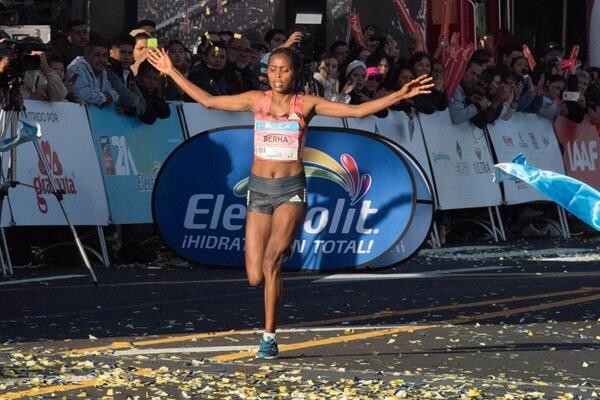
“Training is going great,” she reports. “I do my training six days a week - every day except Sunday. I cover a long distance with speed. Three days a week I run with (coach Gemedu Dedefo’s) group.
“My goal is to win (Toronto Waterfront) with a good time. I hope to run 2:24.”
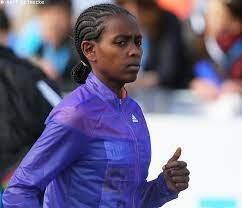
The group is currently celebrating the great success of one of their members, Tigist Assefa, who smashed the world marathon record with her astonishing 2:11:53 in Berlin on Sunday. No doubt the result will provide inspiration to Afera.
The buildup is creating excitement as she is eager to return to her past level. Five times she has run under 1:10 for the half marathon distance over the years and she can now sense she is coming into form. Afera has a good reason for her absence those few years.
“It was because I gave birth to my child,” she explains. “And it was a bit hard to get back to my previous condition. I have one child and her name is Maranata.”
Afera comes from a small town in the war torn northern Ethiopian province of Tigray called Alaje. Although she moved to Addis in 2010 her parents still live in Tigray. She is thankful that they were not affected by the two-year-old war that lasted until November 2022 and which led to widespread famine.
Once a year, when her training program allows, she will visit her parents and friends in Alaje. She comes from a long line of farmers. Growing up under hardship likely fuelled her desire for success in road racing. But she also had mentors.
“My inspiration is Meseret Defar,” she declares. Defar is a two time Olympic 5,000m champion and a national hero in Ethiopia.
As a young athlete Afera had success at shorter distances and represented Ethiopia at the 2010 World Cross Country Championships. She finished a solid 8th in the Under 20 race in Bydgoszcz, Poland helping the Ethiopian team to a silver medal finish behind Kenya.
Two years later she again represented her country at the African Championships over 10,000m. She placed 7th in that meet which was held in Porto Novo, the capital of Benin. Asked why she turned to marathon racing her answer is simple: ““It’s because I have a good endurance and, money-wise, I find it better.”
Although she has not been to Toronto before coach Gemedu Dedefo made the journey a few years ago and will undoubtedly have some excellent insight into how best to race the course. And, travelling with her from Addis will be previously announced Ethiopian stars Derara Hurisa, Adugna Takele, and Yohans Mekasha who will feature strongly in the men’s race while Waganesh Mekasha will battle with Afera for the $20,000 first place prize money.
Once again, the TCS Toronto Waterfront Marathon promises a memorable contest and the Ethiopian flag will surely be waved in celebration at the finish.
About the TCS Toronto Waterfront Marathon
The TCS Toronto Waterfront Marathon is Canada’s premier running event and the grand finale of the Canada Running Series (CRS). Since 2017, the race has served as the Athletics Canada national marathon championship race and has doubled as the Olympic trials. Using innovation and organization as guiding principles, Canada Running Series stages great experiences for runners of all levels, from Canadian Olympians to recreational and charity runners. With a mission of “building community through the sport of running,” CRS is committed to making sport part of sustainable communities and the city-building process.
To learn more about the TCS Toronto Waterfront Marathon, visit TorontoWaterFrontMarathon.com.
(09/26/2023) Views: 331 ⚡AMPby Paul Gains
TCS Toronto Waterfront Marathon
The Scotiabank Toronto Waterfront Marathon, Half-Marathon & 5k Run / Walk is organized by Canada Running Series Inc., organizers of the Canada Running Series, "A selection of Canada's best runs!" Canada Running Series annually organizes eight events in Montreal, Toronto and Vancouver that vary in distance from the 5k to the marathon. The Scotiabank Toronto Waterfront Marathon and Half-Marathon are...
more...Marcel Jacobs and Fred Kerley make coaching changes ahead of Olympic Games
Fred Kerley and Marcel Jacobs failed to impress at the 2023 World Championships in Budapest, something that might have forced them to change coaches.
Reigning Olympic champion Marcel Jacobs has landed a new coach ahead of his title defense campaign at the Paris Olympic Games in 2024.
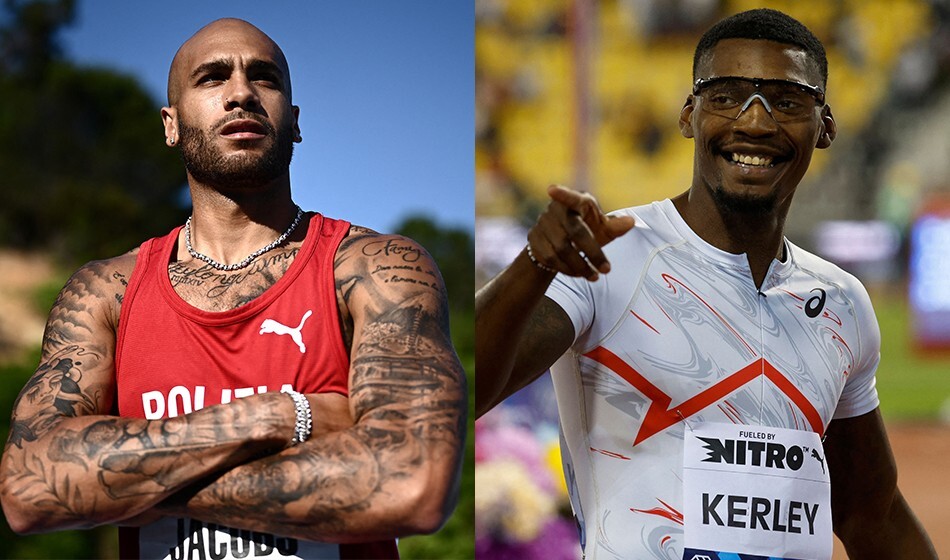
Changing coaches will also see him relocate from his home country of Italy to Florida. According to NBC Sport, the 28-year-old will be coached by Rana Reider.
Reider’s athlete group in Jacksonville has included 2022 World 100m bronze medalist Trayvon Bromell.
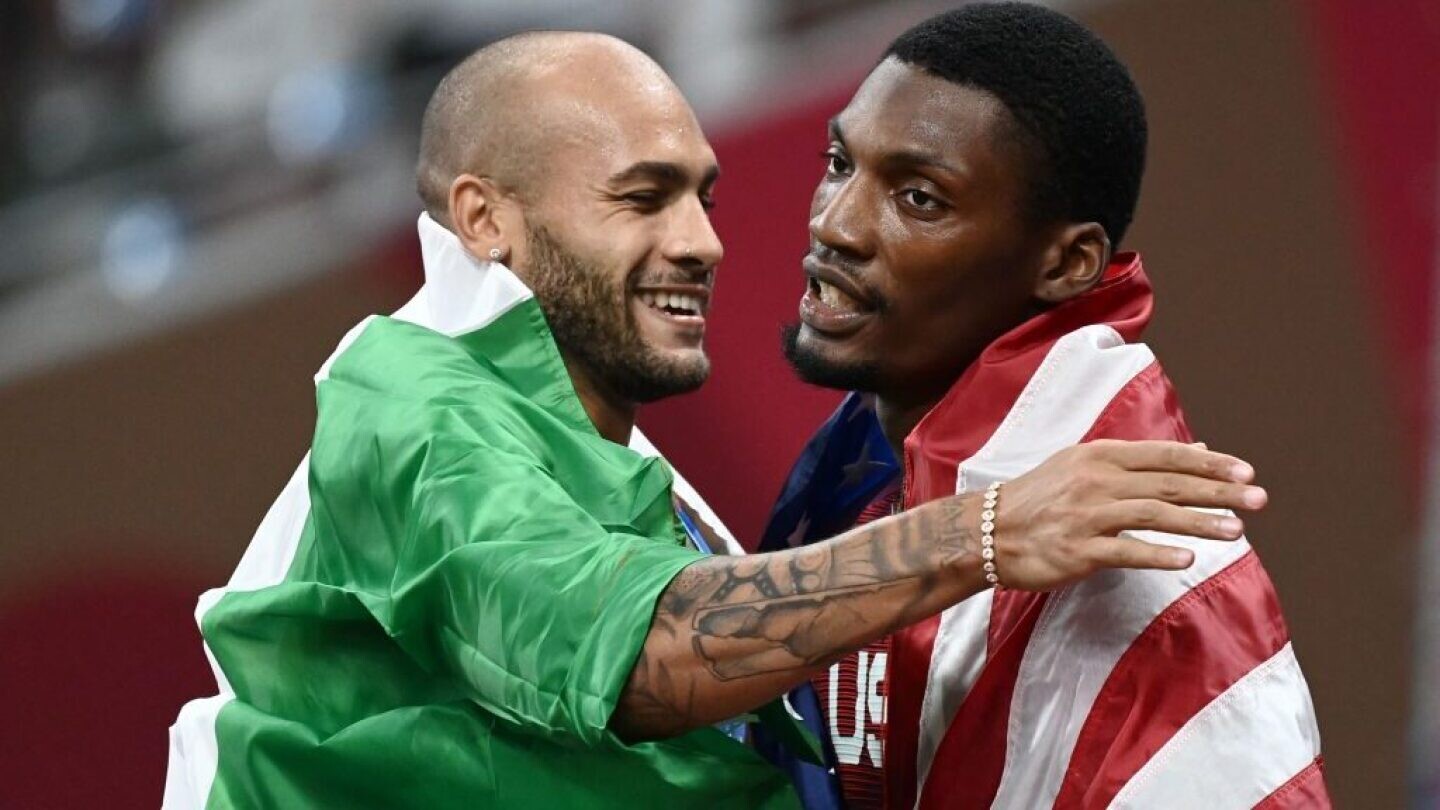
Previously, the Italian was coached by Paolo Camossi for several years. The tactician guided Jacobs to take the delayed 2020 Olympic title in the 100m and it is clear Jacobs will not be working with him as he gears up to defend his Olympic title.
On his part, Reider is a controversial coach who has landed himself in trouble most of the time. In May this year, Reider agreed to serve one year of probation, while continuing to coach, in resolving a case with the U.S. Center for SafeSport.
The center handles allegations of emotional, physical, and sexual abuse in Olympic and Paralympic sports. The center has not published details of Reider’s case.
The attorney wrote that Reider acknowledged a “consensual romantic relationship with an adult athlete.” The attorney wrote that “Reider was not found in violation of any other sexual misconduct claims” and that his case was closed.
Meanwhile, former World Champion Fred Kerley also indicated in social media posts that he is now being coached by 1992 Olympic 400m gold medalist Quincy Watts.
Kerley was also eliminated in the 100m semifinals at last month’s World Championships and will be seeking a comeback next year.
“Choosing to make changes is always risky, even riskier during a year like the Olympics. I felt that I needed to bet on myself.
I needed to prove to myself that I was all in and that meant seeking the guidance of COACH WATTS I’m entrusting him to bring out the best version of myself in the most important athletic year of my career. Ya’ll ready?” the post read.
Kerley, 28, has trained under Grenada’s Alleyne Francique since he sprinted for Texas A&M. Watts, an assistant at USC, also coaches Olympic and world 400m hurdles medalist Rai Benjamin.
(09/26/2023) Views: 348 ⚡AMPby Abigael Wuafula
Paris 2024 Olympic Games
For this historic event, the City of Light is thinking big! Visitors will be able to watch events at top sporting venues in Paris and the Paris region, as well as at emblematic monuments in the capital visited by several millions of tourists each year. The promise of exceptional moments to experience in an exceptional setting! A great way to...
more...Why Agnes Ngetich's world record will not be ratified
Ngetich broke the women-only world 10km record at the Trunsylvania 10km but her record will not be ratified.
Agnes Ngetich made headlines two weeks ago as she oozed class to win the women’s 10km and break the women-only world 10km record at the Trunsylvania 10km, a World Athletics Elite Label road race held as part of the Brasov Running Festival in Romania.
Ngetich clocked 29:24 to cut the tape first ahead of Catherine Reline who finished second in 30:14 as Joy Cheptoyek of Uganda completed the podium in 30:34.
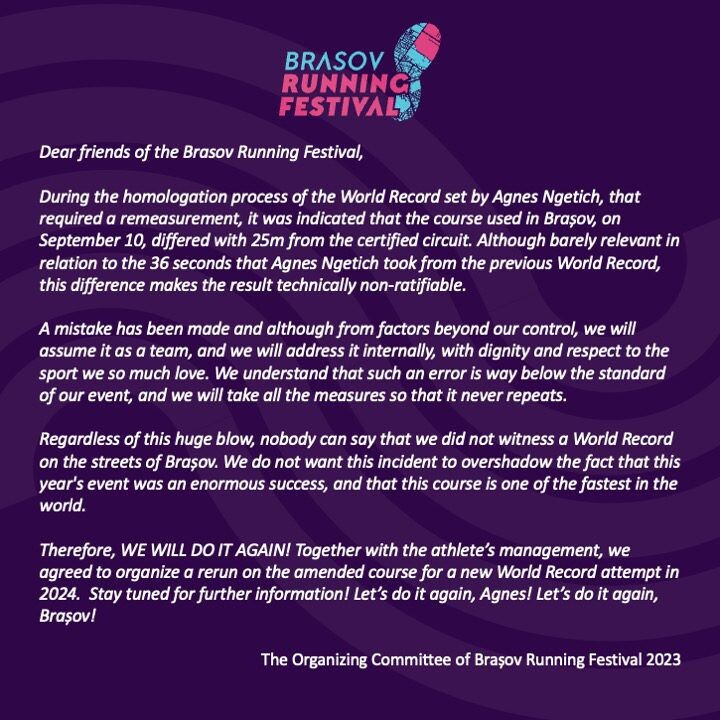
However, the 22-year-old’s record will not be ratified, as the course was found to be short by 25m. The race organisers made the announcement on their Facebook page, indicating that the course did not meet the standards of World Athletics.
When any world record is broken, World Athletics is required to re-measure the course to ensure it meets the required distance.
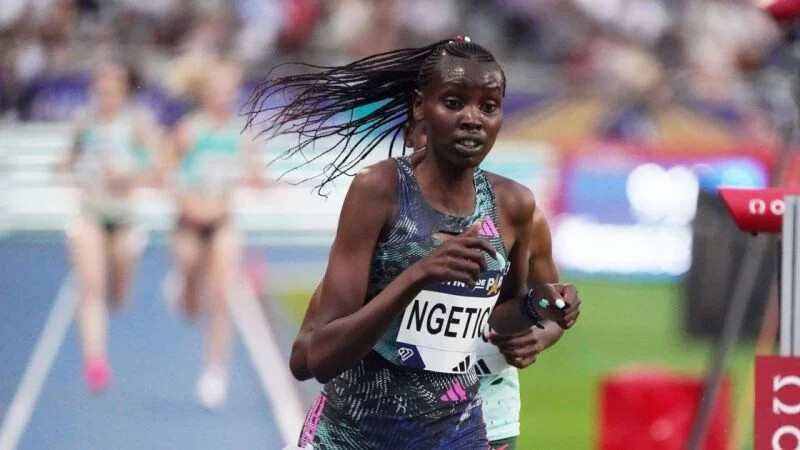
A part of the lengthy post on Facebook read: “During the homologation process of the World Record set by Agnes Ngetich, that required a remeasurement, it was indicated that the course used in Brasov, on September 10, differed with 25m from the certified circuit.
Although barely relevant in relation to the 36 seconds that Agnes Ngetich took from the previous World Record, this difference makes the result technically non-ratifiable.”
With her world record not being ratified, this means that the previous 10K record of 30:01, was set by the late Agnes Tirop. The women’s 5k record of 14:29, set by Ethiopia’s Senbere Teferi in 2021 will also stand.
(09/26/2023) Views: 361 ⚡AMPby Abigael Wuafula
Brasov Running Festival 10K
"Brasov Running Festival” is set to become the iconic running event of Romania, with elite, popular and children races, concerts, conferences and other running related activities. The elite 10K race, Trunsylvania International 10K is expected to enjoy an impressive participation of world class runners on a very fast course. -The only World Athletics Elite Label 10K in South-East Europe -The...
more...Dafne Schippers: Two-time world champion retires aged 31
Two-time world 200m champion Dafne Schippers has retired at the age of 31.
The Dutchwoman won gold at the 2015 World Championship in Beijing and in London two years later.
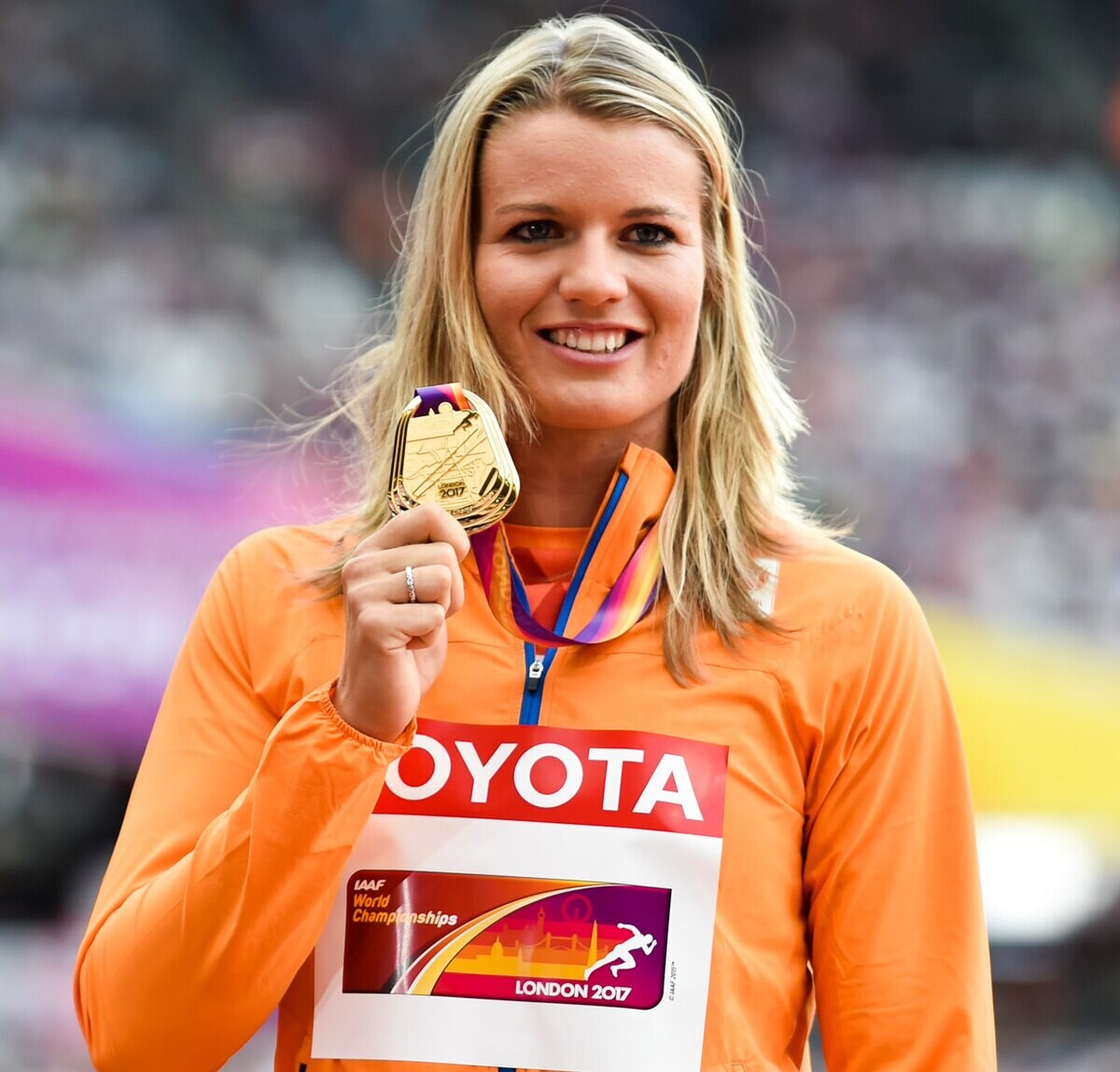
Competing in the same era as sprint greats Shelly-Ann Fraser-Pryce and Elaine Thompson-Herah, Schippers also claimed 100m silver at the 2016 Olympics in Rio.
"The race stops here," Schippers posted on Instagram.
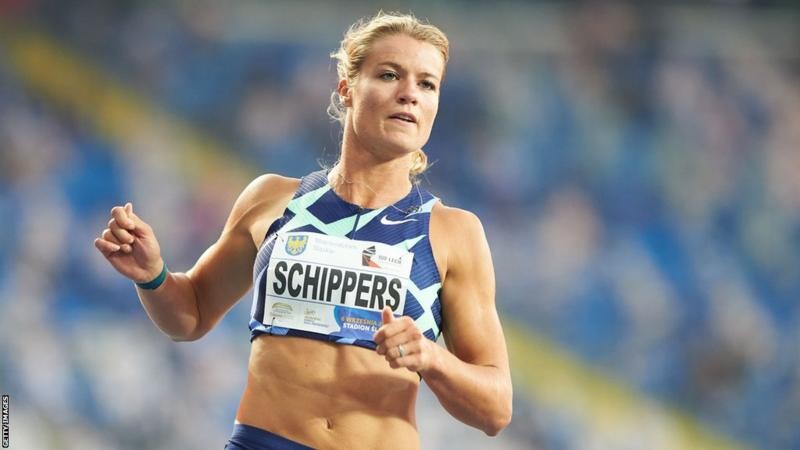
"As an athlete, you always know this day will come, that at one point, your career will be a moment in time - a collection of memories and hopefully medals."
Schippers won heptathlon bronze at the 2013 World Championships in Moscow before focusing on sprinting.
She is the sixth fastest woman of all time in the 200m, setting a European record of 21.63 seconds when she beat Jamaica's Thompson and Veronica Campbell Brown to world gold in 2015.
"Today, I have decided to take my life off track to pursue and embrace whatever comes next, but not without saying a massive thank you for all the endless support. It has been a journey without regret," Schippers said.
"My family, my team, my fans, and my sponsors, you made it all worthwhile."
Schippers has been hampered by injuries in recent years and has not raced since May 2022.
(09/26/2023) Views: 349 ⚡AMPby BBC Sport
Pre-race weight loss: Helpful or harmful
Many runners fantasize about losing weight (“Wouldn’t it be nice to lose a few pounds…”). Unlike some athletes who have to lose weight in order to meet a specific division for their sport (such as boxers or wrestlers), runners often choose to target a lower-than-normal weight for a specific race. Note: Dropping weight once or twice a year is far healthier than trying to keep a low weight all year round!
Runners, like skaters, dancers, and gymnasts, who try to maintain a long-term low weight generally end up living in “food jail.” While this article will not focus on the problems with long-term under-eating, it’s well known that keeping the body at an unnaturally low weight sets the stage for injury after injury. This article will offer help for runners who want to lose weight for a short-term goal, such as a specific race.
Runners who seek to lose pre-race weight may believe being lighter will offer the advantage of having less weight to lug around. Yes, there’s a lot of talk about “power to weight ratio.” Unfortunately, the body is not a robot and does not work quite as mathematically as many people would like it to. As one champion commented, “I ran the same times in the same race despite being 8 pounds heavier.”

But a big problem with dropping pre-race weight is too many runners target a minimal weight that might not be their best performance weight. I suggest you focus less on a number on a scale and instead tune into where you compete well. And whatever you do, don’t resort to last-minute restrictive dieting to reach an unrealistic weight goal. Inadequate pre-event fueling can contribute to early bonking, poor performance, and disappointments. If you eat well and compete at your natural weight, you will be better able to run past any skinnier but depleted opponents.
So what are weight-focused runners supposed to do?

Obviously, they are not supposed to wait until the last few days before an event to lose weight by abstaining from food and water, over-exercising, and abusing their bodies. The better path is to start chipping away at weight loss weeks in advance. If you have to lose 10 pounds, give yourself at least 5 to 10 weeks to do so, if not more.
Ideally, runners should first have their body fat accurately measured to determine if they even have fat to lose. Females should not drop below 12% body fat, males no less than 5%. Some runners might need to lose muscle to be able to reach their weight goal—and that seems counter to being a strong and powerful athlete.
What’s the best way to lose weight?
The best way to lose weight is to push yourself away from the dinner table before you eat your fill! Plain and simple, you have to eat less than your body requires. Easier said than done. Hence, these tips might be helpful.
• Knock off only 300-500 calories/day from your typical daily intake. Do NOT chop your food intake in half or eat as little as possible! As an athlete, you need fuel to train.
• Fuel by day; diet by night. Plan to lose weight when you are sleeping—not when you are trying to train hard.
• Surround your workout with food, so that you fuel-up and refuel.
• Do NOT cut out all carbohydrates. Runners need grains, veggies, and fruits to optimize their muscle glycogen stores. A very low-carb diet results in depleted glycogen, “dead legs,” and inability to train hard.
• Enjoy carb-protein combinations: carbs to fuel muscles; protein to build and repair muscles. Protein is also satiating and can help curb hunger.
• When it gets to “crunch time,” target about 1.5 g carb, 1 g protein, and 0.5 g fat per pound of body weight (3 g carb, 2 g pro, 1 g fat/kg). This means a 150-lb (68 kg) runner would target about 200 g carb, 135 g pro, and 70 g fat (~1,950-2,000 calories/day) during the weight-loss weeks.
• Divide the calories into 4 food buckets and eat a meal at least every 4 hours. (The clock starts ticking when you get up in the morning). A runner who trains from 6:30 to 7:30 a.m. could divide breakfast into 100-200 calories pre-workout at 6:00ish, then 400 calories post-workout at 8:00; eat early lunch (500 cal.) at 11:00ish; later lunch (400-500 cal.) at 3:00ish, and dinner at 6:00-7:00ish (500 cal.). The rest of the night, chew gum, drink herbal tea, go to bed early? (If you are ravenous, please eat a bit more…)
• If you don’t have fat to lose, you can shed a few pounds by restricting fiber to reduce gut contents. If you have long hair, you could also contemplate chopping it off and donating it to Locks for Love (ha!)..
After the race…
The standard advice for weight-focused runners is to just lose the weight and keep it off. This makes sense intellectually, but it is the opposite of what the body wants to do physiologically. After having been underfed, hungry runners experience a very strong drive to eat, if not over-eat, and regain all the lost weight. This happens with most dieters, athletic or not.
The urge to devour food after having lost weight is physiological, and not simply due to lack of will-power. Here’s the analogy: If you hold your breath for too long, you will uncontrollably gasp for air. If you rigorously restrict calories for too long, you will uncontrollably grab for food and easily binge-eat. No wonder eating disorders blossom in weight-focused sports!
The bottom line
Any way you look at it, losing weight when you really are not over-fat in the first place is not much fun. Yes, it creates a bond with others doing the same thing—misery loves company—and is embedded into the culture of weight-focused sports like running. Ideally, it’s time to change that culture to focus more on health (both short and long term) and injury reduction. Working with a sports dietitian can help with you fuel well to perform well.
(09/25/2023) Views: 354 ⚡AMPby Colorado Runner
Sheila Chepkirui hungry for more success after Berlin Marathon exploits
Chepkirui finished second behind record holder Tigist Assefa and she is now eyeing more success.
Berlin Marathon runner-up Sheila Chepkirui is definitely the lady going to watch when it comes to the full marathon.
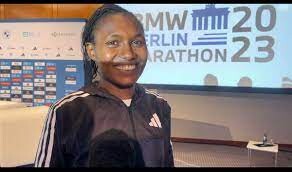
Chepkirui defied all odds to finish second behind newly-crowned world record holder Tigist Assefa of Ethiopia. She has now set her sights on winning one of the major races since she believes she has all it takes to achieve her dream.
She has now competed in two World Marathon Majors, the London Marathon where she finished fourth, and now the Berlin Marathon where she has finished second.
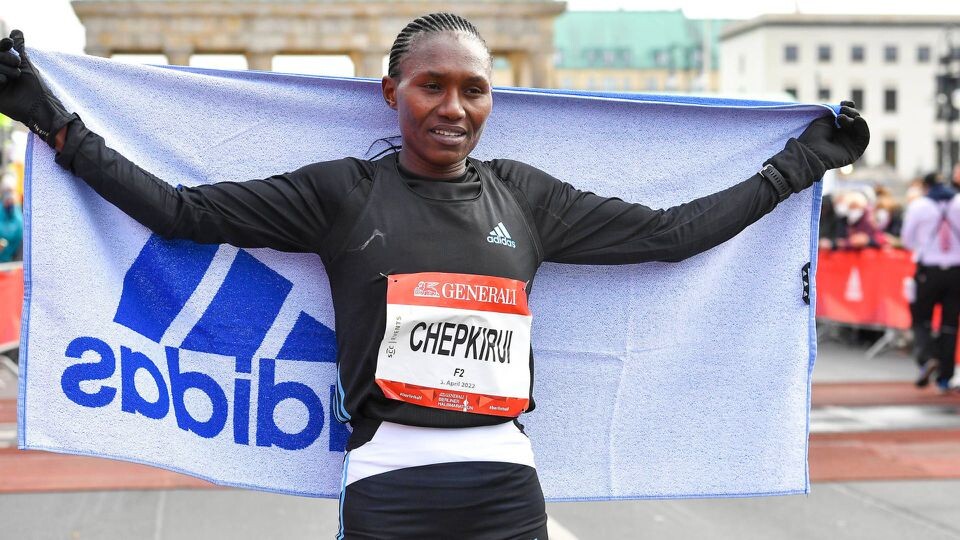
Speaking to Capital Sport, she said: “I’m happy to finish in the podium bracket in one of the Major Marathons.
I pray that one day I win one of the major races. I don’t know where I will run next…right now I shall be taking a break to just rest.”
She made her debut at the Valencia Marathon last year where she finished third and so far, her progress has been smooth.
She extended her hand of gratitude to the fans who showed up and cheered her on as she went ahead to finish second.
“I thank them for praying for me and supporting me…that was motivation enough for me to execute a good run,” she said.
(09/25/2023) Views: 342 ⚡AMPby Abigael Wuafula
BMW Berlin Marathon
The story of the BERLIN-MARATHON is a story of the development of road running. When the first BERLIN-MARATHON was started on 13th October 1974 on a minor road next to the stadium of the organisers‘ club SC Charlottenburg Berlin 286 athletes had entered. The first winners were runners from Berlin: Günter Hallas (2:44:53), who still runs the BERLIN-MARATHON today, and...
more...Ethiopia’s Derara Hurisa targets victory at TCS Toronto Waterfront Marathon
Derara Hurisa is the latest in a long list of Ethiopian greats to commit to the 2023 TCS Toronto Waterfront Marathon scheduled for October 15th.Once again, the event is a World Athletics Elite Label race. The 26-year-old has had an extraordinary marathon career to date ever since winning his debut at the 2020 Mumbai Marathon. There he ran 2:08:09 which remains his personal bestdespite a few other memorable outings.Two years ago Hurisa won the Guadalajara Marathon at 1,600m altitude in Mexico eight months after achieving notoriety for all the wrong reasons in Vienna.
Hurisa, then still relatively young at 23 years of age, crossed the finish line first at the Vienna Marathon. He clocked a time of 2:09:22 three seconds ahead of Kenya’s Leonard Langat. No sooner had Hurisa crossed the finish then officials approached him and within minutes he was disqualified.
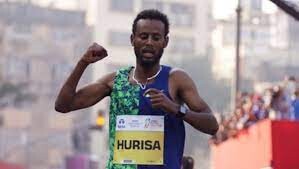
World Athletics has instigated strict rules to limit the thickness of racing shoes. It was found that Hurisa had worn a different pair of shoes to those he submitted in the pre-race inspection. They were one centimeter too thick. It is believed this was the first time a marathoner had been disqualified under these rules.
“My preparation for Vienna marathon was very good,” he says looking back on the incident. “I had to switch my shoes because it was my very first time putting on those shoes. It wasn’t the shoes I wore when I was in training. So I decided to switch and use them without knowing it was different. The color was similar.”
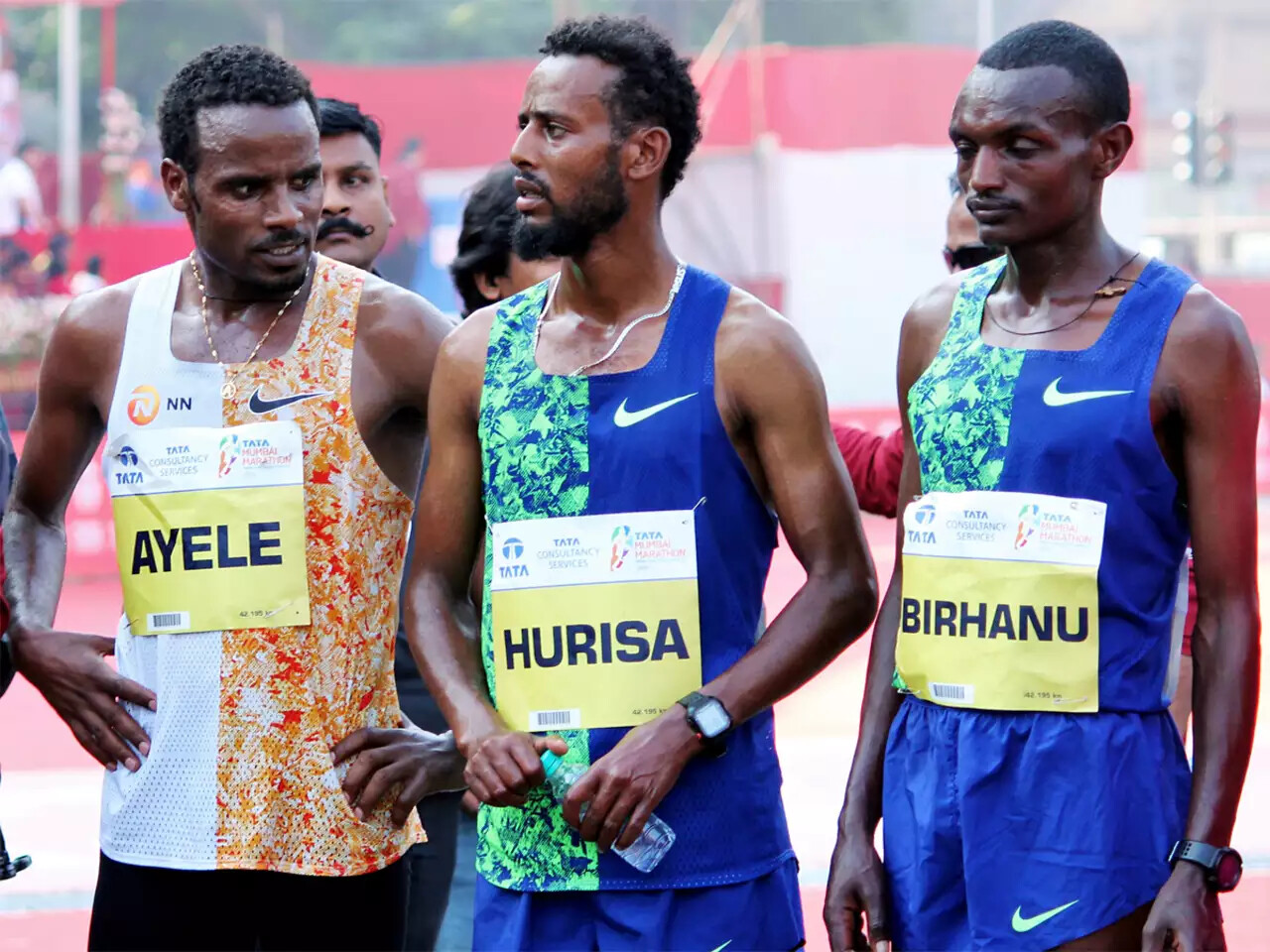
Not only did he run himself to exhaustion over the 42.2 kilometers but the €10,000 first-place prize money went to Langat. He admits he was very angry to learn of his mistake.
“I was shocked by that news when (Eritrean runner) Tadesse Abraham told me that I was disqualified,” he remembers, “because it wasn’t something I was expecting. Yes, I was angry, definitely.”
As an indication of Hurisa’s potential Langat returned to Vienna a year later and finished second in 2:06:59. The Ethiopian believes he is capable of times quicker than this.
Since then he has put the disappointment behind him. Earlier this year he finished second in the Stockholm Marathon. The race features many of the sites of the Swedish capital. But can also be challenging due to its numerous turns and warm June weather. His time there was a modest 2:11:01 on a hot day. Toronto Waterfront Marathon has far fewer turns and with a course record of 2:05:00 (Philemon Rono of Kenya) is far more inviting. He is optimistic of a great run in Toronto after some good early training sessions.
“It’s going great and yes, I’m pleased with my fitness level more than ever,” he reports. “I have been training for six or seven days in a week. Compared to previous marathon buildups it has been much better.”
Asked to reveal his goal for Toronto he is concise and to the point: “I would like to achieve a victory with a good time.”
Hurisa grew up in Ambo in western Ethiopia. Kenenisa Bekele was inspired by him winning the three-time Olympic titles and setting world 5,000m and 10,000m records. Hurisa was recruited by the Bahrain Athletics Federation after a cross-country race in Oromia. He was still in his teens.
For three years he lived in the oil-rich country earning a salary to run. At the 2015 World Cross Country Championships in Guiyang, China he placed 22nd in the Under-20 race helping Bahrain to a 4th place finish. A year later though he went back to Ethiopia and now travels on an Ethiopian passport.
These days he is focused on the marathon under the watchful eye of coach Gemedu Dedefo and enjoys spending time with his wife and two children.
“I like to spend my time with my family – I’m married and I have one boy and one girl – and I like going to church,” he explains. “I do return to my birth village whenever there is holiday.”
Conditions are likely to be cooler in Toronto compared to what he experienced in Mumbai. Clearly, he will be prepared to run with the leaders. And he is certainly due some good luck.
(09/25/2023) Views: 348 ⚡AMPby Paul Gains
TCS Toronto Waterfront Marathon
The Scotiabank Toronto Waterfront Marathon, Half-Marathon & 5k Run / Walk is organized by Canada Running Series Inc., organizers of the Canada Running Series, "A selection of Canada's best runs!" Canada Running Series annually organizes eight events in Montreal, Toronto and Vancouver that vary in distance from the 5k to the marathon. The Scotiabank Toronto Waterfront Marathon and Half-Marathon are...
more...Five reasons to run on grass this fall
For many runners, fall is cross-country season – a time to ditch the track and sidewalks and start logging miles on grassy fields and parks. Even if you’re a dedicated road runner with no cross-country races on the calendar, it might be time to give your sneakers a change of scenery by hitting the grass. Transitioning from asphalt to grassy trails or fields can offer a refreshing change and numerous benefits for your running experience. (Note, you don’t have to run barefoot to benefit from the change.)
1.- Reduced impact on your body
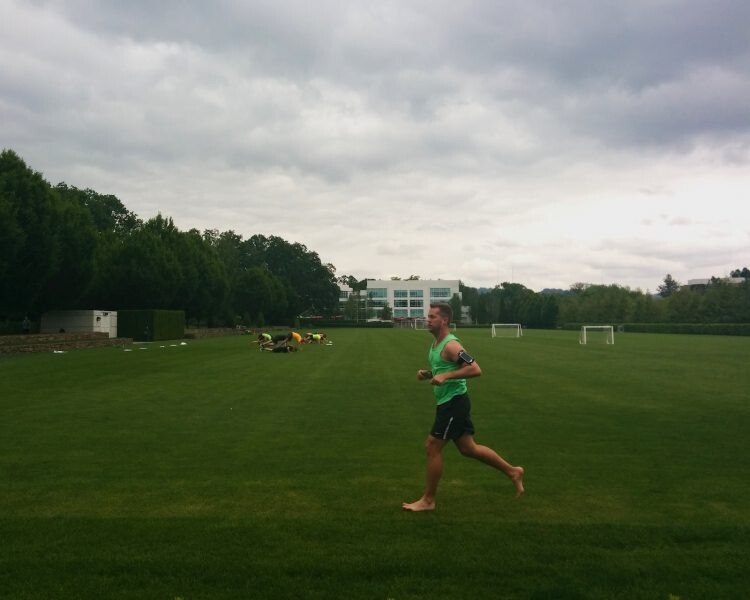
If you’ve been struggling with aches and pains, the grass might offer some relief. One of the primary advantages of running on grass is the softer surface. Grass provides a more forgiving terrain than concrete or asphalt, which can be beneficial for those prone to shin splints, joint pain or runners who are recovering from other injuries.
2.- Improved strength and stability

Running on uneven surfaces like grass engages stabilizing muscles that are often underused on flat roads. This helps improve balance and overall strength, which can enhance your running performance and prevent injuries.
3.- Mental refreshment
The natural surroundings of grassy trails or parks provide a mental escape from the hustle and bustle of city streets. The serene environment can reduce stress and make your runs more enjoyable.
4.- An alternative to trails
Trail running is a great way to connect with nature and change up your usual running routine, but if there aren’t any trails in your area, a grassy field or park makes an excellent alternative. You get many of the same benefits of running on trails, but as a bonus, you’re less likely to get lost. For runners who don’t feel safe running alone on trails, public parks also offer a place to run on softer terrain that is more out in the open and therefore safer.
5.- Better air quality
Grass environments typically have cleaner air than busy roads, reducing your exposure to harmful pollutants, which can improve your overall health and make your runs more enjoyable.
Road running undoubtedly has its merits, and if you’re training for a road race it is important to log at least some of your miles on the roads–just don’t underestimate the benefits of transitioning to grass. Whether you’re looking to reduce impact or simply enjoy the beauty of nature, running on grass is a great way to inject some variety into your running routine. So, lace up those shoes, find a nearby grassy field or trail, and explore the green side of running.
(09/25/2023) Views: 339 ⚡AMPby Brittany Hambleton
Assefa smashes world marathon record in Berlin with 2:11:53, Kipchoge achieves record fifth win
Ethiopia’s Tigst Assefa successfully defended her BMW Berlin Marathon title in style, smashing the world record with 2:11:53* while distance running legend Eliud Kipchoge notched up a record fifth victory at the World Athletics Platinum Label road race in the German capital on Sunday (24).
Assefa took more than two minutes off the women’s world record of 2:14:04, which had been set by Kenya’s Brigid Kosgei at the 2019 Chicago Marathon. Kipchoge, meanwhile, won by 31 seconds in 2:02:42, the fifth-fastest time of his illustrious career.
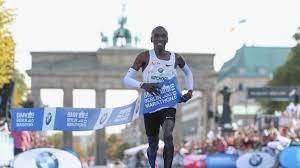
The men’s and women’s races unfolded in contrasting style.
A large pack of the leading contenders ran together through the early stages of the women’s race, passing through 5km in 15:58. 13 women were still in contact with the lead as they passed through 10km in 31:45.
By the time 15km was reached in 47:26, Assefa and compatriot Workenesh Edesa had managed to open up a slight gap on Kenya’s Sheila Chepkirui and Ethiopia’s 2015 world 5000m silver medallist Senbere Teferi and Zeineba Yimer. The first 12 women were strung out, but still within 15 seconds of one another – and all were running inside world record pace.
Sensing that most of her rivals were already starting to fade, Assefa took greater command of the race by throwing in a 2:59 split for the 16th kilometre. By the time she reached 17km, Assefa had dropped Edesa, the last of her opponents, and had just a few male pacemakers for company.
Assefa seemed to grow in confidence – and pace – once she knew she was alone at the front of the pack, and she went on to reach the half-way point in 1:06:20, putting her on track to smash the world record by more than a minute.
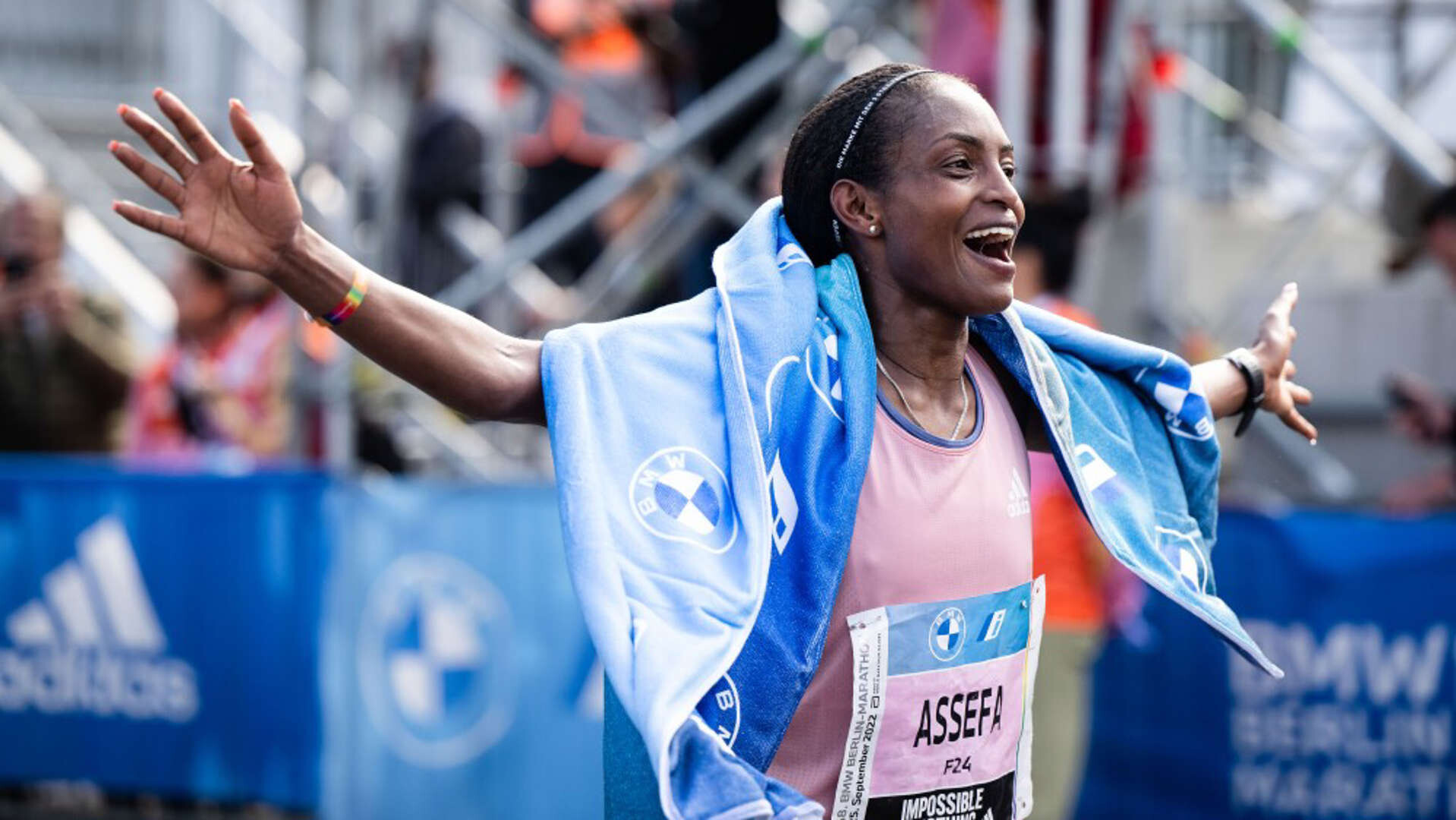
And then she sped up. The next kilometre was covered in 2:48, the fastest of the race up to that point, extending her advantage over Edesa and Chepkirui. Assefa’s 25km split of 1:18:40 was still well inside world record schedule; Chepkirui and Edesa, now almost a minute behind the leader, had dropped off the pace, but were still on course for huge PBs.
Assefa, still looking incredibly relaxed and composed, covered the next 10km segments in a remarkable 31:02, bringing her to 35km in 1:49:41. Her 30km split was 1:34:12, the second-fastest mark in history for that checkpoint (behind Ruth Chepngetich’s 1:34:01 from the 2022 Chicago Marathon).
But while Chepngetich faded badly in that race last year, Assefa went from strength to strength in the closing stages in Berlin.
She got to 40km in 2:05:13, following another 15:32 5km split, putting her on course for a finishing time in the 2:12 range. Spurred on by the knowledge that the world record was in the bag, Assefa picked up her pace in the closing kilometres and charged through the finish line in 2:11:53.
Chepkirui held on to second place in 2:17:49, while Tanzania’s Magdalena Shauri made a remarkable breakthrough to take third place in 2:18:41, a huge national record.
A record eight women finished inside 2:20.
Berlin victory no.5 for Kipchoge
Kipchoge may not have improved on his own world record, but he added to his legacy on the streets of Berlin by achieving a record fifth win, clocking 2:02:42.
The two-time Olympic champion eventually won by 31 seconds, but for most of the race he had company in the surprising form of Ethiopia's Derseh Kindie.
The duo made an early break from the rest of the field, reaching 5km in 14:12 with a 15-second margin over the rest of the elite men. By 10km, reached in 28:27, they were operating at exactly 2:00:00 marathon pace and more than half a minute ahead of the seven-man chase pack.
Kipchoge and Kindie continued to run together at world record schedule through the half-way point, reached in 1:00:22, but the pace started to drop soon after. By the time they got to 25km (1:11:48), they were no longer on schedule to break Kipchoge's record of 2:01:09 set last year in Berlin.
But records weren't Kipchoge's main concern; he had company in the form of a relatively unheralded runner up to 30km (1:26:25), so his attention was primarily on securing victory.
At about 31km into the race, Kipchoge increased his tempo and, with a cursary glance over his shoulder to see if Kindie was able to follow, knew it was enough to see off his opponent. The Kenyan great was alone in front at last, while Kindie continued for another minute or so before stepping off the course.
Kipchoge still had more than 10km to go, but his lead was comfortable and his form was controlled and relaxed. He went on to win in 2:02:42, while a fast-finishing Vincent Kipkemoi came through to take second place in 2:03:13. Ethiopia's Tadese Takele was third in 2:03:24.
A record nine men finished inside 2:05 and 15 finished inside 2:06, making it the deepest men's marathon in history. There were national records for Germany's Amanal Petros (ninth in 2:04:58) and Switzerland's Tadesse Abraham (11th in 2:05:10).
(09/24/2023) Views: 472 ⚡AMPWow! Berlin always delivers. Imagine smashing a world record by this margin! 9/24 8:52 am |
BMW Berlin Marathon
The story of the BERLIN-MARATHON is a story of the development of road running. When the first BERLIN-MARATHON was started on 13th October 1974 on a minor road next to the stadium of the organisers‘ club SC Charlottenburg Berlin 286 athletes had entered. The first winners were runners from Berlin: Günter Hallas (2:44:53), who still runs the BERLIN-MARATHON today, and...
more...Does Running at Night Make for a Bad Night’s Sleep?
Experts offer advice for those struggling to fall asleep postrun.
Sometimes running at night just makes life easier, especially on busy days when it seems there isn’t nearly enough time to finish your to-do list. Also, evening runs are ideal for those who turn to exercise as a way to de-stress after a long day. But can running at night ruin your sleep? And therefore, does it make nighttime running counterintuitive to your overall training, considering sleep is crucial for recovery?
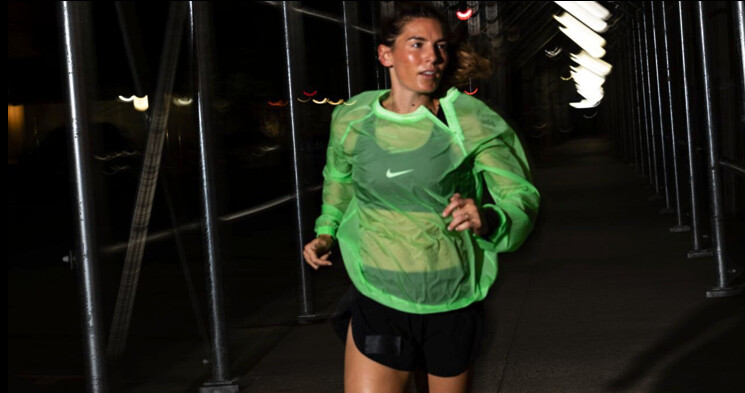
Like most conundrums runners contemplate, the answer depends on the runner. Here, we explain how running at night can affect your sleep and what to do if you feel like your nighttime run is worsening your sleep issues.
Does running at night make for a bad night’s sleep?
“In the past, the recommendation was, you really shouldn’t exercise in the evening at all,” Bob Wright, director of lifestyles education at Hilton Head Health tells Runner’s World.
Experts recommended this for two reasons: First, because exercise can increase endorphins, which can reduce sleepiness. Second, because exercise increases one’s core body temperature, which makes it hard to fall asleep, Wright explains.
However, a number of studies suggest the opposite, including a systematic review and meta-analysis published in Sports Medicine in 2019. This research greenlights exercise in the evening as long as you complete vigorous activities, like long runs or workouts, an hour before bedtime.
“For most people, at least mild or moderate exercise doesn’t seem to interfere with sleep very much,” says Scott Kutscher, clinical associate professor of sleep medicine at Stanford University. But it all depends on the person, he adds.
When we fall asleep, our melatonin levels start to rise, and our body temperatures begin to fall, both of which signal it’s time for bed, Kutscher explains. If you run before bed your core temperature will increase but once you stop, your sweat will help you cool down. This is a passive cooling effect that can actually help some runners fall asleep, he explains.
However, a rise in body temperature before bed can be counterproductive for runners who don’t cool off as easily. For this population, running before bed can make it harder to fall asleep. What’s more: If you’re aiming to re-hydrate and re-fuel postrun, that can also prolong bedtime, Kutcher adds.
In short, both experts agree running before bed will not ruin sleep for most. However, if you have difficulty falling asleep after an evening run, then you might want to reconsider your nighttime routine.
Tips to Help You Sleep Better After a Workout
If you have difficulty sleeping after a long evening run or workout, these tips can help you fall asleep, according to Kutscher and Wright.
1. Time It Right
Plan to stop running at least one hour before bedtime to allow yourself time to literally cool down, Wright says. Keep in mind, there’s no hard and fast rule, so you can use an hour as a benchmark and adjust it as needed.
2. Add Relaxation Practices
Incorporate less intense exercise into your cooldown routine to help you transition to sleep. Kutscher suggests adding stretches or yoga after a run to help you relax. During this time, you can also practice mindfulness and breathwork, which also aids sleep, he says.
Mind-body activities, including yoga or Tai Chi, can aid in falling asleep in general so they’re good options to add to your before-bed routine at any time, Wright adds.
If you noticed you do have trouble sleeping after an evening run, consider swapping your miles for less intense aerobic exercise. Holding off on your run until the morning can help regulate your sleep-wake cycle and improve sleep quality overall, as it provides natural light when you get out of bed (as long as you head outside), Wright adds.
3. Pay Attention to Pre and Postrun Routines
Be mindful of what you’re doing both right before and right after your evening run, because that’s what may disrupt your sleep more than running itself.
For example, consuming caffeinated products before or during a workout might make it harder to fall asleep. Also, if you don’t fuel after a sweat, hunger pangs can disrupt your zzzs.
If you need a snack after a run and before bed, Kutscher suggests eating foods rich in melatonin, magnesium, and potassium, like cherries or bananas. Keep in mind some people may need more food to replenish after a workout, not just a simple snack, so see what works best for you, keeping note of your nighttime habits so you can pinpoint how different techniques worked for your rest.
(09/24/2023) Views: 331 ⚡AMPRémi Bonnet Breaks Longtime Pikes Peak Ascent Record
The Swiss runner scaled the 14,115-foot Colorado peak in just over two hours, taking down a 30-year-old record.
It was a record-breaking attempt 30 years in the making, but over the weekend, Matt Carpenter’s long-standing record for the fastest ascent up Pikes Peak was finally broken by Swiss runner Rémi Bonnet. The 28-year-old navigated the famous 14,115 peak in just 2:00:20, breaking Carpenter’s record of 2:01:06 from the 1993 Pikes Peak Marathon. Bonnet set the record at this year’s Pikes Peak Ascent on September 16. The 13.3 mile race set off in Manitou Springs, Colorado, with a grueling incline of 11 percent over the 7,800 feet to the summit. The last 3 miles were littered with snow (in addition to his running pursuits, Bonnet is also an accomplished ski mountaineer).Bonnet was the defending champion from the event, winning last year’s race in 2:07:02. He knew it would take a special day to unseat Carpenter, whose record was considered one of the toughest in the sport.

“I’m really pleased to have beaten this record! People thought it was impossible, but I did it, and I’m really proud to show who the world’s best climber is,” Bonnet told Run247. “Now I need to come back and go under the 2-hour barrier!”
Bonnet won the $3,000 first-place prize in this year’s Golden Trail World Series race but failed to get the $10,000 time bonus for finishing under two hours—though toppling the record is probably a grand consolation prize.Bonnet has made a name for himself in recent years for uphill running, re-setting his own fastest time on the Manitou Springs Incline, a 2,000-foot climb, the week before his record-breaking run at Pikes Peak.
Patrick Kipngeno of Kenya, a two-time World Mountain Running Championships Uphill race winner, placed second with a time of 2:04:09, the third-best time on the course behind only Carpenter and now Bonnet. American Eli Hemming was third in the event with a time of 2:07:40 after placing fourth last year.
American Sophia Laukli won the women’s race in 2:35:54, followed by Judith Wyder (2:39:35) and Anna Gibson (2:43:59).
(09/24/2023) Views: 277 ⚡AMPby Runner's World
Focus shifts from track as road racing season heats up
As the international outdoor track and field season draws to a close, we now look forward to the feast of top-class road racing that will be on offer throughout the final four months of the year.
In just 11 days’ time, the focus of the sport will be on the World Athletics Road Running Championships Riga 23, where the best distance runners on the planet will compete for global honours in the mile, 5km and half marathon.
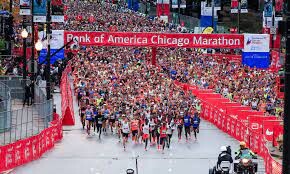
The likes of world champion Faith Kipyegon, world record-holder Berihu Aregawi and Olympic champion Peres Jepchirchir are among the stars set to compete in the Latvian capital. Recreational runners from around the world, meanwhile, will run on the same courses as the greats when they take to the streets of Riga for the associated mass races.
There are also eight Platinum Label road races between September and December, the first of which was held last weekend with Betsy Saina and Othmane El Goumri winning the Blackmores Sydney Marathon. Of the seven other upcoming Platinum events, three of them form part of the Abbott World Marathon Majors (WMM) series: the BMW Berlin Marathon, the Bank of America Chicago Marathon and the TCS New York Marathon.
Platinum Label road races, Sep-Dec 2023
8 Oct – Chicago Marathon (WMM)
15 Oct – Amsterdam Marathon
5 Nov – New York Marathon (WMM)
26 Nov – Shanghai Marathon
3 Dec – Valencia Marathon
17 Dec – Bang Saen Half Marathon
The Chicago Marathon two weeks later will be highlighted by a clash between defending champion Ruth Chepngetich and London Marathon winner Sifan Hassan.
Two-time Tokyo Marathon champion Birhanu Legese, the fourth-fastest marathon runner of all time, headlines the men’s field for the Amsterdam Marathon. Defending champion Evans Chebet will take on two-time winner Geoffrey Kamworor at the New York City Marathon in November.
For the first time since the Covid-19 pandemic, the Shanghai Marathon in late November will welcome an international elite field.
Just one week later, multiple global champion and world record-holder Joshua Cheptegei will make his long-awaited marathon debut in Valencia. In recent years the event has established itself as one of the highest-quality marathons in the world, and this year’s edition will surely be no exception.
Towards the end of the year, the Thai coastal area of Bang Saen will host one of the newest additions to the Platinum Label calendar, the Bangsaen21 Half Marathon. Since the pandemic, it has been largely a domestic affair, but it will be back with a bang this year with a high-quality elite line-up.
Hundreds of road races each year are granted a World Athletics Label, ranging from ‘Platinum’, for the top tier of road events, to Gold, Elite and Label. There are still more than 100 World Athletics Label road races due to take place between now and the end of 2023.
(09/24/2023) Views: 374 ⚡AMPLong queues at Vitality London 10k race after runners do not receive bib numbers
Large queues have formed for a running race in London after swathes of runners did not receive their bib numbers. Around 15,000 runners were due to take part in the Vitality London 10km race on closed roads around the capital on Sunday.
Queues of participants waiting for replacement numbers snaked through Green Park, with the reason behind the delay unknown.
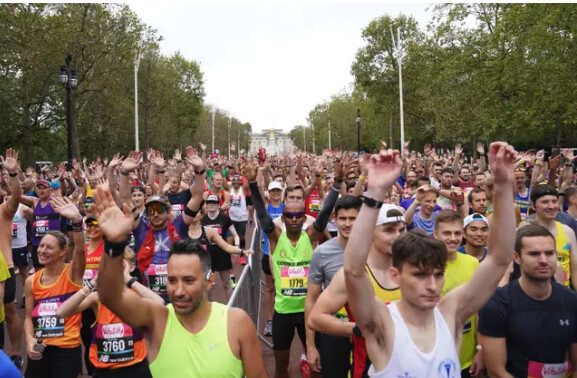
The first wave of runners was due to set off at 10am with the rest heading off in staggered starts, but organisers were having to hold them back.A London Marathon Events spokesperson told the PA news agency: “We’re aware there are a number of people who haven’t received their numbers, so we’re issuing replacement numbers as fast as we can at Green Park.”
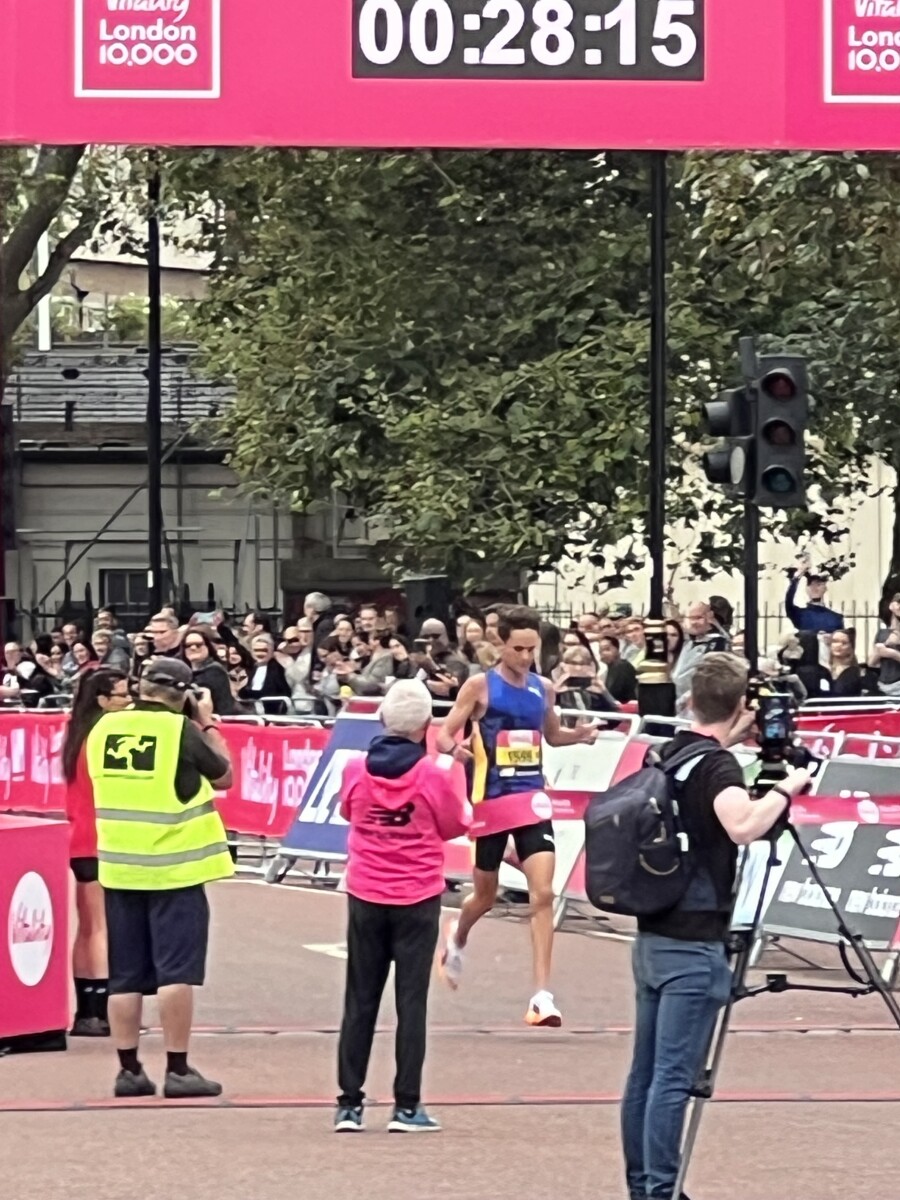
Anthony Bailly, 33, an IT project manager from Haringey, north London, said he had been waiting since about 8.35am.He said: “Not much is being told to us, other than an ask to split into various numbers of queues, but it’s pretty much a free-for-all now.
“They have been calling people forward based on their start time, but people are reluctant to move to the priority queue because it’s starting to get longer than the queue we’re already in.”
The route starts on The Mall and travels past landmarks including Admiralty Arch, St Paul’s Cathedral, the Bank of England, Somerset House, Big Ben, the Houses of Parliament and Westminster Abbey, before finishing in front of Buckingham Palace.
Notable participants include British-Iranian dual national Anoosheh Ashoori and Richard Ratcliffe, the husband of Nazanin Zaghari-Ratcliffe, as well as Dame Barbara Windsor’s widower Scott Mitchell and EastEnders actor Jake Wood.
Update: the race did take off and the winning time was unofficially 28:15 (photo by Catherine Cross for MBR).
(09/24/2023) Views: 331 ⚡AMPVitality London 10,000
The Vitality London 10,000 takes you past many landmark sites, including the London Eye, Buckingham Palace and the Bank of England – so you even get to do a bit of sightseeing along the way! You will run alongside elite runners and have coverage from the BBC, making this 10km one of the highest in profile of its kind....
more...Berlin Marathon: will the women’s course record fall again?
Ethiopia’s Tigist Assefa will be aiming for the course record once more in Berlin on Sunday, in the deepest elite field in the race’s 49-year history, including seven runners with sub-2:20 personal bests.
In 2022, Assefa astounded fans by improving her best by over 18 minutes, taking more than two and a half minutes off the course record with her time of 2:15:37, and earning the unique status of the only woman to break sub-two minutes for the 800m and sub 2:20 for the marathon.
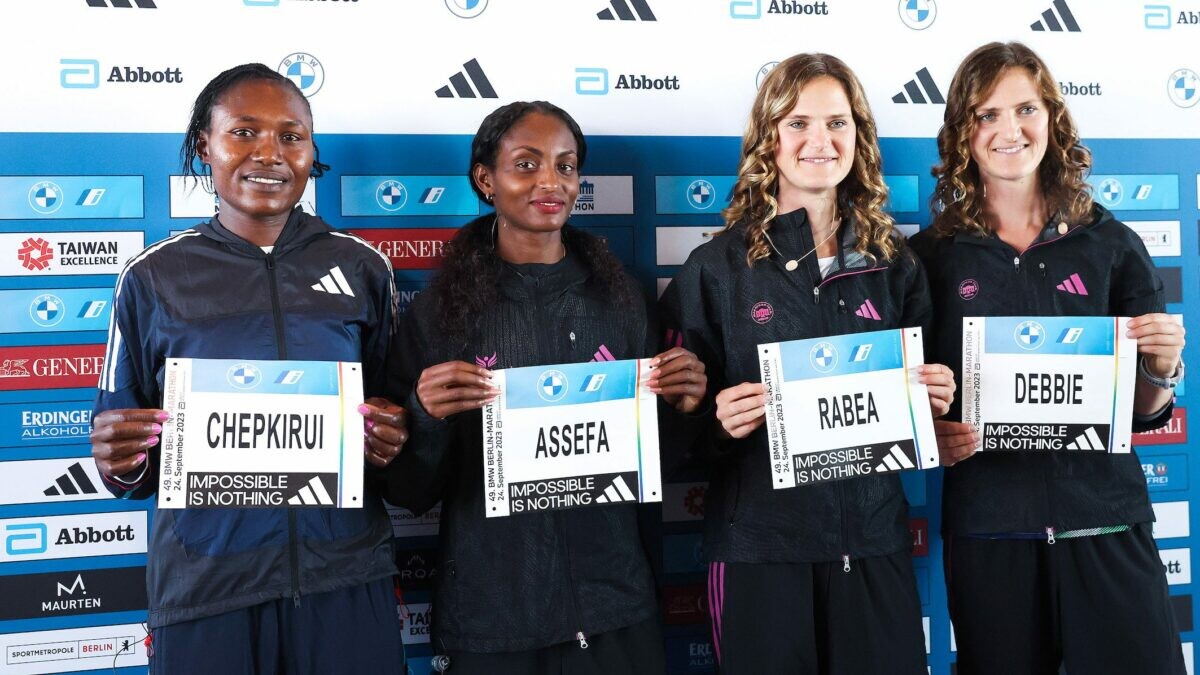
“I’m delighted to be running again in Berlin,” 26-year-old Assefa said at the elite women’s press conference on Thursday. “Last year’s race proved an unexpected success for me. I think I can run even faster on Sunday, a further improvement would be a success,” she said.
Will Assefa be setting her sights on the world record of 2:14:04? She felt that might be too ambitious: “Much can happen so I cannot say at the moment what would be the halfway split,” she said on Thursday. “I want to improve my time but I am not thinking about the world record.”

Assefa will face a serious challenge from Kenya’s Sheila Chepkirui, who set a new course record at the 2022 Berlin Half Marathon in a blistering 65:02. She also took third in a speedy Valencia Marathon in 2:17:29, and ran 2:18:51 in London in April for fourth place. “My aim is to break my personal best. I can imagine going through the first half on Sunday in around 68 minutes,” she said.
Challenges could also come from Assefa’s compatriots Tigist Abayechew, third in Berlin in 2022, Hiwot Gebrekidan, second in Berlin in 2021 and Workenesh Edesa, who was fourth last year. “The women’s course record of 2:15:37 is an absolute world-class time,” said the race director Mark Milde. “But, given the strong field, we hope that this can be broken.”
Many of the elite field will simply be hoping to achieve the Olympic standard of 2:26:50.
Canada’s Malindi Elmore will toe the line
Malindi Elmore of Kelowna, B.C. looks to be in fine form to run on the same course where Natasha Wodak broke Elmore’s Canadian marathon record last year. In May, Elmore threw down a gutsy performance at the 2023 Tartan Ottawa International Marathon, where her goal was to get the Olympic standard; she was on pace through 30K and sitting in fourth position. Over the final 12 kilometres, she moved up two spots to finish second, but missed the standard by less than a minute. It seems unlikely she plans to reclaim her Canadian record (which is three minutes faster than the Olympic standard) this weekend, but as all marathon fans know, anything can–and usually does–happen.
A record number of 47,912 runners from 156 nations have entered the 49th edition of the BMW Berlin Marathon. Germany’s most spectacular road race is part of the Abbott World Marathon Majors (AWMM) and is also a Platinum Label Road Race of World Athletics. The men’s press conference will be held on Friday, September 22.
(09/23/2023) Views: 415 ⚡AMPby Keeley Milne
BMW Berlin Marathon
The story of the BERLIN-MARATHON is a story of the development of road running. When the first BERLIN-MARATHON was started on 13th October 1974 on a minor road next to the stadium of the organisers‘ club SC Charlottenburg Berlin 286 athletes had entered. The first winners were runners from Berlin: Günter Hallas (2:44:53), who still runs the BERLIN-MARATHON today, and...
more...Why Eliud Kipchoge has reason to be nervous as Amos Kipruto threatens to end his Berlin marathon dominance
Amos Kipruto's quest for a personal best at the Berlin Marathon raises questions about Eliud Kipchoge's confidence. A thrilling showdown awaits.
Amos Kipruto, the second-fastest man in the field, is on a mission to improve his personal best (PB) as he prepares to tackle the Berlin Marathon.
In a pre-race interview, Kipruto expressed his determination to bounce back after a setback at the London Marathon last April, where he narrowly missed the top spot.
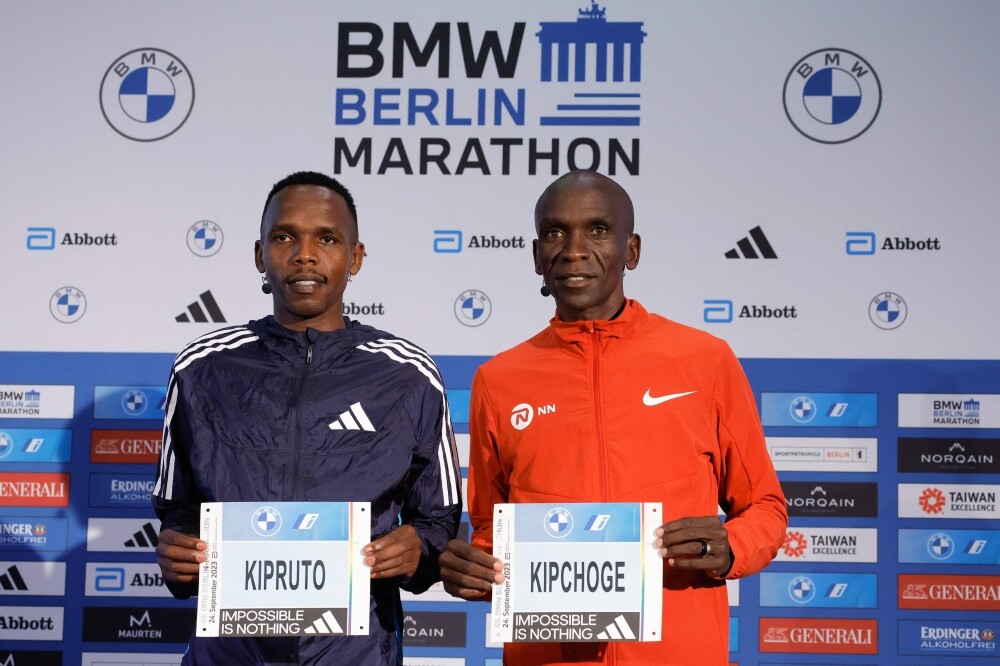
“Losing London it disturbed me, but I never lost hope, and I am here to fight for the best. On Sunday I will be competing for my personal best, I am racing against my time. If I can achieve that, I will be happy,” said Kipruto, who's looking to beat the impressive 2:03.13 he achieved as the runner-up behind the legendary Eliud Kipchoge at last year’s Tokyo Marathon.
Kipruto, 31, is no stranger to the Berlin course. He was the runner-up in 2018, an unforgettable year when Kipchoge first shattered the world record.
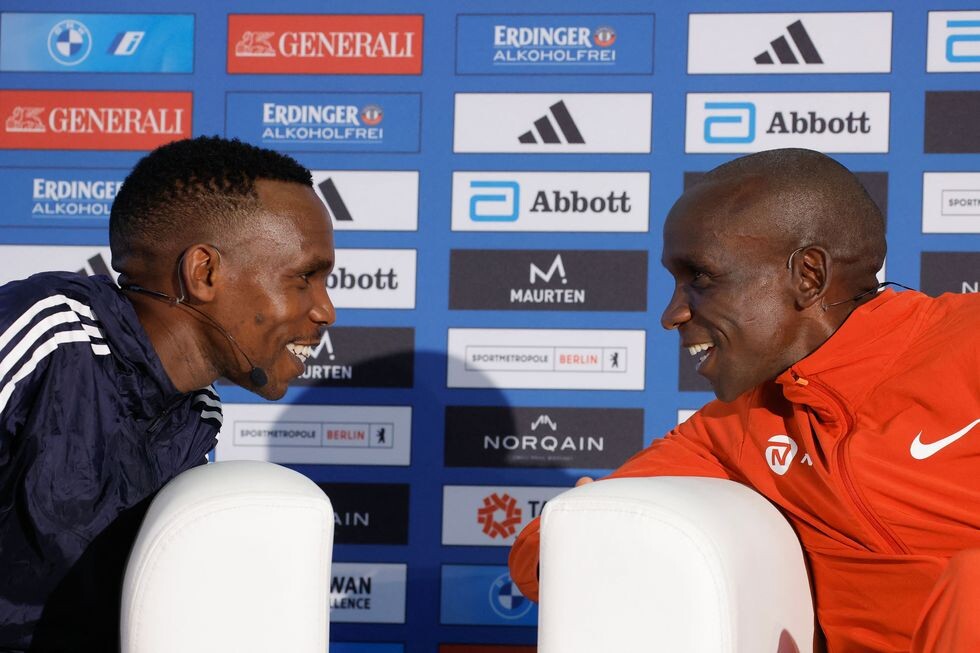
However, it is not just Kipruto who has a point to prove. Eliud Kipchoge, the marathon maestro himself, is eager to remind the world of his enduring dominance.
Following a performance in Boston last April that left some questioning his form, Kipchoge is determined to showcase his prowess on a course he knows all too well.
This race holds particular significance for him as he gears up for Paris 2024, where he seeks an unprecedented third Olympic Marathon gold.
During Friday's press conference, Kipchoge chose to keep his race strategy close to his chest, opting instead to tantalize fans with a promise of "a beautiful race because the weather will be good." Indeed, the race is anticipated to take place under optimal circumstances, with minimal wind and a pleasant 11-degree Celsius temperature (51.8 F).
In 2022, the 38-year-old left the world in awe as he crossed the halfway point in an astonishing 59:51, marking the fastest split in marathon history.
When asked if the 21km split would face a challenge again this year in Berlin, Kipchoge responded with a radiant smile, "Who knows what will happen during the race." He then added, "2023 is a different game altogether. We are approaching it in a different way, but when you are in the race, anything might happen. We follow what's in our hands."
As the Berlin Marathon draws near, the question on everyone's mind is whether Amos Kipruto's determination and thirst for a personal best will make Eliud Kipchoge nervous.
The marathon world is known for its unpredictability, and on race day, anything is possible. For now, the stage is set for an epic showdown between two Kenyan legends, with the world eagerly awaiting the outcome.
In a sport where every step counts, where records are shattered and legacies are forged, both Kipruto and Kipchoge know that only time will reveal who will emerge victorious in this battle of wills and speed.
(09/23/2023) Views: 457 ⚡AMPby Festus Chuma
BMW Berlin Marathon
The story of the BERLIN-MARATHON is a story of the development of road running. When the first BERLIN-MARATHON was started on 13th October 1974 on a minor road next to the stadium of the organisers‘ club SC Charlottenburg Berlin 286 athletes had entered. The first winners were runners from Berlin: Günter Hallas (2:44:53), who still runs the BERLIN-MARATHON today, and...
more...Running a half-marathon? Try this alternating tempo run
The half-marathon is a unique distance. Thanks to its blend of speed and endurance, runners need to include workouts that improve their stamina as well as workouts that improve their long speed, if they want to see their finish time come down. If you’ve got a half-marathon on the calendar, try this alternating tempo run to help you practice nailing your goal pace, even when you’re tired.
The goal of this workout is to improve your stamina, or your ability to run faster for longer. The working part of the session is five miles (8 km) in length, during which you alternate between half-marathon pace and marathon pace each mile (every 1.6 kilometers).
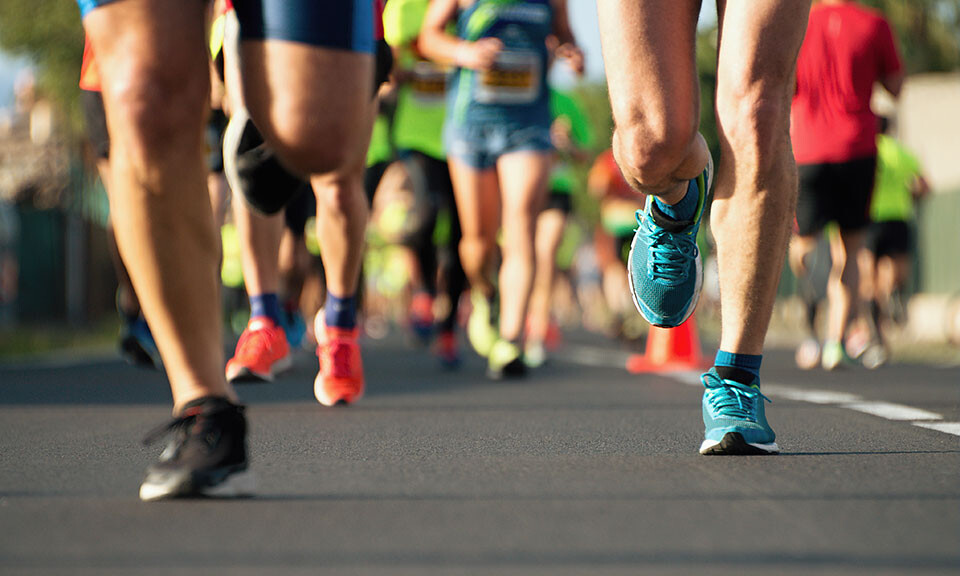
Because there is no rest during the workout, it’s very important to be vigilant about your pace. You may be tempted to run too fast at the beginning of the workout (a common mistake runners make during half-marathons), but the miles will start to add up. This workout requires you to know both your half-marathon pace and your marathon pace. If you haven’t run a marathon yet, you can plug your half-marathon pace into a pace calculator to get your target marathon pace (spoiler alert: it will likely be 15-30 seconds per mile slower than your half-marathon pace).
Note: If this is your first half-marathon and your goal is just to make it to the finish line, the amount of time you spend running (at an easy pace) leading up to your goal race is the most important thing. In that case, this workout may not be necessary. If you’re chasing a specific time goal or looking to improve on your last performance, keep reading.
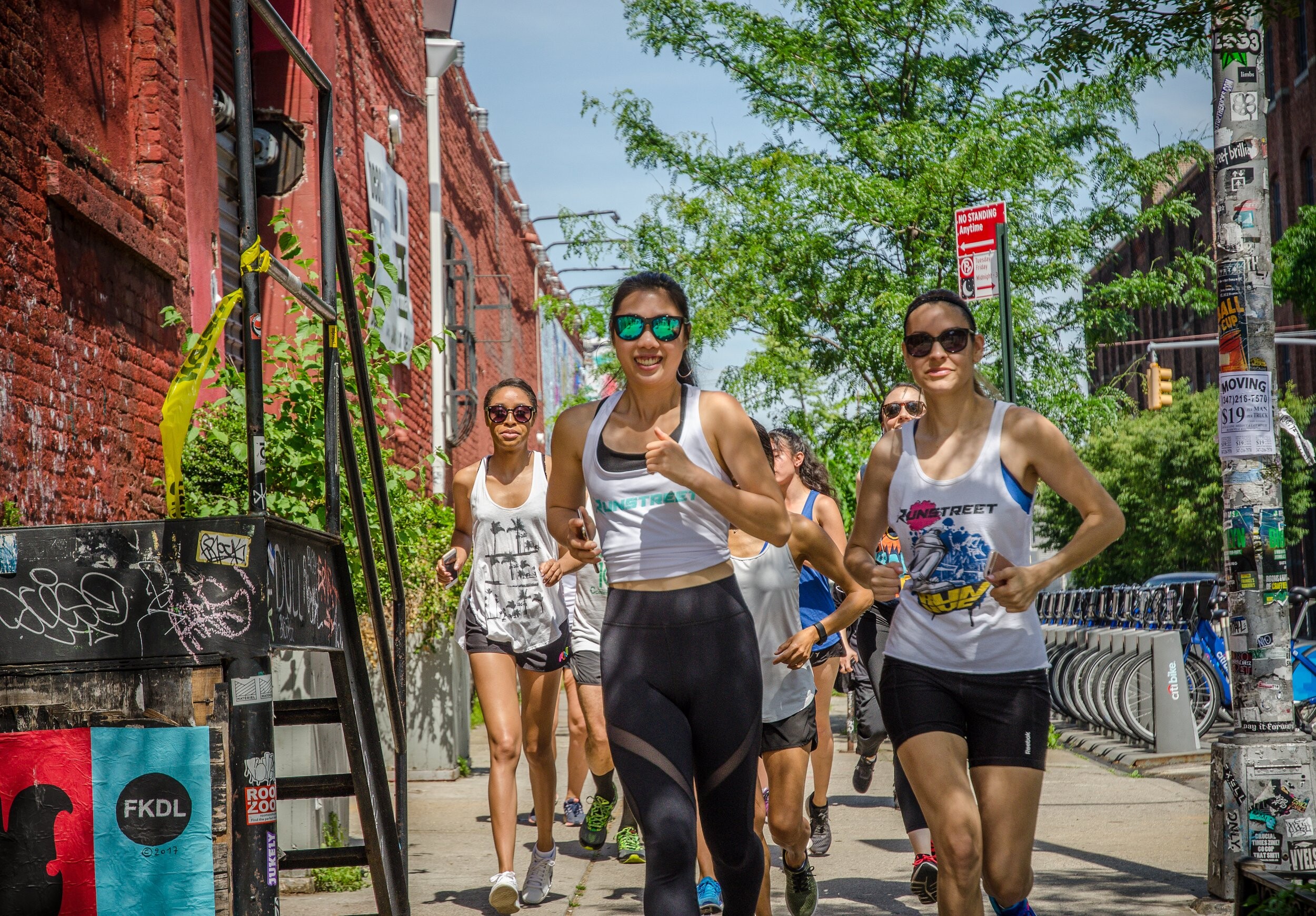
The workout
Warmup: 15-20 minutes easy jog
Workout:
1 mile at half-marathon pace
1 mile at marathon pace
1 mile at half-marathon pace
1 mile at marathon pace
1 mile at half-marathon pace
Cooldown: 10-15 minutes easy jog
(09/23/2023) Views: 370 ⚡AMPby Brittany Hambleton
10 Things to Know About the 2023 Berlin Marathon
Here’s how you can watch the race, track runners, and register for next year
More than 45,000 runners are expected to participate in the Berlin Marathon on September 24 in Germany’s capital city. It’s the 49th edition of the race and one of the six World Marathon Majors races along with races in Chicago, New York, Boston, London and Tokyo. The weather forecast is calling for cloudy and cool conditions on race morning in Berlin, so fast times are once again expected.

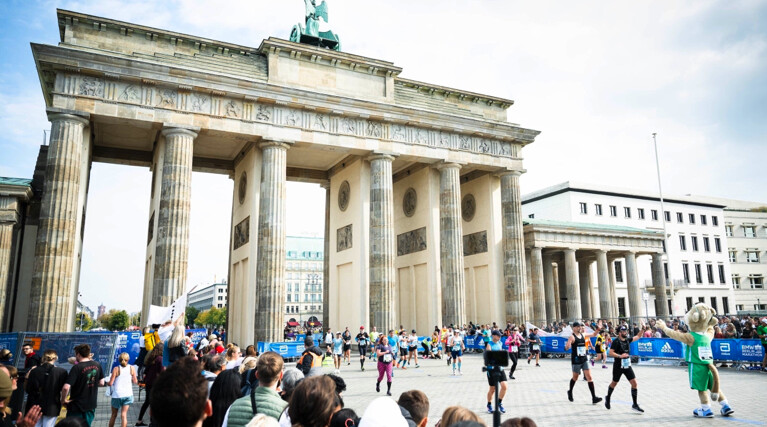
Here’s a rundown of 10 noteworthy elements about this year’s race.
The Berlin Marathon has produced 12 world records—more than any other marathon—since its inception in 1974, including the past eight men’s records since 2003. Kenya legend Eliud Kipchoge lowered the world record for the fastest official marathon ever run (2:01:09) last year in Berlin, and it’s also where he ran the previous world record (2:01:39) in 2018.
Berlin has produced six of the top 10 fastest men’s times in history, including three of the four sub-2:02 efforts (including the 2:01:41 run by Kenenisa Bekele in 2019). It hasn’t been quite as fast for women, however it has been the site of three women’s world records, most recently when Japan’s Naoko Takahashi ran the world’s first sub-2:20 marathon (2:19:46) in 2001. Last year, Ethiopia’s Tigst Assefa won the women’s race in 2:15:37, which, at the time, was the second-fastest marathon ever run and now ranks fifth.
Berlin is the flattest course of all the World Marathon Majors, with a total elevation gain of 241 feet and loss of 260 feet. (The biggest “hills” come between miles 16 and 20, but they max out at less than 30 feet of gain.) Berlin annually produces some of the fastest pro results in the world, in part because it’s a flat course, but also because the race organization provides pacemakers (auxilliary runners who set an optimal pace but only run about a portion of the course before dropping out) so the opportunity for fast times are assured. (There are no pacemakers at the Chicago, New York City Marathon, and Boston Marathon, so those races play out only by the tactics of the runners in the field.) But the fast elite times, flat course, and typically cool weather conditions have attracted age-group runners targeting new PRs, too.
Running legend Eliud Kipchoge, universally accepted as the G.O.A.T. of marathoning, has won 15 of the 18 marathons he has entered, including the past two Olympics. Berlin is where he’s had most of this success, dating back to his first victory in 2015 and he has since also won there in 2017, 2018, and 2022. Can he add one more victory to his total?
He lowered his own world record to 2:01:09 last year by averaging 14:21.4 per 5K, or 4:37 per mile. However, the 38-year-old Kenyan is coming off an uncharacteristically disappointing race at the 2023 Boston Marathon, where he finished sixth in 2:09:23. Will he approach another world record? “My aim is to always run a good race,” he said recently. “Berlin is like home for me. In view of the Olympic Games next year in Paris, I thought about which race could be the best preparation for the Games for me, and Berlin is the best option.”
Including Kipchoge, the men’s field in Berlin includes 10 runners who have run faster than 2:06 and seven more who have broken 2:07, including last year’s runner-up Mark Korir (2:05:58). Kipchoge should be challenged by fellow Kenyan Amos Kipruto, who owns a 2:03:13 from his runner-up showing at last year’s Tokyo Marathon. The winner of the 2022 London Marathon last fall (2:04:39), Kipruto, 31, placed a distant second in the 2018 Berlin Marathon behind Kipchoge (2:06:23) and owns a bronze medal in the marathon from the 2019 World Athletics Championships in Doha.
Other top runners in the field include Kenya’s Geoffrey Kamworor, who ran 2:04:23 to place second at the London Marathon in April, Ethiopia’s Birhanu Legese, who was second (2:02:48) in Berlin in 2019 and Kenya’s Wilson Kipsang, 41, a former winner in Berlin, New York, and Tokyo. However, Kipsang, who lowered the world record to 2:03:23 on the Berlin course in 2013, is coming off a four-year ban for missing drug tests in 2018 and 2019.
Last year, Ethiopia’s Tigist Assefa, a 2016 Olympian in the 800-meter run, entered the race as an untested marathon (with a PR of 2:34:01) and surprised everyone with her 2:15:37 victory in the third-fastest time ever.The 26-year-old is back this year but hasn’t run any races because she’s been sidelined with a few nagging injuries.
Her biggest competitor will likely be Sheila Chepkirui, who holds a personal best of 2:17:29 from last December’s Valencia Marathon. She’s a former African Cross Country Championships winner and was the bronze medalist in the 10,000-meter run at the 2022 Commonwealth Games. Other top women runners include Ethiopians Tigist Abayechew (2:18:03), Workenesh Edesa (2:18.51), and Hiwot Gebrekidan (2:19:10).
Scott Fauble, a three-time seventh-place finisher at the Boston Marathon (including this year in 2:09:44), is racing Berlin with the hopes of securing the Olympic-qualifying standard of 2:08:10. The 31-year-old runner from Portland, Oregon, will still need a top-three finish at the U.S. Olympic Trials Marathon on February 4 in Orlando, but securing the time will give him a leg up on qualifying for the Paris Olympics next summer.
Also racing in Berlin are 2016 U.S. Olympian Jared Ward (Provo, Utah) and 2020 U.S. Olympian Jake Riley (Boulder, Colorado). Ward, 35, owns a 2:09:25 personal best, but he hasn’t run faster than 2:12 since his sixth-place finish (2:10:45) in the New York City Marathon in 2019. The 34-year-old Riley, who owns a 2:10:02 PR, is coming back after having double Achilles surgery in July 2022 to correct Haglund’s syndrome (the second time in his career), and hopes to run in the 2:12-2:14 range. Ethiopian-born Teshome Mekonen, who recently received U.S. citizenship, will also be racing in Berlin. The 28-year-old, who lives in New York City, has a 1:00:02 half-marathon personal best and lowered his marathon personal best to 2:11:05 last January in Houston.
Annie Frisbie is the top American runner in the women’s field in Berlin. The 26-year-old from Hopkins, Minnesota, made her marathon debut at the 2021 New York City Marathon with an impressive seventh-place finish (2:26:18). She’s continued to run well since then, placing 20th (2:28:45) in the 2023 Boston Marathon (2:28:45) and most recently finishing fifth (1:07:27) at the U.S. 20K Championships on September 4 in New Haven, Connecticut. Frisbie was a Wisconsin state champion runner in high school and an All-American runner for Iowa State University.
The Berlin Marathon was started in 1974 by Horst Milde, a German baker and running enthusiast. When it began at the height of the Cold War and East Berlin being sealed off by a wall, the marathon was run only in West Berlin. Since 1990, it has started and ended near the Brandenburg Gate, sending runners on a jagged loop through the city—including the neighborhoods of Charlottenburg, Tiergarten, Moabit, Mitte, Friedrichshain, Kreuzberg, Neukölln, Schöneberg, Friedenau, and Zehlendorf. Runners will pass tourist sites like the Reichstag building, the Siegessäule (Victory Column), Berlin Cathedral, and Potsdamer Platz. Live music is played at more than 60 locations along the course, including at all the famous landmarks.
The inaugural Berlin Marathon had 244 finishers; 234 men and 10 women, and was won by Günter Hallas (2:44:53) and Jutta von Haase (3:22:01), respectively. Last year, the race had 34,788 finishers, including 23,280 men (67 percent) and 11,508 women (33 percent). The last German runners to claim victory were Irina Mikitenko (2:19:19) in 2008 and Ingo Sensburg (2:16:48) in 1980. No American man or woman has ever won the Berlin Marathon.
The Berlin Marathon has an inline skating division for 500 participants that begins at 3:30 P.M. after all runners are cleared from the course. The skater course record of 56:46 was set last year by Belgian Bart Swings, and he’s back this year aiming for his ninth victory. In the women’s race, all eyes are on last year’s winner, Marie Dupuy of France, in 1:11:19. All finishers of the inline skating division are eligible to enter the 2024 Berlin Marathon as runners.
The race, which starts at 9:15 A.M. local time (or 3:15 A.M. ET in the U.S.), will be broadcast worldwide by several TV partners, but not in North America. However, several websites offer live streaming so people can watch the Berlin Marathon from anywhere in the world, especially if you’re a VPN subscriber. Watch Athletics will be broadcasting the race online in real time for free, while FloTrack’s livestream requires a subscription ($29.99 for one month) in order to view their livestream. Runners can be tracked via the Berlin Marathon website’s Results page, or via the BMW Berlin Marathon App app available on Apple or Google Play.
Race day begins with the elite handbike division at 8:50 A.M., followed by the wheelchair and handcycle divisions at 8:57 A.M. Runners are sent off in four waves beginning at 9:15 A.M., starting with the men’s and women’s elite waves. The race has a strict time limit of 6 hours, 15 minutes as well as course closure times at the 33K/20.5-mile mark (3:50 P.M.) and 38K/23.6-mile mark (4:35 P.M.). Runners who have not reached those points by those times can continue on the sidewalks alongside the course or get a ride on the course-sweeping bus.
Entry to the 2024 Berlin Marathon, which is slated for September 29, 2024, will be done via a lottery that will open in October. You can enter the lottery as a solo runner or as a team consisting of two or three people. (If the team is drawn, all persons from the team are included.) Lottery dates for 2024 have not yet been announced, but the draw for the 2023 edition took place in December 2022.
If you’re selected, the registration fee will be about $160 euros. You can also secure a guaranteed spot in the race based on previous marathon times. In 2023, female runners up to 44 years old qualified if they ran faster than 3:00; female runners up to 59 years old qualified if they ran under 3:20; and female runners over 60 years qualified if they ran under 4:10. For men, the qualifying times were 2:45 (up to 44 years old), 2:55 (46-59 years old), 3:25 (60 and older.)
If you don’t get in through the lottery, you may still be able to get into the race via a charity bib or through tour operators.
(09/23/2023) Views: 612 ⚡AMPby Outside online
Meet the Guy Who Summited Mount Washington 100 Days in a Row
The gear shop owner is the new president of the Prezzies
It was already 9:15 P.M. on August 8 when Andrew Drummond and his friend, Matt Hart, set out along the Appalachian Trail from Madison Spring Hut, a small shelter in New Hampshire’s Presidential Range. The two men had two goals for their outing. The first was to serve as support crew for a thru-hiker attempting an FKT on the 2,198-mile trek. The second was to climb six miles to the top of 6,288-foot Mount Washington, to fulfill Drummond’s own goal.

The minutes ticked by as they picked their way through rocky terrain in the fog with only headlamps for light. It was impossible to make out cairns and faint trail signs. Hart’s pole snapped, further slowing their progress. Drummond was checking his watch constantly, both for navigation and to check that they were going to make it before midnight.
“There’s really no reason I should have been pushing it that close,” said Drummond. “I was pretty concerned about making the summit in time.”
It was the 79th consecutive day that Drummond, 42, had set out to reach the peak’s summit, and this was the closest he came to falling short of reaching it. His overall goal was to ascend Mount Washington 100 times in as many days. The two men hurried up the mountain in the dark, trudging through wind gusts that reached 71 miles per hour. Eventually, they tapped the summit sign with half an hour to spare.
Drummond had a pretty good idea of the size and scope of the challenge when he decided to take on the project earlier this year. He grew up in Conway, New Hampshire—New England’s tallest peak was basically in his backyard. Drummond moved back to the area in 2014, and estimates he hiked the peak approximately 50 times before embarking on his challenge.
Drummond got the idea earlier in the spring talking with Todd Nappi, a friend and local crusher who had just this summer made his 250th summit of Mount Washington.“Anything I do, I can rationalize that there’s always someone crazier,” Drummond said, naming the positive feedback loop that inflates the baseline level of intensity in many mountain towns.
Drummond began his challenge on May 22 with a round trip on skis—the only ascent that wasn’t on foot. “I don’t think it was until I was 10 or 12 weeks in that my body finally got a handle on what was going on,” said Drummond. “And then I could start turning it up a little bit—if I wanted to run some sections uphill, I could. I had some really good hikes where I was able to push it, and feel like I was moving a lot more efficiently.”
The 100-ascent challenge appealed to Drummond for several reasons. He was running a trail marathon in Switzerland in September, so the challenge seemed like perfect preparation for the race. Plus, the mountain sits ten miles from his house, making the trek “a manageable distance and elevation gain.”
Climbing the peak that many times appealed to him for other reasons. “Seeing all the natural phenomenon of the weather, the wilderness experiences, and just being outside—I gravitate towards that, and it lived up to expectations. It’s one of the most beautiful places in the world,” he said.
The trails up Mount Washington are rugged and rocky, making for arduous climbs and tricky descents. In the first week, Drummond developed a neuroma (a painful lump on the ball of the foot) and had to swap out his shoes to better protect his feet from impact. “It’s like every rock wants to kill you,” said Drummond. He also rolled his ankles and fell “more times than I’d like to admit.” His worst injury came a month in, when he slipped while descending and cut his palm on a rock—the injury required an emergency room visit and 22 stitches.
But as the weeks ticked by, Drummond’s body held up to the wear and tear, as well as the early wake-ups and occasional midnight climbs. “When I felt overuse pains coming on I’d push a hike into the evening and take a 36 hour break. That would help,” he said. Usually, though, he was at the trailhead first thing in the morning.
New England’s tallest mountain is famous for having some of the most intense weather in the world, including gale-force winds. This summer was the wettest on record, and Drummond often trekked in conditions that would keep most people inside, including 80 mile-per-hour gusts and snow into early June. “The really memorable days are the hardest ones,” he said. But Drummond also recalls beautiful moments that were equally as intense. “I had some days where I could just see straight into Vermont, and all the way to the Atlantic Ocean while a full moon was rising,” said Drummond.
Drummond isn’t a professional athlete—he owns a gear store in Jackson, New Hampshire, called Ski the Whites, and keeps active in the area skiing, biking, and running local trails. For years, he’s supported other athletes who go for big records in the Whites, and over the summer he crewed for thru-hiker Kristian Morgan during his southbound Appalachian Trail FKT attempt.
“He’s definitely the hub of the community here,” said Nappi, who attends weekly runs and other events Drummond puts on. “His shop is directly on the main road. You can go in there anytime and there’s like, five people on his couches hanging out,” said Nappi. According to Nappi, Drummond’s achievement of 100 summits in as many days fits in the spirit of competition in the area, where instead of race results, “everyone’s dreaming up something big, something interesting and a little niche,” said Nappi.
Drummond’s friends often kept him company on his daily trek. “I probably had almost 50 unique people come out with me over the whole thing,” reflected Drummond. “And you know, a lot of them wouldn’t have come out on those days either. So I’ve gotten other people out there, and that feels good.”
On August 29, Drummond reached the peak for the 100th time. He kept the celebration pretty low-key—a few friends accompanied him to the top, and he took some time to reflect on the achievement. “It was a Tuesday morning, so I didn’t want to make an event out of it,” said Drummond. “But I had taken a video every time I touched the summit sign, and so I went through my camera roll and made a little reel and sort of re-lived everything. I just feel very proud I got to have all those experiences.”
Drummond recommends athletes pursue a local challenge—even if it doesn’t involve climbing a peak 100 times. “It’s your backyard—that’s meaningful,” he said. “Something right out the door, easy access—whether it’s your bike commute or a local trail, you’ll certainly look at it in a new light. And that will probably make you better as a result.”
So, has climbing Mount Washington 100 times satiated his appetite for the peak? “I felt a little bit of a draw to go back up today,” Drummond told me on August 30, the day after completing the challenge. There are other trails he’s excited to check out, on his upcoming trip to Europe and elsewhere in the Whites, but he still hasn’t had his fill of Washington. “I was in such a rhythm, so it’s really strange to stop. I think that I need to take it easy for a bit, but yeah, I’ll be going back up. Probably pretty soon.”
(09/23/2023) Views: 353 ⚡AMPShould I Tune In or Tune Out During My Run?
How to think on challenging runs depends on your intention. Here’s what the research says. Runners often develop a type of tunnel vision. Case in point: In 2006, Scott Douglas went to India to cover a five-day stage race in the Himalayan foothills. The day before the race, he and the eventual winner went for a run from the race headquarters in Mirik. There was a small lake with a perimeter path nearby that was perfect for the occasion—they could easily settle into a rhythm and crank out several 10-minute loops until it was time to call it a day.
When Douglas got back to the lodge, his wife, Stacey, asked, “Wasn’t that amazing!?” It turned out that Stacey had also gone to the lake for a stroll and had come upon a couple dozen women celebrating the Diwali festival. Clad in bright yellow and red wraps and head scarves, they squatted next to the lakeside trail with big bowls of bananas, melons, other fruits, vegetables, and flowers as offerings.

Douglas can relay these details, thanks to a photo Stacey took, but he hadn’t noticed them—not on the first loop around the lake, or the third, or any other one. Without making a conscious decision to do so, he’d been entirely focused on his run.There are far loftier examples of intense concentration in running history. In the 2004 Olympic marathon, Deena Kastor didn’t realize she was in the bronze-medal position until the final 100 meters. During the 2018 Boston Marathon, which was run in an apocalyptic rain-and-wind storm, eventual winners Des Linden and Yuki Kawauchi didn’t know they had taken the lead until well after doing so.
Some of this seeming tunnel vision stems from runners focusing on what are known as “process goals,” such as running the next mile as well as they’re able, rather than thinking about outcomes, such as winning an Olympic medal. Also, during hard efforts, seasoned runners are good at suppressing strong emotions like anxiety that can lead to focusing on distracting and irrelevant information.
Let’s look in more detail at how successful runners hone their ability to concentrate on the task at hand to the point of seeming oblivious to much of what’s going on around them.
Throughout his career as one of the world’s leading exercise psychology researchers, Noel Brick asked athletes ranging from beginners to Olympians a simple question: What were you thinking? The answers provide fascinating insight into what athletes think about during peak performances. Brick has lost count of the number of times he has sat captivated as athletes recounted how they struggled with, and overcame, the challenges they experienced when racing and training.
One of the most common themes that emerges is that running fast is incredibly hard, both physically and mentally. This is true for novices and Olympians alike. But what separates the best from the rest is their ability to extract exceptional performances through a process of deep focus and concentration. These athletes know what they need to focus on and, more importantly, have the mental tools in their kit to do it. Take this example from an elite cross-country runner whom Brick interviewed following one of her toughest races:
I went through two and four [kilometers] on the back of the leading group. And going into the third lap, I started falling off the leading group. And it was everything for me to stay attached [because I was distracted by a spectator] and suddenly I just lost a second’s concentration, and it was like, “Don’t lose concentration, concentrate now,” and I covered the move. I finished second in that race. But if I had fallen off that group, I wouldn’t have gotten back on and that would have been it.
Triumph in a footrace—however that’s defined for you—often requires winning the battle that takes place within your mind. For athletes like the one quoted above, this means resisting a range of different distractions. Some are external, like a spectator who momentarily captures the athlete’s attention. Others are internal thoughts, like worry or the sometimes-irresistible urge to stop or quit.
So how do they do it? What tools do athletes use to remain focused and on task? Just as important, how do they get their concentration back if they lose it?
The first answers to these questions began to emerge in the late 1970s. Across a series of studies, psychologist William Morgan and exercise physiologist Michael Pollock interviewed recreational and elite distance runners to discover what they focused on during training and competition.
Their findings revealed that national- and world-class marathoners adopted what Morgan and Pollock called an “associative strategy.” As described in a classic study, these runners “paid very close attention to bodily input such as feelings and sensations arising in their feet, calves, and thighs, as well as their respiration; . . . [their] pace was largely governed by ‘reading their bodies’; . . . [and] they constantly reminded or told themselves to ‘relax,’ ‘stay loose,’ and so forth.”
The details of what elite runners paid attention to when racing surprised the research team. Up until this point, the consensus was that it was best to tune out from bodily sensations. After all, if running fast was hard, then surely paying less attention to physical feelings would be better than focusing in on them.
But Morgan and Pollock soon realized that these elite marathoners were different from the recreational athletes they usually interviewed. Not only were their physical performances miles apart, literally and figuratively; so, too, were their mental strategies.
What non-elites preferred to do was adopt a range of distraction strategies. In other words, they preferred to tune out from the physical sensations they experienced. They did so by thinking about past memories, imagining listening to music (remember, this was pre-earbuds), singing, or, for one runner, visualizing stepping on the faces of two coworkers she detested.
With these two separate ways of thinking, we’ve now got a dilemma. What is the best way for athletes to think? Which type of strategy helps most: tuning out or tuning in?
These were the questions that grabbed Brick’s attention when he began to plot his PhD research in 2012. By 2014, he had published a review of 112 studies on the attentional strategies of endurance athletes—that is, what they focus their attention on. In it, he sifted through the evidence supporting distraction, on the one hand, and association, on the other.
Before we can answer this question, we first need to consider a much simpler one. What do we mean by best? If better—that is, faster—performance is the goal, then athletes probably want to avoid being distracted at all costs.
But that’s not the full picture. In Brick’s review, he noted that distractions, such as daydreaming, conversing with a training partner, or focusing on scenic views, can help to reduce boredom and make a run more enjoyable. In other words, when the outcomes are less about going faster and more about feeling better, then distraction is best. A recreational runner whom Brick interviewed put it like this:
My mind just wanders whenever I’m out. It’s as if it’s a freedom. It’s my time and it’s me thinking about my things, you know? You’re not sitting in the house or you’re not working or you’re not thinking about things. You’re just thinking about your things.
What these insights tell us is that distraction has its place in our mental tool kit. It can be a useful way to manage our emotions, especially when we need to switch off, chill out, and get away from it all.
One great way to do this is to spend time in natural spaces, such as the countryside or a park. Studies have found increased brain activity relating to calmness and meditative thoughts when people exercise in a park versus crowded urban settings. In the latter, brain activity linked with negative thoughts such as rumination has been found to be much higher than when people exercise in more natural settings.
But this is only half the story. Although positive distractions like nature have benefits, performing to the best of their capabilities is a more immediate priority for athletes during competition. In these instances, tuning in might be a better approach than tuning out.
When Brick dug deeper into the results of more than 35 years of research, he soon discovered that the effects of association strategies on performance were much more nuanced than previously thought. When athletes focused excessively on bodily sensations like breathing or muscle soreness, their performance suffered. Doing so made tasks feel harder. In contrast, strategies like keeping relaxed or optimizing movement technique improved performance, sometimes without increasing how hard a task felt.
An intricate study involving 60 experienced runners helps to explain some of these nuances. These individuals completed three 5-kilometer runs, once on a laboratory treadmill, once on a 200-meter indoor running track, and once on a flat outdoor road route. Half the runners—the association group—were asked to tune in every 30 seconds during each run to the heart rate and pace readings on their watch. The other half were assigned to a distraction strategy of listening to music through headphones. All participants were instructed to run as fast as they would like during each 5-kilometer run. The research team also recorded how good or bad runners felt, how hard each run was perceived to be, and their final 5-kilometer times.
In line with research on other distraction strategies, the findings revealed that those who listened to music felt calmer and more tranquil during their runs. Runners also felt better when running outdoors than they did in the indoor settings.In terms of performance, however, runners in the heart rate and pace-monitoring group ran faster than the music group by an average of 1 minute and 47 seconds. In a sport in which participants obsess over every second of a race time, that’s a significant difference!
Just as interesting were the effects of location on performance. Although 5-kilometer times were slower on the treadmill than both the track (by 3 minutes and 46 seconds) and the road route (by 4 minutes and 2 seconds), running on the treadmill felt hardest. This was most likely because of the treadmill environment, devoid of mental stimulation or distraction. In this setting, athletes probably focused on little else other than how tough their run felt. In contrast, running the outdoor road route, the fastest location of all, felt easiest.
Periodically monitoring bodily sensations and tuning into pace allows for better performance. In contrast, tuning out might result in a slower pace but can help make an activity feel more pleasant. In effect, our focus matters, and when best performance is a priority, then having the mental skill to focus effectively is essential.
(09/23/2023) Views: 295 ⚡AMPViktoria Brown smashes her own 6-day record
Whitby, Ont.’s Viktoria Brown has conquered the multi-day racing scene, and she just keeps getting better. Brown ran a whopping 747 kilometers at the EMU 6-day Race in Hungary, besting her previous Canadian 6-day record of 736 km. Runners competed on an 898.88 meter-long certified road loop that was 100 per cent asphalt.
Brown is well-known for her many multi-day records, and for recently competing at Badwater 135, the scorching ultra in Death Valley, Calif., where she finished fourth.
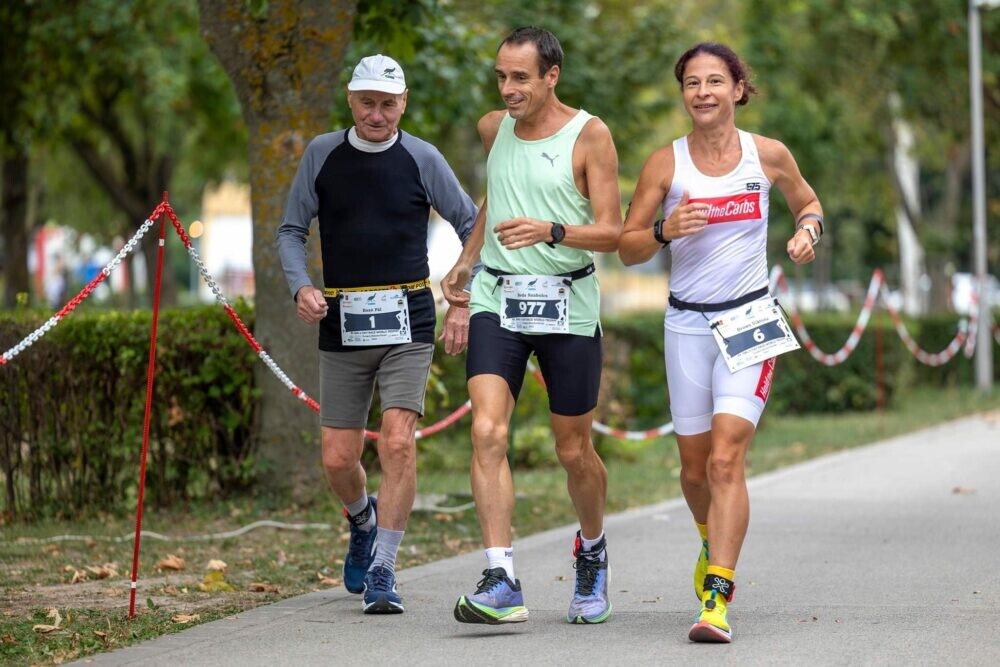
She holds the 48h Canadian record (363 km), and the 72-hour Canadian record (471 km), and was the owner of the 72h WR, recently bested by Danish athlete Stine Rex. She entered EMU having trained minimally, and became ill with salmonella poisoning partway through the event.”My goal at this race was to hit 800 kilometers,” Brown told Canadian Running.
“Only three women have ever done that, and I believe that without the salmonella poisoning, I would have hit it,” she said. “I only ran 56 km on day five, while I ran 110+ km on all other days, including 151 km on day six.”
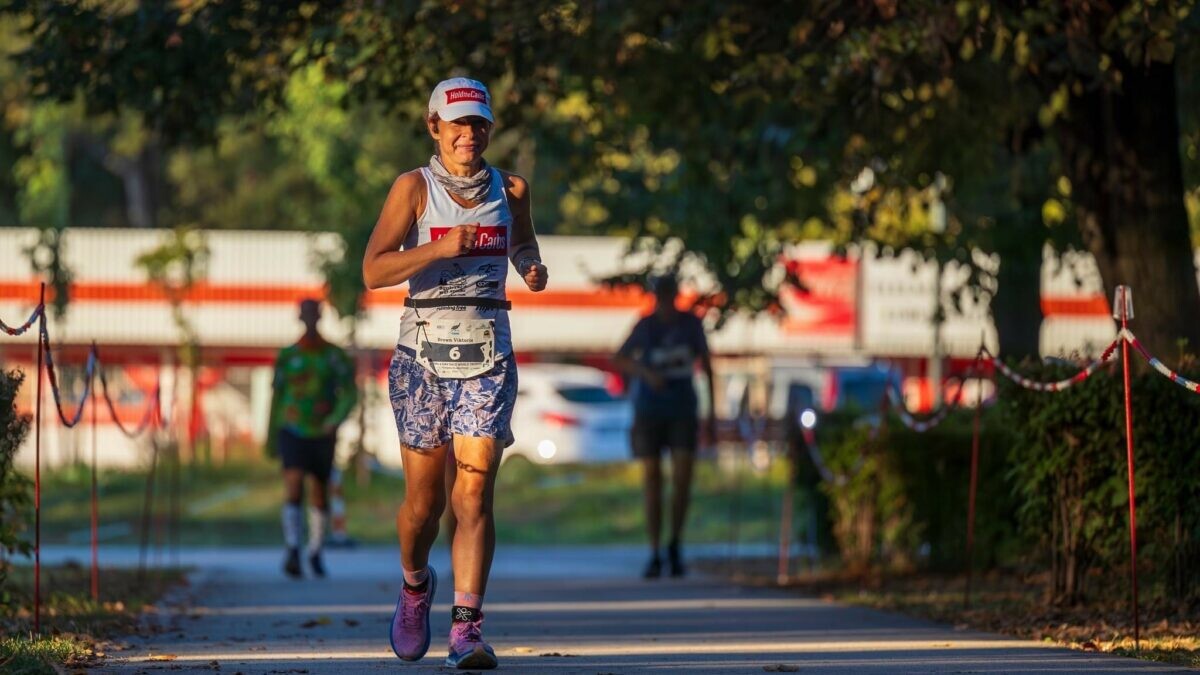
Ultras are often a test in troubleshooting, and this is only magnified by multi-day racing.”Vomiting started at noon on Monday (the start of day five) and went on all day until I went down for sleep around 10 pm,” Brown said. “I got up at 3:30 am, was back on the course at 4 a.m., and ran straight until the race ended, 32 hours later.” Brown says she was extremely lucky to have a medical doctor on her crew, whom she credits with bringing her back from illness.
To combat the salmonella, Brown slept for six and a half hours to reset her body.”I wasn’t throwing up anymore, although my body was completely empty and I still had diarrhea,” she said. “But that meant that five-10 per cent of the intake was absorbed, so we could slowly start to refuel.” Brown had to walk until late afternoon on Tuesday, both because her body was recovering and due to intense heat during the daytime.”By late afternoon I was able to start jogging, then running, and then even running relatively fast by the end.”
Brown says she felt she was unable to train for this race, but her excellent base fitness proved to be enough. “After the 48h World Championship in August (that I won) I had some slight pain under my right knee, so I could only do minimal training,” she explains.”By the time the injury healed, I caught a cold, so then I couldn’t train at all. Maybe being more rested for this race helped more than the training would have,” said Brown.
Post-race, Brown says it’s hard to catch up on sleep, but she has a surprising lack of soreness and no blisters.”My body is in great shape, but my mind will need some serious recovery,” the runner said. “These races are extremely demanding mentally.” Brown will compete next at the Kona Ironman World Championship in Hawaii in October, and later at the 24-hour world championship with Team Canada in Taiwan.
(09/22/2023) Views: 409 ⚡AMPby Keeley Milne
Beyond Marathons: Uncovering the World’s Most Scenic Trail Runs
For experienced trail runners searching for their next trail marathon and newcomers to the sport who are researching trail run events for the first time, we have compiled a list of the top destinations for trail running
These races are renowned and provide breathtaking scenery, making them a must-have addition to your race calendar. Our selection deliberately combines well-known races with hidden gems you may not be familiar with. These hidden gems offer a unique sense of adventure and excitement, going beyond the usual races that everyone knows about.
WaitomoTrailRun,New Zealand
The Waitomo Trail Run, a one-of-a-kind event located in New Zealand's North Island, offers a unique and unforgettable experience. Now in its third year, this trail run has quickly become the largest of its kind in the country.
Participants find themselves immersed in the stunning landscape of Hobbit country, with its picturesque rolling hills adorned with vibrant green grass. As you traverse the course, you'll also have the opportunity to explore captivating limestone caves illuminated by the enchanting glow of glowworms.
It's important to note that littering is strongly discouraged, as there is a peculiar consequence for those who discard their energy gel wrappers. Participants may find themselves tasked with clearing gorse from the hills above Te Anga road while sporting nothing but jandals, shorts, and a singlet. However, they will be rewarded with warm cordial for sustenance and have the opportunity to partake in the wet Perendales crutching experience for several days.
Lavaredo Ultra Trail, Northern Italy
Located in central-eastern Italy, the Dolomites showcase breathtaking rock formations that are truly remarkable. The Lavaredo Ultra Trail takes place within this distinctive lunar landscape, ranking as one of the most exquisite races worldwide. Only by participating in this event will you truly grasp why this place holds a magical allure, much like Venice.
Even the world’s best sportsbooks that cover marathon odds would struggle to conjure up the necessary prices due to the distraction this location's beauty presents.
As part of the UTWT competitions, the race unfolds amidst the majestic Dolomite mountains, running alongside the picturesque Misurina Lake and at the base of the renowned Tre Cime of Lavaredo, a symbol of global mountaineering. The beauty of this location stems from the striking contrast between the lush alpine forests, the rugged gray rocks, and the vivid blue skies and lakes.
While the race offers fast sections, it is also technically demanding, requiring attentiveness to the rocky terrain and tree roots along the course. This is an event that should not be missed, although securing a spot through the registration draw is essential. Be sure to mark it on your agenda, as the experience is bound to be unforgettable!
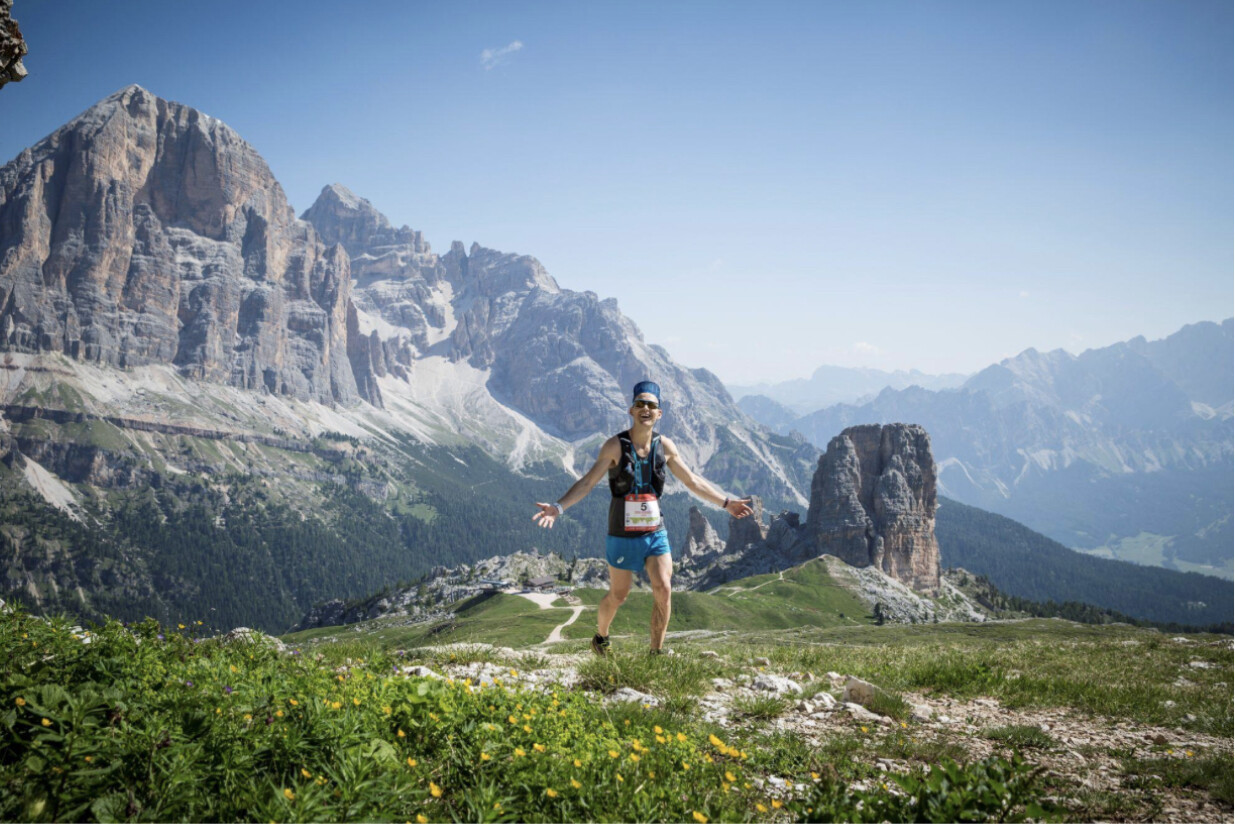
Vallee Du Trail, Chamonix, France
Chamonix, renowned as the valley for trail running and the official host of the prestigious Ultra Trail du Mont Blanc, embodies the essence of the trail running community. Chamonix is a paradise for trail runners, as it offers a remarkable collection of 18 well-marked running routes that meander through picturesque mountain trails, enchanting forests, and serene alpine meadows, all while providing breathtaking panoramas of majestic mountains and icy peaks.
What sets Chamonix apart is its inclusive and hospitable trail running community, which caters to elite athletes and anyone who possesses a deep affection for the mountains and the exhilarating outdoors.
MatterhorUltraks, Switzerland
The Matterhorn, the ultimate representation of a picturesque alpine setting and alpine skiing, takes center stage for trail running during the summer. In Switzerland's Matterhorn Ultraks event, this majestic peak is visible from all directions and can be encircled through various routes ranging from 16 to 46 km.
One particularly remarkable feature is the K30 trail, which spans 31.5 km and includes a thrilling highlight: a suspension bridge crossing the glacier gorge. Zermatt serves as the starting point for all the trails.

By the way, "Ultraks" represents a series of trail running events at the most awe-inspiring mountain peaks across Europe.
X-TerraTrailRunWorld Championship, Hawaii
The X-Terra Trail Run World Championship is held at Kualoa Ranch, located in Hawaii. This ranch is famously known as Jurassic Valley, as it served as the backdrop for the iconic dinosaur movies.
The trails used in the X-Terra Trail Run World Championship are typically inaccessible to the general public. Therefore, this race offers a unique opportunity for runners to explore and appreciate the natural beauty of this area.
The terrain itself is diverse and awe-inspiring. Participants will have the chance to run alongside cliffs and white sand beaches and navigate their way through dense rainforests.
No prior qualifications are required to participate in the 21-kilometer championship course. This event also includes a 10-kilometer race, a five-kilometer race, and an "adventure walk," making it accessible to runners of all ages and skill levels, from beginners to elite athletes.
(09/22/2023) Views: 469 ⚡AMPChepkirui hunting for new PB in Berlin showdown with Ethiopia's Tigest Assefa
Kenyan Sheila Chepkirui and Ethiopian Tigest Assefa gear up for the Berlin Marathon showdown, aiming to break records and secure Olympics
Kenyan marathoner Sheila Chepkirui is preparing to compete in the women's contest at the 2023 Berlin Marathon against a formidable Ethiopian lineup, led by the defending champion, Tigest Assefa.
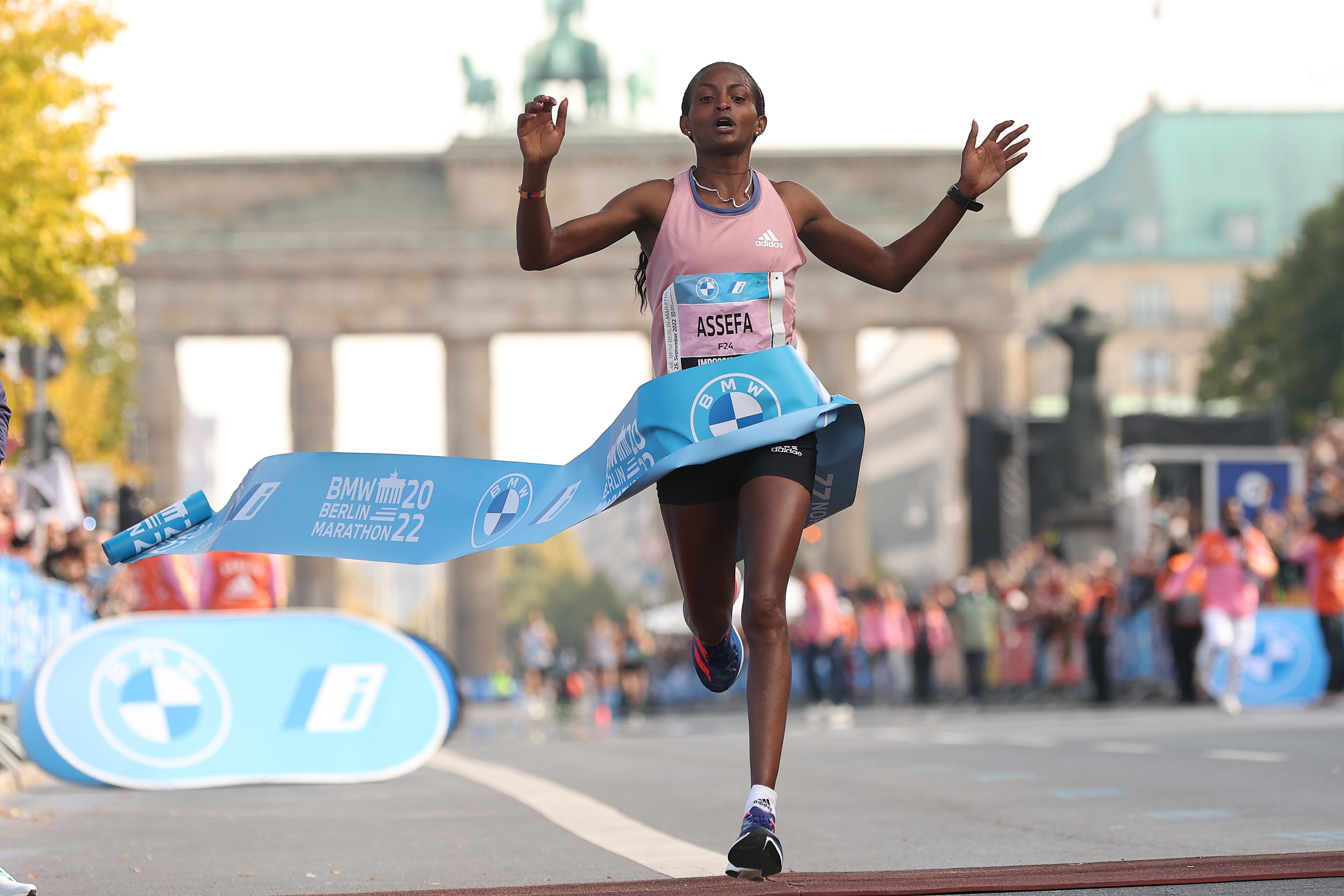
Chepkirui, who finished fourth at the London Marathon last April, carries an impressive personal best of 2:17:29 from the Valencia Marathon last year.
Assefa made headlines last year by posting an incredible time of 2:15:37 at the Berlin Marathon, setting a new course record and establishing herself as one of the fastest marathon runners in history.
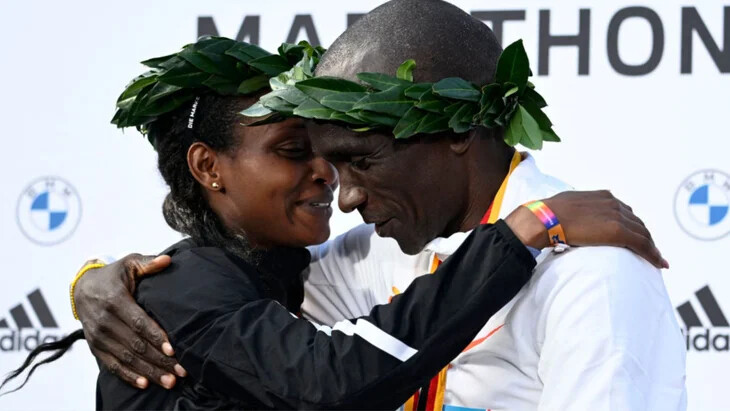
Chepkirui, a Kenya Defence Forces soldier and a former Africa cross country champion, has already proven her mettle on the international stage by clinching the 10,000m bronze medal at the 2022 Commonwealth Games in Birmingham, UK.
Ethiopian runners dominate the list of fastest women's runners at this year's Berlin Marathon, with Tigist Abayechew (2:18:03), Workenesh Edesa (2:18:51), and Hiwot Gebrekidan (2:19:10) all boasting impressive sub-2:20 times. Amane Beriso, the winner of last year's Valencia Marathon, adds further depth to the Ethiopian contingent.
However, all eyes will be on Chepkirui, who hails from Kiptere Secondary School in Kericho and boasts a remarkable half marathon personal best of 64:36. Her determination to excel is evident, as she aims to make up for her absence at the Boston Marathon last April due to visa issues.
Chepkirui, who runs under the Ikaika Sports stable, is the sole Kenyan representative in the Berlin Marathon after Margaret Wangare withdrew due to injury. Her marathon journey began at last year's Valencia Marathon, where she impressed with a third-place finish and a personal best time of 2:17:29. Now, she is focused on breaking her own record.
"My aim is to break my personal best. I can imagine going through the first half on Sunday in around 68 minutes," said the 32-year-old Chepkirui.
Tigst Assefa, the defending champion, is also eager to make her mark once again in Berlin. Reflecting on her remarkable performance last year, where she shattered the course record, Assefa expressed her delight at returning to the event.
"Last year's race proved an unexpected success for me. I think I can run even faster on Sunday, a further improvement would be a success," said Tigst Assefa.
While she remains focused on improving her time, she is cautious about discussing the world record of 2:14:04.
Both Chepkirui and Assefa have an additional goal in the BMW Berlin Marathon: securing Olympic qualifying times. Given the fierce competition in Ethiopia and Kenya, achieving the necessary times for Olympic qualification will require exceptional performances.
Two more Ethiopian athletes, Tigist Abayechew with a personal best of 2:18:03 and Workenesh Edesa with a best time of 2:18:51, are making their return to Berlin. Last year, they, along with Tigst Assefa, achieved an unofficial world team record of 6:52:31.
Mark Milde, the race director, expressed optimism about the potential for records to be broken, saying, "The women's course record of 2:15:37 is an absolute world-class time. But, given the strong field, we hope that this can be broken."
The elite women's field at the Berlin Marathon boasts both breadth and depth. Japan's Hitomi Niiya, with a personal best of 2:19:24, has the potential to challenge her national record set 18 years ago on the same course. Another athlete to watch is Ethiopian Senbere Teferi, a world record holder for 5km on the road with a time of 14:29.
In addition to the international competition, a fierce contest is expected among German women. The German contingent, featuring athletes like the Schöneborn twins, Deborah and Rabea, Domenika Mayer, Kristina Hendel, and Laura Hottenrott, has a strong presence with personal bests ranging from 2:25 to 2:27.
(09/22/2023) Views: 367 ⚡AMPby Festus Chuma
BMW Berlin Marathon
The story of the BERLIN-MARATHON is a story of the development of road running. When the first BERLIN-MARATHON was started on 13th October 1974 on a minor road next to the stadium of the organisers‘ club SC Charlottenburg Berlin 286 athletes had entered. The first winners were runners from Berlin: Günter Hallas (2:44:53), who still runs the BERLIN-MARATHON today, and...
more...Eliud Kipchoge is ready for a fast race in Berlin
Once again the best marathon runner of all time will be on the start line of the BMW BERLIN-MARATHON. The double Olympic champion from Kenya, who brought his own world record down to 2:01:09 a year ago in Berlin, will be almost compelled to go all out for a fast time on Sunday, such is the enormously competitive running scene among his compatriots where only an extremely fast time within the Olympic qualifying mark will secure one of the three places for the Kenyan men’s team in the Olympic Marathon in Paris next year.
Eliud Kipchoge’s ambition in Paris is to become the first runner in history to win three Olympic Marathon titles. The Kenyan is aiming to use the BMW BERLIN-MARATHON almost as a springboard to book his place in Paris. While Eliud Kipchoge could strike up a world record pace at the head of the field, Germany’s marathon star Amanal Petros seeks an unprecedented achievement in the history of the BMW BERLIN-MARATHON by becoming the first to set a men’s national record here, a feat so far never accomplished in the previous 48 editions of the event.
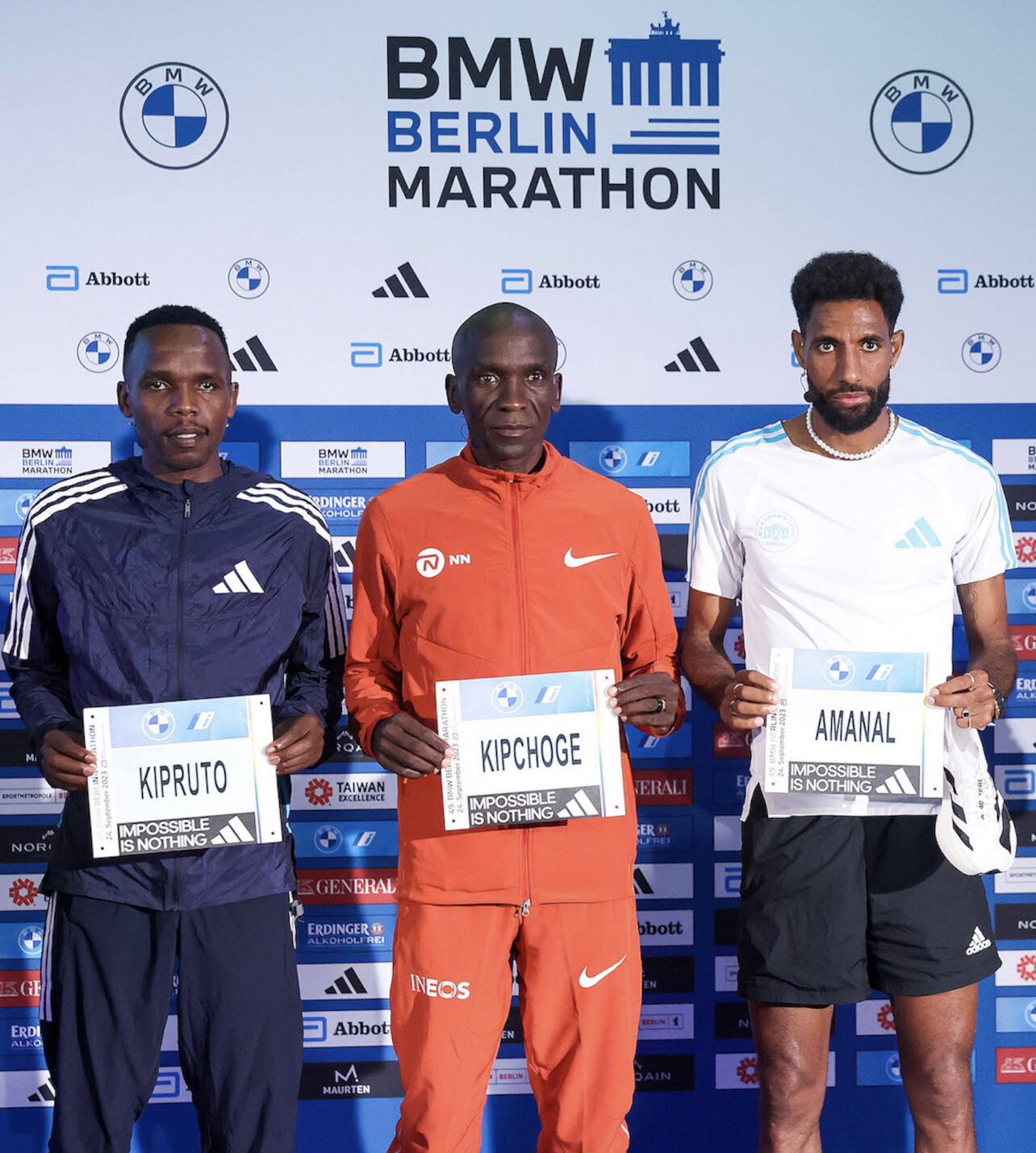
A record number of 47,912 runners from 156 nations have entered the 49th edition of the BMW BERLIN-MARATHON. Germany’s most spectacular road race is part of the Abbott World Marathon Majors (AWMM) and is also a Platinum Label Road Race of World Athletics.
“We feel honoured that the best marathon runner in sporting history, Eliud Kipchoge, has decided to run the BMW BERLIN-MARATHON for a sixth time. This confirms the outstanding status of the event and raises hopes for an exceptional result,” said race director Mark Milde, who has organized Kipchoge’s previous five races in Berlin.
“Berlin for me is like home. Looking at the Olympic Games in Paris next year, I considered which races would be the best preparation for me and Berlin was the best option,” explained Eliud Kipchoge. A year ago his pace for much of the early stages of the race suggested he might even break two hours. “But that was 2022, it’s a different year now and a different race,” said the 38-year-old. Winning in Berlin for the fifth time would give him more titles here than any other champion. He is currently level with the legendary Ethiopian Haile Gebrselassie on four victories.
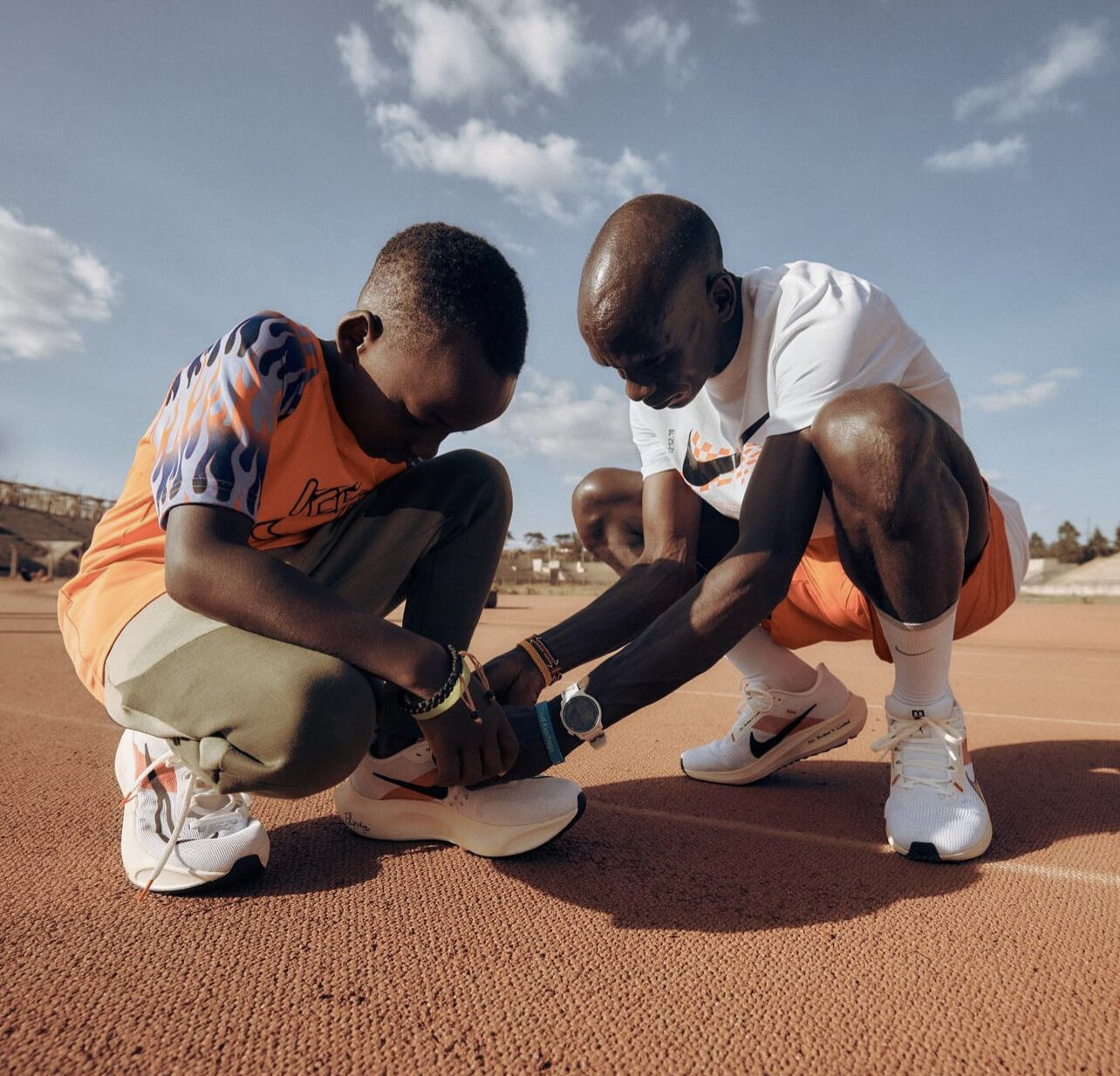
It is not beyond the bounds of possibility that Eliud Kipchoge breaks the world record for the third time in Berlin, although he did not announce any definite goals at the press conference. “I’m nervous, but that shows I’m ready,” said Kipchoge. “I’ll try to run a good time.” Of his 20 marathons, Eliud Kipchoge has emerged victorious in all but three, in itself a unique achievement.
The man with the second fastest time going into the race is also Kenyan, Amos Kipruto. He ran his personal best of 2:03:13 in Tokyo last year, finishing runner-up to Eliud Kipchoge. “My aim on Sunday is to run a personal best,” stated Amos Kipruto, whose career highlight so far is winning the London Marathon last year.
A dozen men on the start list show best times of under 2:06, proof of the strength in depth among the elite in this year’s BMW BERLIN-MARATHON. “It would be fair to say that every elite runners comes to Berlin to run their personal best,” admitted Mark Milde.
Amanal Petros has as his goal in his BMW BERLIN-MARATHON debut that of breaking his own German record of 2:06:07 by a clear margin. “I’ve trained in Kenya for almost four months at altitude of 2,400 metres, concentrating entirely on Berlin. That was very challenging,” said the 28-year-old. “Going through halfway in around 62 minutes is feasible but we can adjust the pace at any time.”
Not only the German but the Swiss national record for the marathon could come under pressure. Tadesse Abraham improved his best to 2:06:38 as a 39-year-old last year in Zurich. Now turned 41, he might even threaten the world masters record of none other than Kenenisa Bekele, who ran 2:05:53 in London last year.
Men’s elite runners with personal bests
Eliud Kipchoge KEN 2:01:09
not record eligible:1:59:40,2
Amos KiprutoKEN2:03:13
Jonathan MaiyoKEN2:04:56
Eliud Kiptanui KEN 2:05:21
Ghirmay Ghebreslassie ERI 2:05:34
Ronald KorirKEN2:05:37
Tadu Abate ETH 2:05:38
Philemon KiplimoKEN2:05:44
Enock Onchari KEN 2:05:47
Mark Korir KEN 2:05:49
Andualem ShiferawETH2:05:52
Haftu TekluETH2:05:53
Amanal PetrosGER2:06:27
Josphat BoitKEN2:06:34
Tadesse Abraham SUI 2:06:38
Okubay Tsegay ERI2:06:46
Abel KipchumbaKEN2:06:49
Yusuke Ogura JPN2:06:51
Denis ChirchirKEN2:07:17
Eyob Faniel ITA 2:07:19
Justus KangogoKEN2:07:40
Titus Kipkosgei KEN2:07:46
Godadaw BelachewISR2:07:54
Dominic Nyairo KEN2:08:13
Derseh Kindie ETH 2:08:23
Guojian Dong CHN2:08:28
Liam Adams AUS 2:08:39
Scott FaubleUSA2:08:52
Hendrik Pfeiffer GER 2:10:18
Samuel Fitwi GER 2:12:14
Konstantin Wedel GER 2:13:02
(09/22/2023) Views: 401 ⚡AMPBMW Berlin Marathon
The story of the BERLIN-MARATHON is a story of the development of road running. When the first BERLIN-MARATHON was started on 13th October 1974 on a minor road next to the stadium of the organisers‘ club SC Charlottenburg Berlin 286 athletes had entered. The first winners were runners from Berlin: Günter Hallas (2:44:53), who still runs the BERLIN-MARATHON today, and...
more...Five tips for pre-run fueling
Nothing new, only tried and true–that’s the mantra runners follow when it comes to deciding what to eat the morning of and during their race. But figuring out what “tried and true” is for you can be unexpectedly challenging. Use these tips during your training to help you determine what works best for your body, so your hopes for a new PB don’t get dashed by mid-race stomach cramps.
1.- Use a journal

Write down what you ate before (and during, if you’re training for a longer race) your run, along with notes about how you felt during the run. Did your stomach feel unsettled, or was it smooth sailing? Did you feel energetic, or like you were dragging your feet? (Keep in mind that if the weather is unexpectedly warm, that could slow you down significantly and affect your energy level, which may be unrelated to your fuelling.)
2.- Plan ahead

Decide what you’re going to eat before your run, and make sure you have everything you need to prepare it. If possible, make your pre-run meal the night before, so it’s easy to grab in the morning, or at least,assemble your ingredients, so it’s quick and easy to make. This is especially important if you’ve got an early morning run on the calendar. Saving some time on food prep allows you to relax a bit before you head out, which can improve your digestion and help you feel better during your run.
3.- Start small
It’s important to fuel before a run that’s longer than 60 minutes, but if this is your first time training for a longer race and you’re not used to eating before you run, start with something small, like crackers or half a banana. As you continue to practise pre-run fuelling, your stomach will become more accustomed to it. Try to eat at least an hour before your warmup.
4.- Test on your easy day
Long runs are the perfect time to test new foods or fuelling strategies; so are recovery runs. Avoid experimenting with anything new before a key workout.
5.- Know what you need
Most runners should eat about 50-60 grams of carbohydrate before a long run to top up their glycogen stores. A cup of cooked oatmeal with a banana will put you right around the 50-60 mark, so will a couple of slices of toast topped with jam or honey.
Remember, different foods work for different runners, so just because something works for your running buddy doesn’t mean it’ll work for you, too. Always take the time to test out new foods ahead of time, and prepare in advance to make sure you have what you need on race day.
(09/22/2023) Views: 376 ⚡AMPby Brittany Hambleton
Paul Chelimo planning to spoil Eliud Kipchoge's party in Berlin
Paul Chelio intends to make his marathon debut at Sunday's Berlin Marathon with one goal in mind, to spoil the party.
All roads will lead to the Berlin Marathon on Sunday where Eliud Kipchoge will be planning to lower his time as he races on one of his favourite courses.
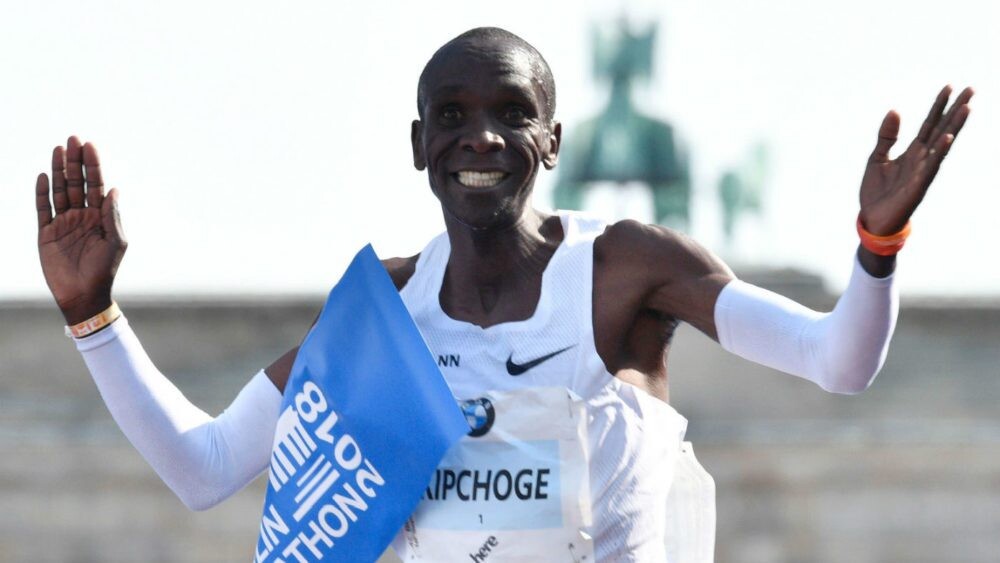
However, many athletes will be hoping to stop him from reigning supreme, and in particular, Kenyan-born American Paul Chelimo will be hoping to stop his dominance.
Chelimo is yet to run a marathon and he has shared his thoughts on making his debut in the German capital with a goal in mind.
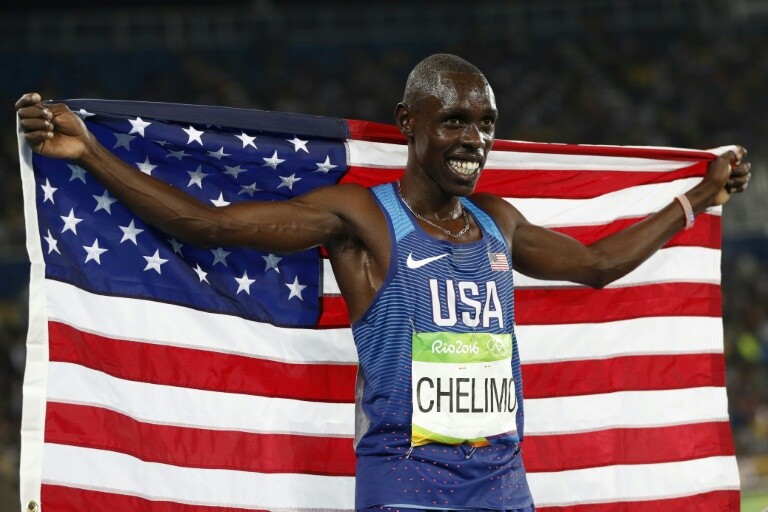
In a post on his Twitter page, he said: “Might show up to Berlin this weekend and spoil the party.”
Chelimo has had a great season on the track so far but has failed to impress in the road races, finishing 14th at the Berlin Half Marathon and 20th at the Valencia 10km race.
On the track, he has managed to bag wins in the men’s 10,000m at the Night of the 10,000m PB’s and also win the 5000m at the Track Night Vienna.
If he makes up his mind to race at the Berlin Marathon, he will definitely have it rough trying to stop the world record holder over the distance.
Kipchoge started off the season on a low note but he has since bounced back and will be looking to impress in the streets of Berlin. He has won there four times and he will be looking to bag his fifth title.
It remains one of his favourite course since he has also set the world record twice on the same streets. It will surely take concerted efforts to bring him down.
(09/22/2023) Views: 407 ⚡AMPby Abigael Wuafula
BMW Berlin Marathon
The story of the BERLIN-MARATHON is a story of the development of road running. When the first BERLIN-MARATHON was started on 13th October 1974 on a minor road next to the stadium of the organisers‘ club SC Charlottenburg Berlin 286 athletes had entered. The first winners were runners from Berlin: Günter Hallas (2:44:53), who still runs the BERLIN-MARATHON today, and...
more...How to handle missing your goal race
Running is an amazing sport that offers plenty of benefits, but it also carries a high risk for injury. As the fall racing season gets underway in Canada, the unfortunate reality is that some of us aren’t going to make it to the start line of our goal races. If you’re among the unlucky ones, we feel you. Getting sidelined by an injury is disappointing; you might even feel devastated, for a time. Here’s our best step-by-step advice for how to handle the heartbreak.
Step one: accept

Many runners go through a period of denial when an injury threatens their racing plans. While this reaction is understandable, it’s also problematic. Denial can cause you to push through an injury when you shouldn’t, or try to rush the rehab process so you can get back to running, only to ultimately underperform at your goal race (and potentially also re-injure yourself).
That’s why the first step is acceptance. It’s tough, we know, but once you accept the fact that you likely won’t be on the start line as planned, you can switch gears and come up with a rehab plan, so you can get back to running and chasing new goals.

Step two: grieve
Accepting your fate doesn’t mean you can’t be sad about it. In fact, we encourage you to take a day or two to just be sad about your circumstances.
Getting injured sucks at any time of year; it’s even worse when you’re preparing for a goal race. Go ahead and feel the feels, just don’t get stuck there.
Step three: reflect
Once you’re (mostly) done being sad, take some time to think about your training and try to identify what you could have done differently to avoid getting injured. Did you increase your mileage too quickly? Were you getting enough sleep? How was your nutrition? The purpose of this isn’t to beat yourself up, but to try and pinpoint the root cause of your injury so you can avoid the same fate in the future.
Step four: take action
Now that you’ve identified the reason (or reasons) you got injured, the next step is doing something about it. Of course, this likely involves taking some time off running, but for most runners, simply stopping and waiting for the injury to go away isn’t enough. We strongly encourage you to book an appointment with a physiotherapist or sports medicine specialist who can help you not only heal your injury, but also prevent it in the future.
Step five: take care of yourself
Everybody’s different, so what you do during your time away from running is up to you. If it’s the social aspect of being with your running friends that you miss the most, continue to go out to races and cheer them on from the sidelines. If watching others run while you can’t sounds like torture, then wish your running buddies well and tell them you’ll see them at the after party.
Being injured is really hard, especially when the timeline for when you can hit the road again is murky. Remember, running isn’t going anywhere, so whether you have to take a few weeks off or a few months, healing your body is more important than any race. Be patient with yourself, take this time to engage in other activities or hobbies, and when you eventually return to running, you’ll appreciate it even more than you did before.
(09/21/2023) Views: 369 ⚡AMPby Brittany Hambleton
Scott Fauble Is Aiming for the Olympic Standard at Berlin Marathon
Fauble will hope to become first American man to hit 2:08:10 Olympic standard in Sunday’s race
Scott Fauble was not planning on running a fall marathon in 2023. On April 17, he finished 7th at the Boston Marathon to earn top American honors — just as he did in Boston and New York in 2022. His time of 2:09:44 represented the fourth sub-2:10 of his career, making him just the seventh American to accomplish that feat after Ryan Hall, Galen Rupp, Meb Keflezighi, Khalid Khannouchi, Alberto Salazar, and Mbarak Hussein. In previous years, a top-10 finish at a World Marathon Major counted as an automatic qualifying standard for the Olympic marathon; Fauble, with three straight top-10 finishes on his resume, figured he was in good position for Paris and could shift his focus to the US Olympic Trials in February 2024.
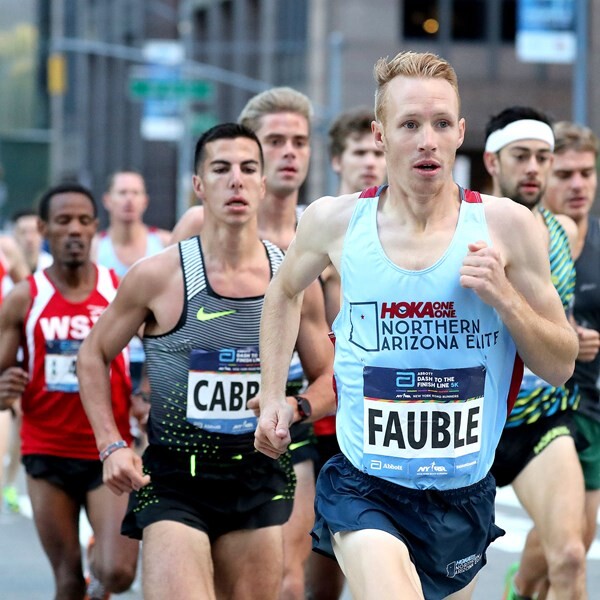
But the Olympic qualifying system for 2024 is far more complicated than in previous years, with ever-shifting world rankings and things like “quota reallocation places” creating confusion among fans and athletes alike. Any athlete ranked in the top 65 of the filtered “Road to Paris” list on January 30, 2024, is considered qualified…except the “Road to Paris” list does not currently exist. After Boston, Fauble, who is currently ranked 122nd* — that’s in the world rankings, which is a different list than “Road to Paris” — tried to take a closer look at where he stood, creating spreadsheets and projecting where he might rank after accounting for time qualifiers, the three-athlete-per-country limit, and potential changes after the 2023 fall marathon season. After a while, his brain began to hurt.
“I felt like the Pepe Silvia meme from It’s Always Sunny in Philadelphia,” Fauble said. “…It was like, this is complicated and stressful and I can just get the standard. This doesn’t need to be an issue.”
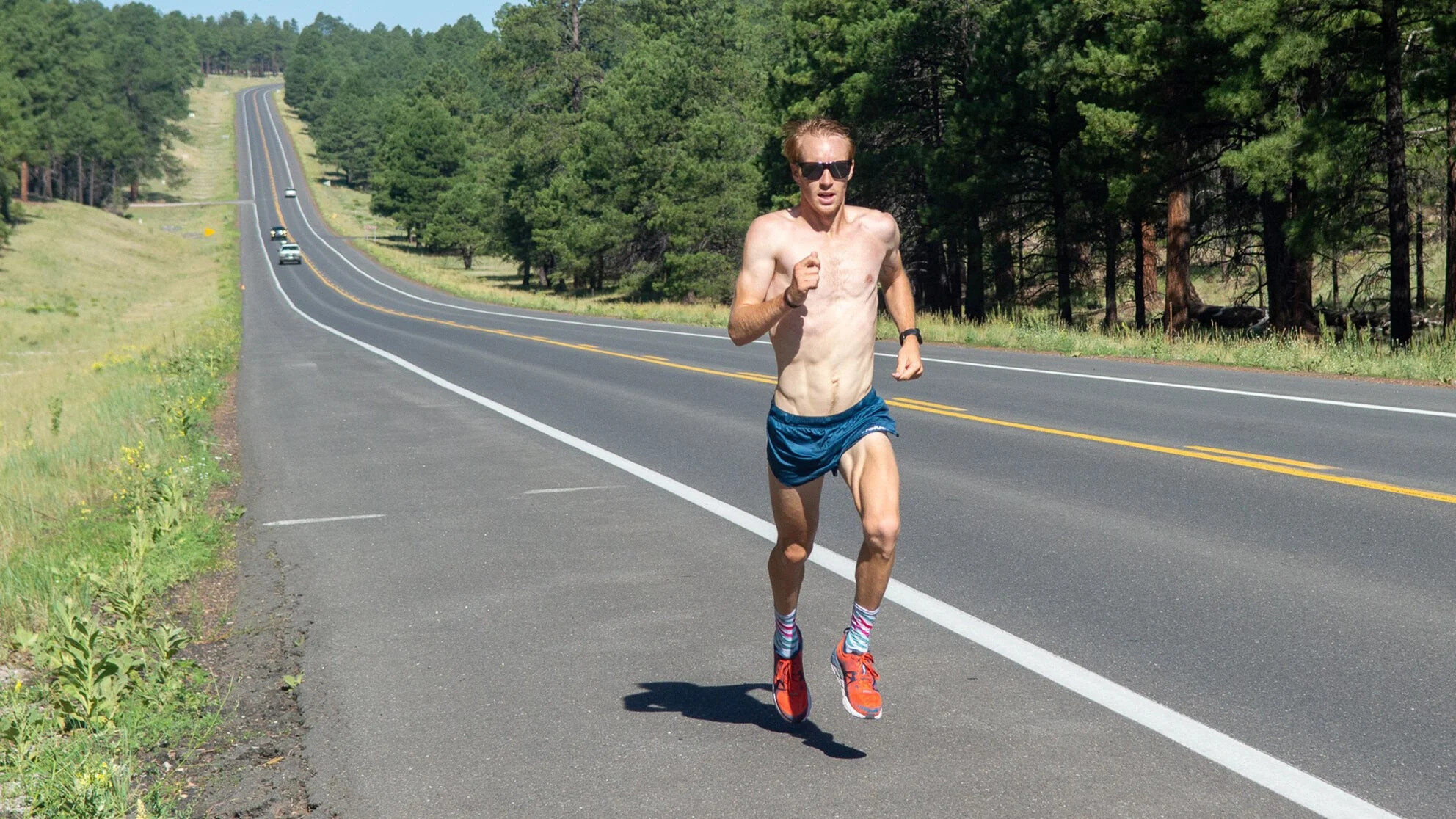
That is why Fauble, begrudgingly, made the decision to run the Berlin Marathon. He was not initially looking forward to the race, but with a strong training block in Boulder behind him and the race just four days away, he has changed his tune.
“I’m very excited,” Fauble said. “I wasn’t planning on doing a fall marathon after Boston and I had to figure out ways to get excited for it and I think that’s one of the things that has fired me up, actually seeing how fast I can go and pushing for a PR as opposed to letting the race play out and seeing what I can do.”
Chasing a time is a dramatically different approach to Fauble’s typical marathon M.O. Of the nine marathons he has run, only two have featured pacemakers: his debut in Frankfurt in 2017, and the Marathon Project in 2020. When Fauble runs Boston and New York, the hilly courses where he has found the greatest success, he does not enter with a goal time in mind. Instead, Fauble will wait until the race begins and assess a number of factors — the weather, how he’s feeling, how fast the other runners are going — before deciding which pace to run. Typically, that has led to Fauble letting the leaders go early and picking off stragglers as they fade over the second half of the race.
Berlin will be different. There are no hills to account for, and while Fauble will still fight for every place, he is not hiding the fact that the primary goal of this race is to hit a time. Specifically, the Olympic standard of 2:08:10. Only five Americans have ever bettered that time in history, but Fauble, who ran his personal best of 2:08:52 in Boston in 2022, believes he is capable of doing it.
“I don’t think that me running in the 2:07s is a huge stretch of the imagination,” said Fauble, who has removed some of the hillier routes from his training under coach Joe Bosshard but has otherwise prepared similarly for Berlin as he would Boston or New York. “I think I’ve been in that kind of shape a bunch of times.”
Every American marathoner will be rooting for Fauble
Currently, no male American marathoner has earned the 2024 Olympic standard — either by hitting the time standard of 2:08:10 or by finishing in the top five of a Platinum Label Marathon (which includes Berlin). It’s pvery likely someone such as Fauble or Conner Mantz will be ranked in the top 65 of the “Road to Paris” list at the end of January, but with the Olympic Trials less than five months away, US marathoners are getting antsy.
American pros rarely run the Berlin Marathon, typically opting for Chicago or New York in the fall — both of which pay much bigger appearance fees to American runners. But this fall, many are bypassing New York because of the date (just 13 weeks before the Trials) and the course (too slow for a shot at the Olympic standard). A sizeable crew, led by Mantz and Galen Rupp, will be in Chicago, while a far larger number than usual have opted for Berlin.
Berlin’s course is just as fast as Chicago’s, if not faster. It’s also two weeks before Chicago — an extra two weeks to prepare for the Trials — and the weather is typically a little better in Berlin than Chicago. That’s why Keira D’Amato opted for Berlin over Chicago for her American record attempt last year. It’s also why 60:02 half marathoner Teshome Mekonen — another American targeting the Olympic standard this fall — chose Berlin over Chicago.
In addition to Fauble and Mekonen, the 2023 Berlin field also includes 2016 Olympian Jared Ward, 2021 Olympian Jake Riley, and Tyler Pennel, who has finished 5th and 11th at the last two Olympic Marathon Trials. All of them will be looking to run fast. And every other American marathoner will be hoping they do the same.
That’s because of a new provision in the Olympic qualification system which states that any country with three qualified athletes may choose to send any three athletes it wants to Paris — as long as they have run at least 2:11:30 (men) or 2:29:30 (women) within the qualifying window. That’s why every American will be rooting for Fauble and others to run fast this fall: if the US has three athletes with the standard, then anyone who has run under 2:11:30 has the opportunity to make the team by finishing in the top three at the Trials.
The above provision, which World Athletics is referring to as “quota reallocation” means that someone such as Fauble could run the Olympic standard and open up a spot in Paris for an American athlete who ends up beating him at the Trials — thus taking a spot that would not otherwise be available had Fauble not run the standard. Fauble, obviously, is hoping such a scenario does not come to pass. But he is aware of the possibility and has accepted it as part of his reality.
“I don’t mind it,” Fauble said. “Sports have never really been about identifying the best team or the best athlete. They’re an entertainment product and they overemphasize very specific days on the calendar. Even if I was the only one with the standard and I get beat at the Trials, the 73-9 Warriors didn’t win the NBA title that year. You’ve gotta do it on the big days. That’s what being a professional athlete is about.”
(09/21/2023) Views: 426 ⚡AMPby Jonathan Gault
BMW Berlin Marathon
The story of the BERLIN-MARATHON is a story of the development of road running. When the first BERLIN-MARATHON was started on 13th October 1974 on a minor road next to the stadium of the organisers‘ club SC Charlottenburg Berlin 286 athletes had entered. The first winners were runners from Berlin: Günter Hallas (2:44:53), who still runs the BERLIN-MARATHON today, and...
more...Cam Levins to race close to home at Royal Victoria Half-Marathon
Canada’s marathon and half-marathon record holder Cam Levins has chosen to race close to home at the Royal Victoria Half-Marathon on Oct. 8, in his preparations for the 2023 TCS New York City Marathon on Nov. 5.
Last week, Levins pulled out of the half-marathon at the 2023 World Athletics Road Running Championships in Riga, Latvia. Levins said he underestimated how significant the travel and recovery would be to and from the event. The championships would be a 20-hour trip for Levins each way with two layovers if he flew from his home in Portland, Ore. Levins and his coach Jim Finlayson decided the long trip would not be ideal in his build for New York.
Canada’s marathon and half-marathon record holder Cam Levins has chosen to race close to home at the Royal Victoria Half-Marathon on Oct. 8, in his preparations for the 2023 TCS New York City Marathon on Nov. 5.
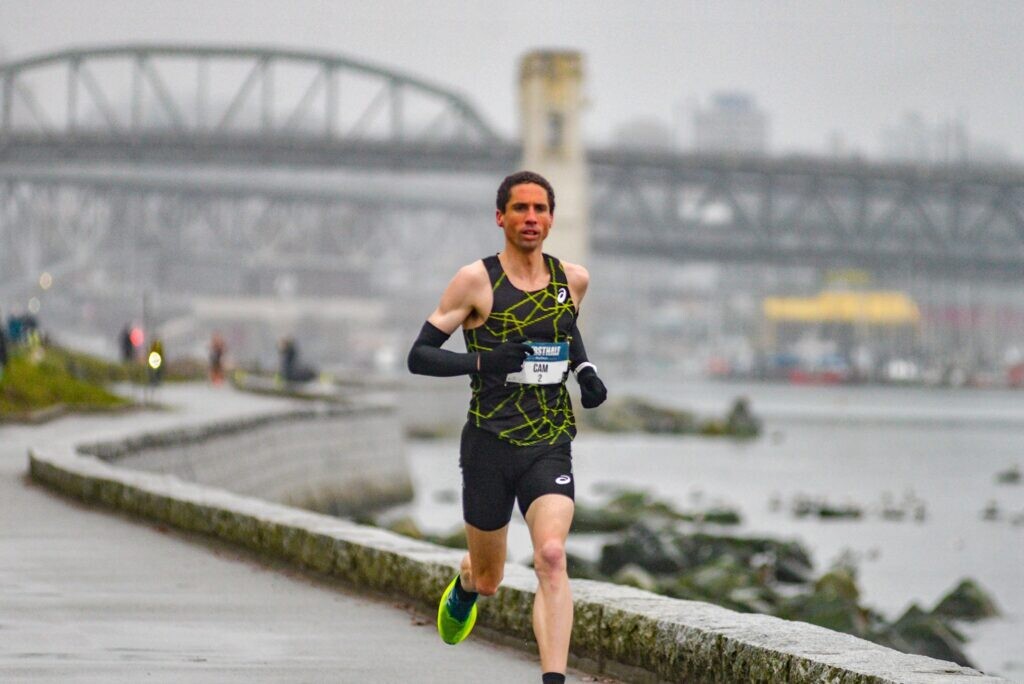
Last week, Levins pulled out of the half-marathon at the 2023 World Athletics Road Running Championships in Riga, Latvia. Levins said he underestimated how significant the travel and recovery would be to and from the event. The championships would be a 20-hour trip for Levins each way with two layovers if he flew from his home in Portland, Ore. Levins and his coach Jim Finlayson decided the long trip would not be ideal in his build for New York.
The half-marathon will be close to home for Levins, who grew up three hours north of Victoria in Black Creek, B.C., where his parents, Gus and Barb Levins, still reside.
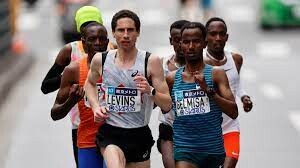
The Royal Victoria Marathon weekend is experiencing a resurgence after being disrupted by the pandemic. Last year saw the long-awaited return of the marathon, with 7,934 participants coming back after the pandemic hiatus. This year, organizers are optimistic about the event’s growth, aiming to reach 10,000 participants.
In March, the 34-year-old broke his Canadian marathon record for the second time in less than a year, clocking an impressive 2:05:36 for fifth place at the 2023 Tokyo Marathon. This was also the fastest time ever recorded by a North American, surpassing American Khalid Khannouchi’s 2:05:38 from the 2002 London Marathon.
Levins’s remarkable run in Tokyo not only met the Olympic standard of 2:08:10 but also secured his spot on Team Canada’s marathon squad for the 2024 Paris Olympics next July. His journey to the 2023 New York Marathon in November is all in preparation for his pursuit of Olympic glory in Paris, which is expected to be one of the most difficult Olympic marathon courses to date.
(09/21/2023) Views: 352 ⚡AMPby Marley Dickinson
Royal Victoria Marathon
We are one of Canada's premier running event, offering athletes an unmatchable running experience on the pristine West Coast. Our world-class, record-breaking course is designed by runners, for runners. As the only Certified Boston Qualifier on Vancouver Island, come join us to compete, to conquer and to move from warm-up to reward. ...
more...What are isometric exercises, and why should runners do them?
If you haven’t tried isometric exercises (or are unclear on what the term means) you’re not alone. This oft-neglected type of strength training involves contracting a muscle without changing its length, with no visible movement at the joint. Instead of the muscle lengthening or shortening, as it does in isotonic exercises (like bicep curls or squats, for example), the muscle remains static, exerting force against an immovable object or resisting an opposing force.
Isometric exercises are characterized by holding a position (or maintaining a contraction) for a set period. Because they require little to no equipment, isometric exercises super easy and convenient, and perfect to add to your routine tonight.
Why isometric exercises?
For runners, isometric exercises are often used in injury rehab, because they allow you to strengthen certain muscles without putting excessive strain on injured tissues. They’re time-efficient, targeting specific muscle groups, and easily integrated into a warmup or cool-down. They can also help build strength and stability in specific muscle groups, which is essential for maintaining proper running form, building endurance and preventing injuries.

Planks
Planks build postural strength around your lower core, which is essential for maintaining good biomechanics, especially when you’re feeling fatigued near the end of a hard run or race.
Begin in a push-up position and straighten your arms, tighten your core and straighten your legs. Focus on keeping your butt in a straight line between your shoulders and heels.

Once you have your body positioned, hold the push-up position for two to three minutes. Stop when you can no longer hold the pose–having good technique is more important than how long you can hold the plank. Add 30-second increments until can hold for several minutes.
Try different plank variations, supporting yourself on your elbows, or by lifting one leg toward your chest. Advance to adding side planks.
Single-leg balance
Standing on one leg for an extended period (with eyes open, which is easiser, or closed, which is more challenging) can help improve balance and stability, which is essential for navigating uneven terrain while running. It can also help with proprioception (awareness of where the ground is in relation to your body), and strengthens the muscles around the ankle, knee, and hip joints.
Find a flat, stable surface to stand on. Begin standing upright with your feet hip-width apart and your arms relaxed at your sides, and shift your weight onto one leg. Keep a slight bend in your knee to avoid locking it.
Engage your core muscles by gently pulling your navel toward your spine, and slowly lift the foot of your non-weight-bearing leg off the ground, bringing it to a position where it is just hovering above the floor. Your raised thigh should be parallel to the ground, and your knee should be bent at a 90-degree angle. You can point your toes or flex your ankle; choose a comfortable position.
Gaze at a fixed spot in front of you to help with balance. Beginners can start by holding 15-30 seconds per leg and gradually work up to 60 seconds or longer as they improve their balance.
Release and repeat on the other side.
Wall-sits
This exercise helps create a powerful and resilient stride, improving leg endurance.
Place your back flat against the wall, and slide down until your thighs are at a 90-degree angle to your back (and to the floor). Keeping your lower back flat against the wall, take a deep breath and hold the sitting or chair position for two to three minutes.
It’s OK if you find that challenging–most beginners struggle to hold until the two-minute mark. Add 30-second increments over time, until you reach seven to 10 minutes or complete fatigue.
(09/21/2023) Views: 402 ⚡AMPby Keeley Milne
Kenyan Caroline Jepchirchir headlines Munich Marathon
Kenya’s Caroline Jepchirchir will lead a strong Kenyan team at the 37th edition of the Generali Munich Marathon scheduled on October 08, 2023 Olympic Stadium in Munich, Germany.
The 35 year-old who is also the reigning Iten Marathon champion, comes to this race with a life time best of 2:26.11 that she got last year at the Enschede Marathon where she finished in fourth place.
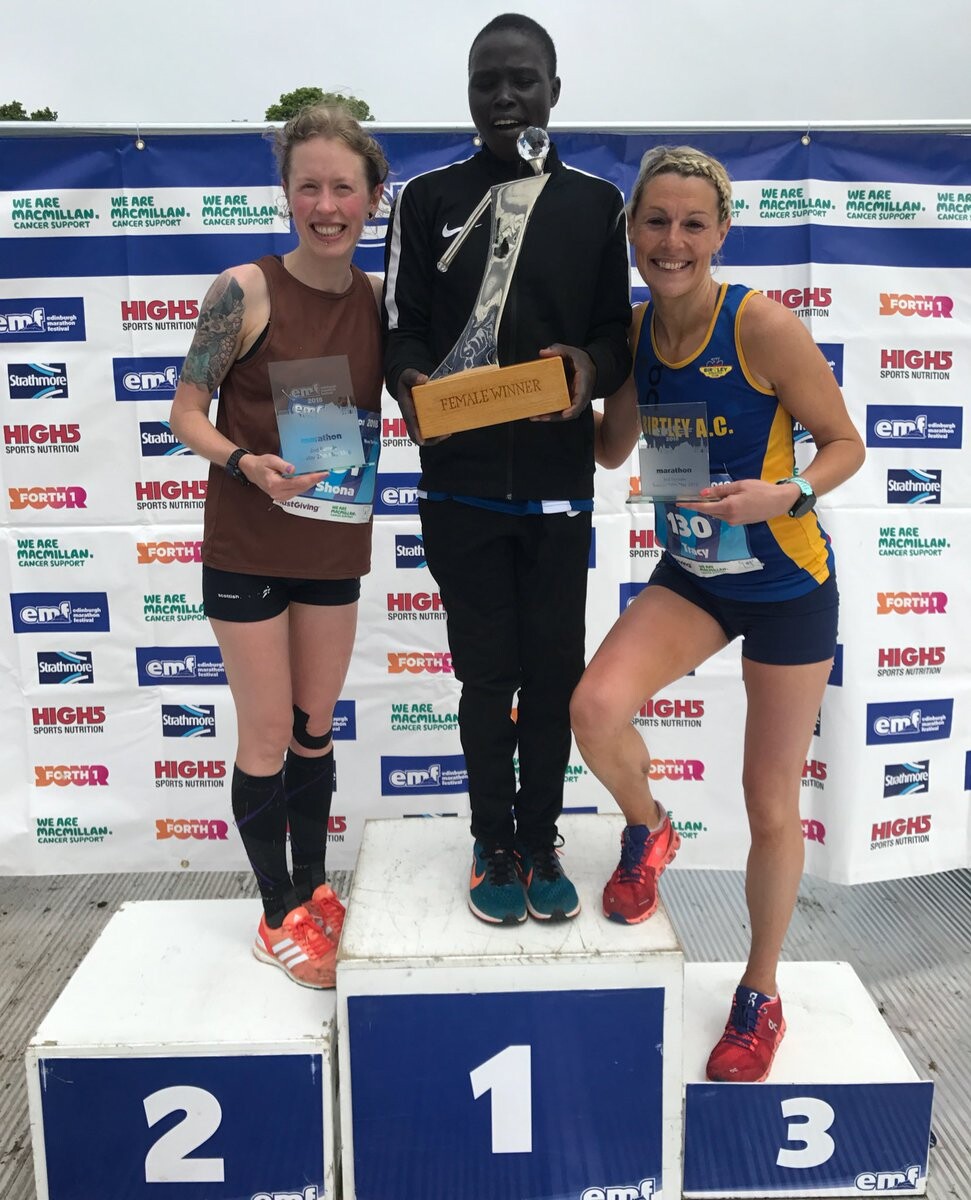
Jepchirchir will have to get past Tecla Chebet who has won six of her seven marathons with her latest being Linz Marathon where she posted her personal best of 2:27.18.
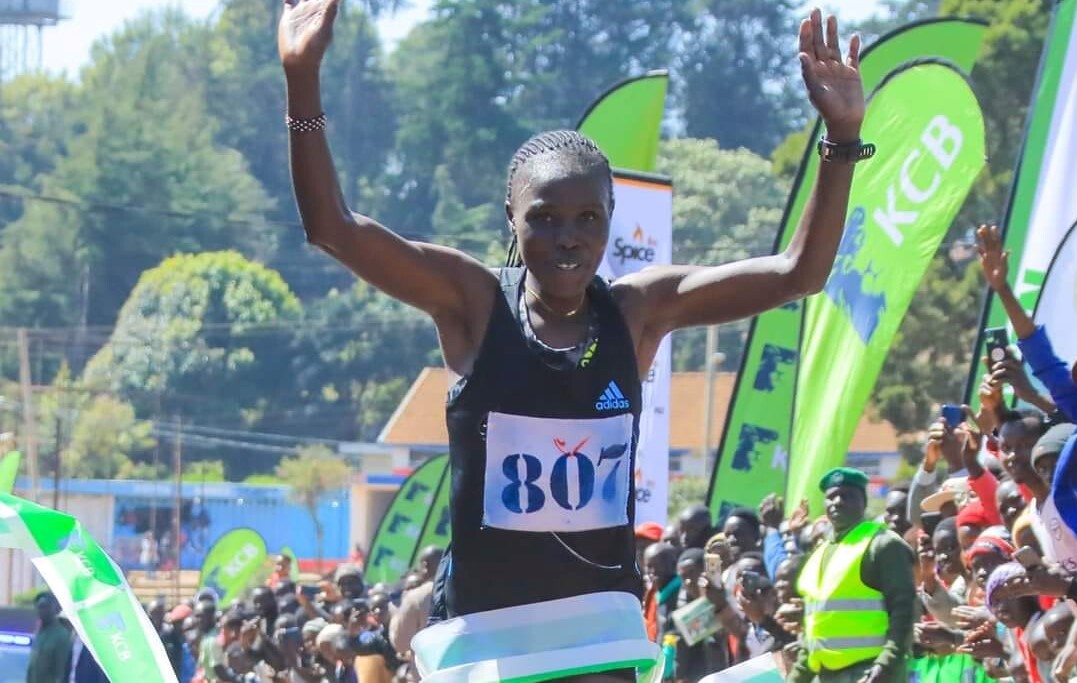
The two Kenyans will be chasing to lower the race course record of 2:23.09 that was set last year by their compatriot Agnes Keiono who destroyed the previous record of 2:33.09 that had stood for thirty one years by Karolina Szabó from Hungary.
“In 2022 we successfully came back with international elite racing and it is now our aim to further establish our position at this higher level. Last year’s course records proved that our course is not only very attractive regarding the sightseeing features but very fast as well. A marathon weekend trip to Munich is definitely worth it, “said Race Director Gernot Weigl.
(09/20/2023) Views: 387 ⚡AMPby John Vaselyne
Generali Munich Marathon
The GENERALI MUNICH MARATHON has held the elite label of the WORLD ATHLETICS since 2020 and the marathon route is officially measured and recognized. The route runs from the Olympic Park and Schwabing to Leopoldstraße with the Siegestor, via Königsplatz and the Pinakotheken to the English Garden. From there past the Chinese Tower and Art Nouveau villas in Bogenhausen, through...
more...Try this long tempo during your marathon build
Tempo runs are a key part of marathon training. With a unique blend of speed and endurance, they have helped many runners reach their personal bests and beyond. We know how great they are, and so does Canadian marathon record holder Natasha Wodak. The workout below is inspired by the tempo session she did before competing in the marathon at the World Track and Field Championships in Budapest, where she landed a the top 15 finish. Even with our modifications, this is a tough workout, so don’t say we didn’t warn you!
Wodak’s workout
2 kilometers at tempo pace, 1:30 rest
8 kilometers, 3:00 rest
2 kilometers, 1:30 rest
6 kilometers, 3:00 rest
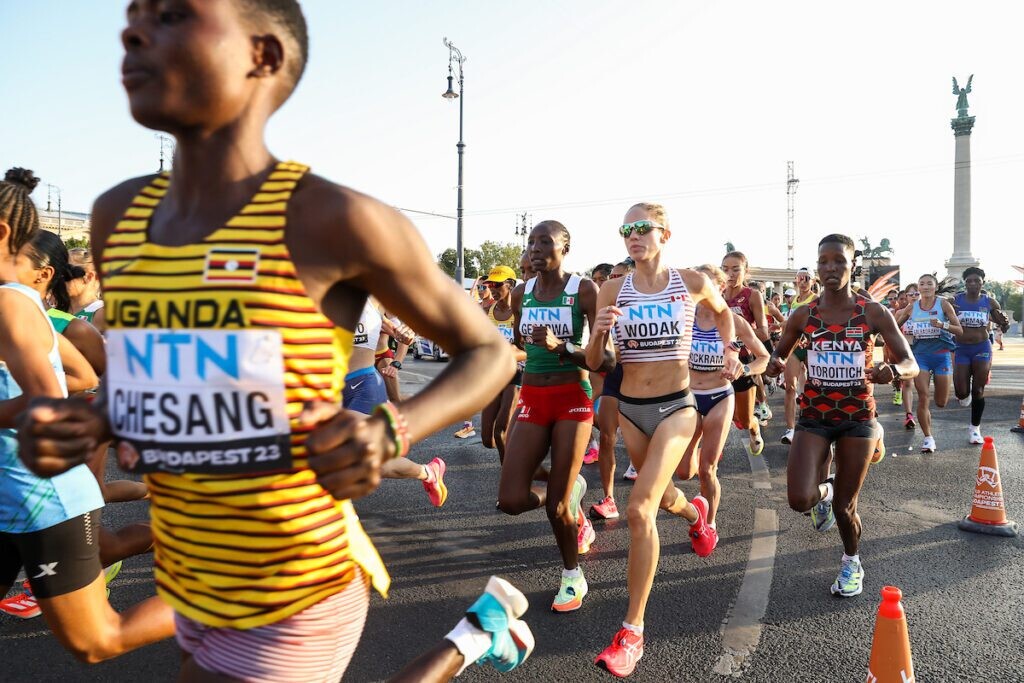
2 kilometers, 1:30 rest
4 kilometers, 3:00 rest
Each 2-kilometer section was run at a slightly faster pace than the longer sections in between. In total, this workout was a whopping 24 kilometres–and that’s without a warmup or a cool down. Of course, this is far too much for us mortals, but we can apply the concept (breaking the tempo run into sections and alternating between slower and faster) and apply it to a more attainable marathon training session.
Modified workout
Our modification to this mammoth workout is simple: cut each section of the tempo in half. That makes the total distance 12 kilometers, which is much more realistic for most runners.
The goal of this workout is to run the one-kilometer sections (i.e. the first, third and fifth intervals) at your goal marathon pace, and the other sections slightly slower. This is a great workout to incorporate into a long run when you’re already doing higher mileage, or to use as a stand-alone tempo day.
Warm-up: 10-15 minutes easy jog
Workout:
1 kilometer at marathon goal pace; 1:30 rest
4 kilometers slightly slower than marathon goal pace; 3:00 rest
1 kilometer at marathon goal pace; 1:30 rest
3 kilometers slightly slower than marathon goal pace; 3:00 rest
1 kilometer at marathon goal pace; 1:30 rest
2 kilometers slightly slower than marathon goal pace
Cooldown: 10-15 minutes easy jog
(09/20/2023) Views: 351 ⚡AMPby Brittany Hambleton
Kenyan Sharon Cherop to chase after personal best at Buenos Aires Marathon
Former world championships bronze medalist Sharon Cherop will be chasing after a personal best at the Buenos Aires marathon set for this Sunday in Argentina.
Cherop, who has a PB of 2:22:28, said she has been hard at work in preparing for the South American race. She wants to atone for her defeat by former world champion Ruth Chenpngetich in the 21km race during the Standard Chartered Marathon last month.

“I really don’t have a specific time that I will be chasing but I want some good time at the end of the day. I want to run better than I did in the half marathon,” said Cherop.
The 2012 Boston Marathon champion said she is buoyed by her performance at April's Milan Marathon, where she clocked 2:26:13.
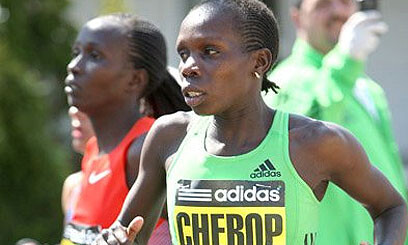
In Milan, she edged out Ethiopian Ethlemahu Sintayehu (2:26:30) and compatriot Emily Chebet (2:28:08).
"I am really trying to come back stronger after being out for so long. I want to have a good time. I pray that it will be favorable this time around,” she said.
The 2002 world junior 5,000m bronze medalist has a good history in marathon running since winning bronze at the 2011 World Championships behind winner Edna Kiplagat and Prisach Jeptoo in an all-Kenyan podium sweep.
The Tirap Primary School alumna also won the Toronto Waterfront Marathon and finished third at the 2011 Boston Marathon before winning the race the following year.
“Weather can also be a factor and as athletes, we always look forward to favorable conditions,” said the former New Delhi Half Marathon silver medalist.
Apart from road running, she also competed at the Discovery Kenya cross country in 2002, where she was third. She has also won the Eldoret City Marathon.
Former world 10,000m silver medalist Paul Tanui will lead the men's contingent that has Cornelius Kibet, and Edwin Kibet among others.
(09/20/2023) Views: 456 ⚡AMPby Emmanuel Sabuni
Buenos Aires Marathon
The Maratón of Buenos Aires is an annual marathon foot-race which takes place in Buenos Aires, Argentina, during the Southern Hemisphere's Spring, usually in October. The 21st edition of the Buenos Aires Marathon started on October 9, 2005 at 7:30 at the 9 de Julio Avenue and Córdoba Avenue in the Recoleta neighborhood, being the start also the end point. ...
more...

